
Info
Mosquero cantando
John James Audubon
1827—1838
Watkinson Library, Trinity College
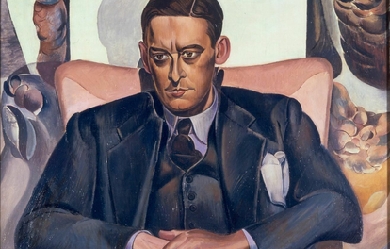
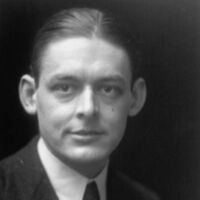
Thomas Stearns Eliot OM (26 September 1888– 4 January 1965) was a British essayist, publisher, playwright, literary and social critic, and “one of the twentieth century’s major poets”. He moved from his native United States to England in 1914 at the age of 25, settling, working, and marrying there. He was eventually naturalised as a British subject in 1927 at the age of 39, renouncing his American citizenship. Eliot attracted widespread attention for his poem “The Love Song of J. Alfred Prufrock” (1915), which was seen as a masterpiece of the Modernist movement. It was followed by some of the best-known poems in the English language, including The Waste Land (1922), “The Hollow Men” (1925), “Ash Wednesday” (1930), and Four Quartets (1943). He was also known for his seven plays, particularly Murder in the Cathedral (1935). He was awarded the Nobel Prize in Literature in 1948, “for his outstanding, pioneer contribution to present-day poetry”.
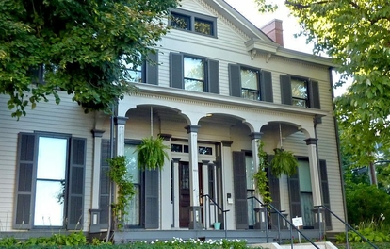
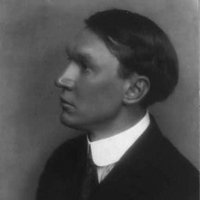
Nicholas Vachel Lindsay (November 10, 1879– December 5, 1931) was an American poet. He is considered a founder of modern singing poetry, as he referred to it, in which verses are meant to be sung or chanted. Crushed by financial worry and in failing health from his six-month road trip, Lindsay sank into depression. While in New York in 1905 Lindsay turned to poetry in earnest. He tried to sell his poems on the streets. Self-printing his poems, he began to barter a pamphlet titled “Rhymes To Be Traded For Bread”, which he traded for food as a self-perceived modern version of a medieval troubadour. On December 5, 1931, he committed suicide by drinking a bottle of Lysol. His last words were: “They tried to get me; I got them first!”

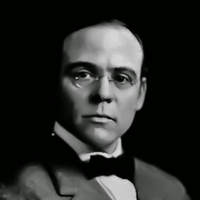
Edgar Lee Masters (August 23, 1868– March 5, 1950) was an American attorney, poet, biographer, and dramatist. He is the author of Spoon River Anthology, The New Star Chamber and Other Essays, Songs and Satires, The Great Valley, The Serpent in the Wilderness An Obscure Tale, The Spleen, Mark Twain: A Portrait, Lincoln: The Man, and Illinois Poems. In all, Masters published twelve plays, twenty-one books of poetry, six novels and six biographies, including those of Abraham Lincoln, Mark Twain, Vachel Lindsay, and Walt Whitman. Life and career Born in Garnett, Kansas to attorney Hardin Wallace Masters and Emma J. Dexter, his father had briefly moved to set up a law practice, then soon moved back to his paternal grandparents’ farm near Petersburg in Menard County, Illinois. In 1880 they moved to Lewistown, Illinois, where he attended high school and had his first publication in the Chicago Daily News. The culture around Lewistown, in addition to the town’s cemetery at Oak Hill, and the nearby Spoon River were the inspirations for many of his works, most notably Spoon River Anthology, his most famous and acclaimed work. He attended Knox Academy in 1889–90, a now defunct preparatory program run by Knox College, but was forced to leave due to his family’s inability to finance his education. After working in his father’s law office, he was admitted to the Illinois bar and moved to Chicago, where he established a law partnership in 1893 with the law firm of Kickham Scanlan. He married twice. In 1898 he married Helen M. Jenkins, the daughter of Robert Edwin Jenkins, a lawyer in Chicago, and had three children. During his law partnership with Clarence Darrow from 1903 to 1908, Masters defended the poor. In 1911 he started his own law firm, despite three years of unrest (1908–11) caused by extramarital affairs and an argument with Darrow. Two of his children followed him with literary careers. His daughter Marcia pursued poetry, while his son Hilary Masters became a novelist. Hilary and his half-brother Hardin wrote a memoir of their father. Masters died at a nursing home on March 5, 1950, in Melrose Park, Pennsylvania, age 81. He is buried in Oakland cemetery in Petersburg, Illinois. His epitaph includes his poem, “To-morrow is My Birthday” from Toward the Gulf (1918): Good friends, let’s to the fields…After a little walk and by your pardon, I think I’ll sleep, there is no sweeter thing.Nor fate more blessed than to sleep. I am a dream out of a blessed sleep-Let’s walk, and hear the lark. Family history Edgar’s father was Hardin Wallace Masters, whose father was Squire Davis Masters, whose father was Thomas Masters, whose father was Hillery Masters, the son of Robert Masters (born c. 1715, Prince George’s County, Maryland, the son of William W. Masters and wife Mary Veatch Masters). Edgar Lee Masters wrote in his autobiography, Across Spoon River (1936), that his ancestor Hillery Masters was the son of “Knotteley” Masters, but family genealogies show that Hillery and Notley Masters were, in fact, brothers. Poetry Masters first published his early poems and essays under the pseudonym Dexter Wallace (after his mother’s maiden name and his father’s middle name) until the year 1903, when he joined the law firm of Clarence Darrow. Masters began developing as a notable American poet in 1914, when he began a series of poems (this time under the pseudonym Webster Ford) about his childhood experiences in Western Illinois, which appeared in Reedy’s Mirror, a St. Louis publication. In 1915 the series was bound into a volume and re-titled Spoon River Anthology. Years later, he wrote a memorable and invaluable account of the book’s background and genesis, his working methods and influences, as well as its reception by the critics, favorable and hostile, in an autobiographical article notable for its human warmth and general interest. Although he never matched the success of his Spoon River Anthology, he did publish several other volumes of poems including Book of Verses in 1898, Songs and Sonnets in 1910, The Great Valley in 1916, Song and Satires in 1916, The Open Sea in 1921, The New Spoon River in 1924, Lee in 1926, Jack Kelso in 1928, Lichee Nuts in 1930, Gettysburg, Manila, Acoma in 1930, Godbey, sequel to Jack Kelso in 1931, The Serpent in the Wilderness in 1933, Richmond in 1934, Invisible Landscapes in 1935, The Golden Fleece of California in 1936, Poems of People in 1936, The New World in 1937, More People in 1939, Illinois Poems in 1941, and Along the Illinois in 1942. Lincoln: the Man In 1931 Masters published the biography Lincoln: the Man, which demythologizes Abraham Lincoln, portraying him as a tool of bankers wanting a new Bank of the United States, “that political system which doles favors to the strong in order to win and keep their adherence to the government”, and advocates “a people taxed to make profits for enterprises that cannot stand alone”. He claimed the Whig Party led by Lincoln’s mentor Henry Clay “had no platform to announce because its principles were plunder and nothing else.” Quotations from the book: “The political history of America has been written for the most part by those who were unfriendly to the theory of a confederated republic, or who did not understand it. It has been written by devotees of the protective principle [tariff], by centralists, and to a large degree by New England.” “For in six weeks he was to inaugurate a war without the American people having anything to say about it. He was to call for and send troops into the South, and thus stir that psychology of hate and fear from which a people cannot extricate themselves, though knowing and saying that the war was started by usurpation. Did he mean that he would bow to the American people when the law was laid down by their courts, through which alone the law be interpreted as the Constitutional voice of the people? No, he did not mean that; because when Taney decided that Lincoln had no power to suspend the writ of habeas corpus, Lincoln flouted and trampled the decision of the court.” “The War between the States demonstrated that salvation is not of the Jews, but of the Greeks. The World War added to this proof; for Wilson did many things that Lincoln did, and with Lincoln as authority for doing them. Perhaps it will happen again that a few men, deciding what is a cause of war, and what is necessary to its successful prosecution, may, as Lincoln and Wilson did, seal the lips of discussion and shackle the press; but no less the ideal of a just state, which has founded itself in reason and in free speech, will remain.” Notable works Poetry * A Book of Verses (1898) * Songs and Sonnets (1910) * Spoon River Anthology (1915) * Songs and Satires (1916) * Fiddler Jones (1916) * The Great Valley (New York: Macmillan Co., 1916) * Toward the Gulf (New York: Macmillan Co., 1918) * Starved Rock (New York: Macmillan Co., 1919) * Jack Kelso: A Dramatic Poem (1920) * Domesday Book (New York: Macmillan Co., 1920) * The Open Sea (New York: Macmillan Co., 1921) * The New Spoon River (New York: Macmillan Co., 1924) * Selected Poems (1925) * Lichee-Nut Poems (American Mercury, Jan. 1925) * Lee: A Dramatic Poem (1926) * Godbey: A Dramatic Poem (1931), sequel to Jack Kelso (1920) * The Serpent in the Wilderness (1933) * Richmond: A Dramatic Poem (1934) * Invisible Landscapes (1935) * Poems of People (1936) * The Golden Fleece of California (1936) (poetic narrative) * The New World (1937) * More People (1939) * Illinois Poems (1941) * Along the Illinois (1942) * Silence (1946) * George Gray * Many Soldiers * The Unknown Biographies * Children of the Market Place: A Fictitious Autobiography (New York: Macmillan Co., 1922). Life of Stephen Douglas. * Levy Mayer and the New Industrial Era (New Haven: Yale University Press, 1927). Chicago attorney Levy Mayer (1858-1922). * Lincoln: The Man (1931) * Vachel Lindsay: A Poet in America (1935) * Across Spoon River: An Autobiography (memoir) (1936) * Whitman (1937) * Mark Twain: A Portrait (1938) Books * The New Star Chamber and Other Essays (1904) * The Blood of the Prophets (1905) (play) * Althea (1907) (play) * The Trifler (1908) (play) * Mitch Miller (novel) (1920) * Skeeters Kirby (novel) (1923) * The Nuptial Flight (novel) (1923) * Kit O’Brien (novel) (1927) * The Fate of the Jury: An Epilogue to Domesday Book (1929) * Gettysburg, Manila, Acoma: Three Plays (1930) * The Tale of Chicago (1933) * The Tide of Time (novel) (1937) * The Sangamon (Chicago: University of Illinois Press, 1942, 1988) Awards & honors Masters was awarded the Mark Twain Silver Medal in 1936, the Poetry Society of America medal in 1941, the Academy of American Poets Fellowship in 1942, and the Shelly Memorial Award in 1944. In 2014, he was inducted into the Chicago Literary Hall of Fame. References Wikipedia—https://en.wikipedia.org/wiki/Edgar_Lee_Masters
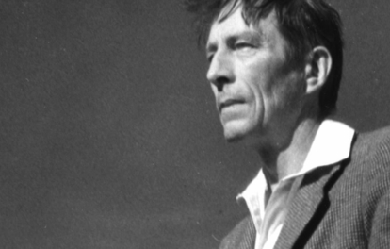
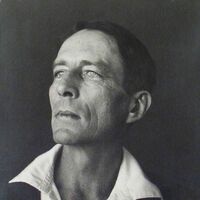
John Robinson Jeffers (January 10, 1887 – January 20, 1962) was an American poet, known for his work about the central California coast. Much of Jeffers' poetry was written in narrative and epic form, but he is also known for his shorter verse and is considered an icon of the environmental movement. Influential and highly regarded in some circles, despite or because of his philosophy of "inhumanism," Jeffers believed that transcending conflict required human concerns to be de-emphasized in favor of the boundless whole. This led him to oppose U.S. participation in World War II, a stand that was controversial at the time. Jeffers was born in Allegheny, Pennsylvania (now part of Pittsburgh), the son of a Presbyterian minister and biblical scholar, Reverend Dr. William Hamilton Jeffers, and Annie Robinson Tuttle. His brother was Hamilton Jeffers, who became a well-known astronomer, working at Lick Observatory. His family was supportive of his interest in poetry. He traveled through Europe during his youth and attended school in Switzerland. He was a child prodigy, interested in classics and Greek and Latin language and literature. At sixteen he entered Occidental College. At school, he was an avid outdoorsman, and active in the school's literary societies. After he graduated from Occidental, Jeffers went to the University of Southern California to study at first literature, and then medicine. He met Una Call Kuster in 1906; she was three years older than he was, a graduate student, and the wife of a Los Angeles attorney. In 1910 he enrolled as a forestry student at the University of Washington in Seattle, a course of study that he abandoned after less than one year, at which time he returned to Los Angeles. Sometime before this, he and Una had begun an affair that became a scandal, reaching the front page of the Los Angeles Times in 1912. After Una spent some time in Europe to quiet things down, the two were married in 1913, and moved to Carmel, California, where Jeffers constructed Tor House and Hawk Tower. The couple had a daughter who died a day after birth in 1914, and then twin sons (Donnan and Garth) in 1916. Una died of cancer in 1950. Jeffers died in 1962; an obituary can be found in the New York Times, January 22, 1962. Poetic career In the 1920s and 1930s, at the height of his popularity, Jeffers was famous for being a tough outdoorsman, living in relative solitude and writing of the difficulty and beauty of the wild. He spent most of his life in Carmel, California, in a granite house that he had built himself called "Tor House and Hawk Tower". Tor is a term for a craggy outcrop or lookout. Before Jeffers and Una purchased the land where Tor House would be built, they rented two cottages in Carmel, and enjoyed many afternoon walks and picnics at the "tors" near the site that would become Tor House. To build the first part of Tor House, a small, two story cottage, Jeffers hired a local builder, Michael Murphy. He worked with Murphy, and in this short, informal apprenticeship, he learned the art of stonemasonry. He continued adding on to Tor House throughout his life, writing in the mornings and working on the house in the afternoon. Many of his poems reflect the influence of stone and building on his life. He later built a large four-story stone tower on the site called Hawk Tower. While he had not visited Ireland at this point in his life, it is possible that Hawk Tower is based on Francis Joseph Bigger's 'Castle Séan' at Ardglass, County Down, which had also in turn influenced Yeats' poets tower, Thoor Ballylee. Construction on Tor House continued into the late 1950s and early 1960s, and was completed by his eldest son. The completed residence was used as a family home until his descendants decided to turn it over to the Tor House Foundation, formed by Ansel Adams, for historic preservation. The romantic Gothic tower was named after a hawk that appeared while Jeffers was working on the structure, and which disappeared the day it was completed. The tower was a gift for his wife Una, who had a fascination for Irish literature and stone towers. In Una's special room on the second floor were kept many of her favorite items, photographs of Jeffers taken by the artist Weston, plants and dried flowers from Shelley's grave, and a rosewood melodeon which she loved to play. The tower also included a secret interior staircase – a source of great fun for his young sons. During this time, Jeffers published volumes of long narrative blank verse that shook up the national literary scene. These poems, including Tamar and Roan Stallion, introduced Jeffers as a master of the epic form, reminiscent of ancient Greek poets. These poems were full of controversial subject matter such as incest, murder and parricide. Jeffers' short verse includes "Hurt Hawks," "The Purse-Seine" and "Shine, Perishing Republic." His intense relationship with the physical world is described in often brutal and apocalyptic verse, and demonstrates a preference for the natural world over what he sees as the negative influence of civilization. Jeffers did not accept the idea that meter is a fundamental part of poetry, and, like Marianne Moore, claimed his verse was not composed in meter, but "rolling stresses." He believed meter was imposed on poetry by man and not a fundamental part of its nature. nitially, Tamar and Other Poems received no acclaim, but when East Coast reviewers discovered the work and began to compare Jeffers to Greek tragedians, Boni & Liveright reissued an expanded edition as Roan Stallion, Tamar and Other Poems (1925). In these works, Jeffers began to articulate themes that contributed to what he later identified as Inhumanism. Mankind was too self-centered, he complained, and too indifferent to the "astonishing beauty of things." Jeffers's longest and most ambitious narrative, The Women at Point Sur (1927), startled many of his readers, heavily loaded as it was with Nietzschean philosophy. The balance of the 1920s and the early 1930s were especially productive for Jeffers, and his reputation was secure. In 1934, he made the acquaintance of the philosopher J Krishnamurti and was struck by the force of Krishnamurti's person. He wrote a poem entitled "Credo" which many feel refers to Krishnamurti. In Cawdor and Other Poems (1928), Dear Judas and Other Poems (1929), Descent to the Dead, Poems Written in Ireland and Great Britain (1931), Thurso's Landing (1932), and Give Your Heart to the Hawks (1933), Jeffers continued to explore the questions of how human beings could find their proper relationship (free of human egocentrism) with the divinity of the beauty of things. These poems, set in the Big Sur region (except Dear Judas and Descent to the Dead), enabled Jeffers to pursue his belief that the natural splendor of the area demanded tragedy: the greater the beauty, the greater the demand. As Euripides had, Jeffers began to focus more on his own characters' psychologies and on social realities than on the mythic. The human dilemmas of Phaedra, Hippolytus, and Medea fascinated him. Many books followed Jeffers' initial success with the epic form, including an adaptation of Euripides' Medea, which became a hit Broadway play starring Dame Judith Anderson. D. H. Lawrence, Edgar Lee Masters, Benjamin De Casseres, and George Sterling were close friends of Jeffers, Sterling having the longest and most intimate relationship with him. While living in Carmel, Jeffers became the focal point for a small but devoted group of admirers. At the peak of his fame, he was one of the few poets to be featured on the cover of Time Magazine. He was also asked to read at the Library of Congress, and was posthumously put on a U.S. postage stamp. Part of the decline of Jeffers' popularity was due to his staunch opposition to the United States' entering World War II. In fact, his book The Double Axe and Other Poems (1948), a volume of poems that was largely critical of U.S. policy, came with an extremely unconventional note from Random House that the views expressed by Jeffers were not those of the publishing company. Soon after, his work was received negatively by several influential literary critics. Several particularly scathing pieces were penned by Yvor Winters, as well as by Kenneth Rexroth, who had been very positive in his earlier commentary on Jeffers' work. Jeffers would publish poetry intermittently during the 1950s but his poetry never again attained the same degree of popularity that it had in the 1920s and the 1930s. Inhumanism Jeffers coined the word inhumanism, the belief that mankind is too self-centered and too indifferent to the "astonishing beauty of things." In the famous poem "Carmel Point," Jeffers called on humans to "uncenter" themselves. In "The Double Axe," Jeffers explicitly described inhumanism as "a shifting of emphasis and significance from man to notman; the rejection of human solipsism and recognition of the trans-human magnificence. ... This manner of thought and feeling is neither misanthropic nor pessimist. ... It offers a reasonable detachment as rule of conduct, instead of love, hate and envy ... it provides magnificence for the religious instinct, and satisfies our need to admire greatness and rejoice in beauty." In The Loyalties of Robinson Jeffers,the first in-depth study of Jeffers not written by one of his circle, poet and critic J. Radcliffe Squires addresses the question of a reconciliation of the beauty of the world and potential beauty in mankind: “Jeffers has asked us to look squarely at the universe. He has told us that materialism has its message, its relevance, and its solace. These are different from the message, relevance, and solace of humanism. Humanism teaches us best why we suffer, but materialism teaches us how to suffer.” Influence His poems have been translated into many languages and published all over the world. Outside of the United States he is most popular in Japan and the Czech Republic. William Everson, Edward Abbey, Gary Snyder, and Mark Jarman are just a few recent authors who have been influenced by Jeffers. Charles Bukowski remarked that Jeffers was his favorite poet. Polish poet Czesław Miłosz also took an interest in Jeffers' poetry and worked as a translator for several volumes of his poems. Jeffers also exchanged some letters with his Czech translator and popularizer, the poet Kamil Bednář. Writer Paul Mooney (1904–1939), son of American Indian authority James Mooney (1861–1921) and collaborator of travel writer Richard Halliburton (1900–1939), "was known always to carry with him (a volume of Jeffers) as a chewer might carry a pouch of tobacco ... and, like Jeffers," writes Gerry Max in Horizon Chasers, "worshipped nature ... (taking) refuge (from the encroachments of civilization) in a sort of chthonian mysticism rife with Greek dramatic elements ..." Jeffers was an inspiration and friend to western U.S. photographers of the early twentieth century, including Ansel Adams, Edward Weston, and Morley Baer. In fact, the elegant book of Baer's photographs juxtaposed with Jeffers' poetry, combines the creative talents of those two residents of the Big Sur coast. Although Jeffers has largely been marginalized in the mainstream academic community over the last thirty years, several important contemporary literary critics, including Albert Gelpi of Stanford University, and poet, critic and NEA chairman Dana Gioia, have consistently cited Jeffers as a formidable presence in modern literature. His poem "The Beaks of Eagles" was made into a song by The Beach Boys on their album Holland (1973). Two lines from Jeffers' poem "We Are Those People" are quoted toward the end of the 2008 film Visioneers. Several lines from Jeffers' poem "Wise Men in Their Bad Hours" ("Death's a fierce meadowlark: but to die having made / Something more equal to the centuries / Than muscle and bone, is mostly to shed weakness.") appear in Christopher McCandless' diary. Robinson Jeffers is mentioned in the 2004 film I Heart Huckabees by the character Albert Markovski played by Jason Schwartzman, when defending Jeffers as a nature writer against another character's claim that environmentalism is socialism. Markovski says, "Henry David Thoreau, Robinson Jeffers, the National Geographic Society...all socialists?" Further reading and research The largest collections of Jeffers' manuscripts and materials are in the Harry Ransom Humanities Research Center at the University of Texas at Austin and in the libraries at Occidental College, the University of California, and Yale University. A collection of his letters has been published as The Selected Letters of Robinson Jeffers, 1887–1962 (1968). Other books of criticism and poetry by Jeffers are: Poetry, Gongorism and a Thousand Years (1949), Themes in My Poems (1956), Robinson Jeffers: Selected Poems (1965), The Alpine Christ and Other Poems (1974), What Odd Expedients" and Other Poems (1981), and Rock and Hawk: A Selection of Shorter Poems by Robinson Jeffers (1987). Stanford University Press recently released a five-volume collection of the complete works of Robinson Jeffers. In an article titled, "A Black Sheep Joins the Fold", written upon the release of the collection in 2001, Stanford Magazine commented that it was remarkable that, due to a number of circumstances, "there was never an authoritative, scholarly edition of California’s premier bard" until the complete works published by Stanford. Biographical studies include George Sterling, Robinson Jeffers: The Man and the Artist (1926); Louis Adamic, Robinson Jeffers (1929); Melba Bennett, Robinson Jeffers and the Sea (1936) and The Stone Mason of Tor House (1966); Radcliffe Squires, The Loyalties of Robinson Jeffers (1956); Edith Greenan, Of Una Jeffers (1939); Mabel Dodge Luhan, Una and Robin (1976; written in 1933); Ward Ritchie, Jeffers: Some Recollections of Robinson Jeffers (1977); and James Karman, Robinson Jeffers: Poet of California (1987). Books about Jeffers's career include L. C. Powell, Robinson Jeffers: The Man and His Work (1940; repr. 1973); William Everson, Robinson Jeffers: Fragments of an Older Fury (1968); Arthur B. Coffin, Robinson Jeffers: Poet of Inhumanism (1971); Bill Hotchkiss, Jeffers: The Sivaistic Vision (1975); James Karman, ed., Critical Essays on Robinson Jeffers (1990); Alex Vardamis The Critical Reputation of Robinson Jeffers (1972); and Robert Zaller, ed., Centennial Essays for Robinson Jeffers (1991). The Robinson Jeffers Newsletter, ed. Robert Brophy, is a valuable scholarly resource. In a rare recording, Jeffers can be heard reading his "The Day Is A Poem" (September 19, 1939) on Poetry Speaks – Hear Great Poets Read Their Work from Tennyson to Plath, Narrated by Charles Osgood (Sourcebooks, Inc., c2001), Disc 1, #41; including text, with Robert Hass on Robinson Jeffers, pp. 88–95. Jeffers was also on the cover of Time – The Weekly Magazine, April 4, 1932 (pictured on p. 90. Poetry Speaks). Jeffers Studies, a journal of research on the poetry of Robinson Jeffers and related topics, is published semi-annually by the Robinson Jeffers Association. Bibliography * Flagons and Apples. Los Angeles: Grafton, 1912. * Californians. New York: Macmillan, 1916. * Tamar and Other Poems. New York: Peter G. Boyle, 1924. * Roan Stallion, Tamar, and Other Poems. New York: Boni and Liveright, 1925. * The Women at Point Sur. New York: Liveright, 1927. * Cawdor and Other Poems. New York: Liveright, 1928. * Dear Judas and Other Poems. New York: Liveright, 1929. * Thurso's Landing and Other Poems. New York: Liveright, 1932. * Give Your Heart to the Hawks and other Poems. New York: Random House, 1933. * Solstice and Other Poems. New York: Random House, 1935. * Such Counsels You Gave To Me and Other Poems. New York: Random House, 1937. * The Selected Poetry of Robinson Jeffers. New York: Random House, 1938. * Be Angry at the Sun. New York: Random House, 1941. * Medea. New York: Random House, 1946. * The Double Axe and Other Poems. New York: Random House, 1948. * Hungerfield and Other Poems. New York: Random House, 1954. * The Beginning and the End and Other Poems. New York: Random House, 1963. * Robinson Jeffers: Selected Poems. New York: Vintage, 1965. * Stones of the Sur. Stanford: Stanford University Press, 2001. References Wikipedia—https://en.wikipedia.org/wiki/Robinson_Jeffers
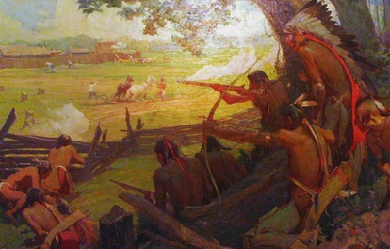
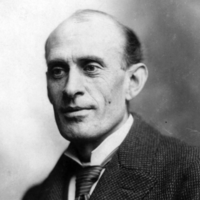
Eugene Field, Sr. (September 2, 1850 – November 4, 1895) was an American writer, best known for his children's poetry and humorous essays. Field was born in St. Louis, Missouri where today his boyhood home is open to the public as The Eugene Field House and St. Louis Toy Museum. After the death of his mother in 1856, he was raised by a cousin, Mary Field French, in Amherst, Massachusetts.


George Henry Boker (October 6, 1823 – January 2, 1890) was an American poet, playwright, and diplomat. Boker was born in Philadelphia, Pennsylvania. His father was Charles S. Boker, a wealthy banker, whose financial expertness weathered the Girard National Bank through the panic years of 1838-40, and whose honour, impugned after his 1857 death, was defended many years later by his son in “The Book of the Dead.” Charles Boker was also a director of the Mechanics National Bank.
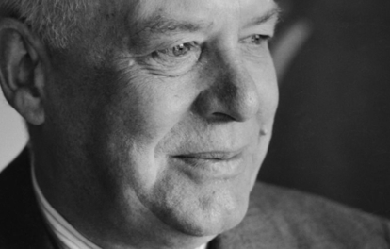
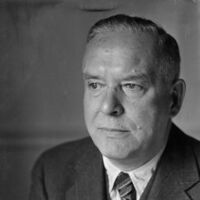
Wallace Stevens was born in Reading, Pennsylvania, on October 2, 1879. He attended Harvard University as an undergraduate from 1897 to 1900. He planned to travel to Paris as a writer, but after a working briefly as a reporter for the New York Herald Times, he decided to study law. He graduated with a degree from New York Law School in 1903 and was admitted to the U.S. Bar in 1904. He practised law in New York City until 1916. Though he had serious determination to become a successful lawyer, Stevens had several friends among the New York writers and painters in Greenwich Village, including the poets William Carlos Williams, Marianne Moore, and E. E. Cummings. In 1914, under the pseudonym "Peter Parasol," he sent a group of poems under the title "Phases" to Harriet Monroe for a war poem competition for Poetry magazine. Stevens did not win the prize, but was published by Monroe in November of that year. Stevens moved to Connecticut in 1916, having found employment at the Hartford Accident and Indemnity Co., of which he became vice president in 1934. He had began to establish an identity for himself outside the world of law and business, however, and his first book of poems, Harmonium, published in 1923, exhibited the influence of both the English Romantics and the French symbolists, an inclination to aesthetic philosophy, and a wholly original style and sensibility: exotic, whimsical, infused with the light and color of an Impressionist painting. For the next several years, Stevens focused on his business life. He began to publish new poems in 1930, however, and in the following year, Knopf published an second edition of Harmonium, which included fourteen new poems and left out three of the decidedly weaker ones. More than any other modern poet, Stevens was concerned with the transformative power of the imagination. Composing poems on his way to and from the office and in the evenings, Stevens continued to spend his days behind a desk at the office, and led a quiet, uneventful life. Though now considered one of the major American poets of the century, he did not receive widespread recognition until the publication of his Collected Poems, just a year before his death. His major works include Ideas of Order (1935), The Man With the Blue Guitar (1937), Notes Towards a Supreme Fiction (1942), and a collection of essays on poetry, The Necessary Angel (1951). Stevens died in Hartford in 1955. Poetry Harmonium (1923) Ideas of Order (1935) Owl's Clover (1936) The Man With the Blue Guitar (1937) Notes Towards a Supreme Fiction (1942) Parts of a World (1942) Esthétique du Mal (1945) Three Academic Pieces (1947) Transport to Summer (1947) Primitive Like an Orb (1948) Auroras of Autumn (1950) Collected Poems (1954) Opus Posthumous (1957) The Palm at the End of the Mind (1967) Prose The Necessary Angel (1951) Plays Three Travellers Watch the Sunrise (1916) Carlos Among the Candles (1917) References Poets.org — http://www.poets.org/poet.php/prmPID/124
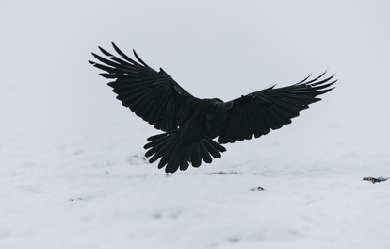
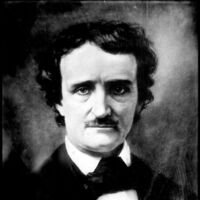
Edgar Allan Poe (born Edgar Poe, January 19, 1809 – October 7, 1849) was an American author, poet, editor and literary critic, considered part of the American Romantic Movement. Best known for his tales of mystery and the macabre, Poe was one of the earliest American practitioners of the short story and is considered the inventor of the detective fiction genre. He is further credited with contributing to the emerging genre of science fiction. He was the first well-known American writer to try to earn a living through writing alone, resulting in a financially difficult life and career. He was born as Edgar Poe in Boston, Massachusetts; he was orphaned young when his mother died shortly after his father abandoned the family. Poe was taken in by John and Frances Allan, of Richmond, Virginia, but they never formally adopted him. He attended the University of Virginia for one semester but left due to lack of money. After enlisting in the Army and later failing as an officer's cadet at West Point, Poe parted ways with the Allans. His publishing career began humbly, with an anonymous collection of poems, Tamerlane and Other Poems (1827), credited only to “a Bostonian”.
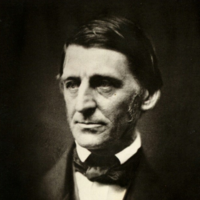
Ralph Waldo Emerson (May 25, 1803 – April 27, 1882) was an American essayist, lecturer, and poet, who led the Transcendentalist movement of the mid-19th century. He was seen as a champion of individualism and a prescient critic of the countervailing pressures of society, and he disseminated his thoughts through dozens of published essays and more than 1, public lectures across the United States. Emerson gradually moved away from the religious and social beliefs of his contemporaries, formulating and expressing the philosophy of Transcendentalism in his 1836 essay, Nature. Following this ground-breaking work, he gave a speech entitled The American Scholar in 1837, which Oliver Wendell Holmes, Sr. considered to be America's "Intellectual Declaration of Independence". Emerson wrote most of his important essays as lectures first, then revised them for print. His first two collections of essays – Essays: First Series and Essays: Second Series, published respectively in 1841 and 1844 – represent the core of his thinking, and include such well-known essays as Self-Reliance, The Over-Soul, Circles, The Poet and Experience. Together with Nature, these essays made the decade from the mid-1830s to the mid-1840s Emerson's most fertile period. Emerson wrote on a number of subjects, never espousing fixed philosophical tenets, but developing certain ideas such as individuality, freedom, the ability for humankind to realize almost anything, and the relationship between the soul and the surrounding world. Emerson's "nature" was more philosophical than naturalistic; "Philosophically considered, the universe is composed of Nature and the Soul." While his writing style can be seen as somewhat impenetrable, and was thought so even in his own time, Emerson's essays remain among the linchpins of American thinking, and Emerson's work has greatly influenced the thinkers, writers and poets that have followed him. When asked to sum up his work, he said his central doctrine was "the infinitude of the private man.” Early life, family, and education Emerson was born in Boston, Massachusetts on May 25, 1803, son of Ruth Haskins and the Rev. William Emerson, a Unitarian minister. He was named after his mother's brother Ralph and the father's great-grandmother Rebecca Waldo. Ralph Waldo was the second of five sons who survived into adulthood; the others were William, Edward, Robert Bulkeley, and Charles. Three other children—Phebe, John Clarke, and Mary Caroline–died in childhood. The young Ralph Waldo Emerson's father died from stomach cancer on May 12, 1811, less than two weeks before Emerson's eighth birthday. Emerson was raised by his mother, with the help of the other women in the family; his aunt Mary Moody Emerson in particular had a profound effect on Emerson. She lived with the family off and on, and maintained a constant correspondence with Emerson until her death in 1863. Emerson's formal schooling began at the Boston Latin School in 1812 when he was nine. In October 1817, at 14, Emerson went to Harvard College and was appointed freshman messenger for the president, requiring Emerson to fetch delinquent students and send messages to faculty. Midway through his junior year, Emerson began keeping a list of books he had read and started a journal in a series of notebooks that would be called "Wide World". He took outside jobs to cover his school expenses, including as a waiter for the Junior Commons and as an occasional teacher working with his uncle Samuel in Waltham, Massachusetts. By his senior year, Emerson decided to go by his middle name, Waldo. Emerson served as Class Poet; as was custom, he presented an original poem on Harvard's Class Day, a month before his official graduation on August 29, 1821, when he was 18. He did not stand out as a student and graduated in the exact middle of his class of 59 people. In 1826, faced with poor health, Emerson went to seek out warmer climates. He first went to Charleston, South Carolina, but found the weather was still too cold. He then went further south, to St. Augustine, Florida, where he took long walks on the beach, and began writing poetry. While in St. Augustine, he made the acquaintance of Prince Achille Murat. Murat, the nephew of Napoleon Bonaparte, was only two years his senior; they became extremely good friends and enjoyed one another's company. The two engaged in enlightening discussions on religion, society, philosophy, and government, and Emerson considered Murat an important figure in his intellectual education. While in St. Augustine, Emerson had his first experience of slavery. At one point, he attended a meeting of the Bible Society while there was a slave auction taking place in the yard outside. He wrote, "One ear therefore heard the glad tidings of great joy, whilst the other was regaled with 'Going, gentlemen, going’!” Early career After Harvard, Emerson assisted his brother William in a school for young women established in their mother's house, after he had established his own school in Chelmsford, Massachusetts; when his brother William went to Göttingen to study divinity, Emerson took charge of the school. Over the next several years, Emerson made his living as a schoolmaster, then went to Harvard Divinity School. Emerson's brother Edward, two years younger than he, entered the office of lawyer Daniel Webster, after graduating Harvard first in his class. Edward's physical health began to deteriorate and he soon suffered a mental collapse as well; he was taken to McLean Asylum in June 1828 at age 23. Although he recovered his mental equilibrium, he died in 1834 from apparently longstanding tuberculosis. Another of Emerson's bright and promising younger brothers, Charles, born in 1808, died in 1836, also of tuberculosis, making him the third young person in Emerson's innermost circle to die in a period of a few years. Emerson met his first wife, Ellen Louisa Tucker, in Concord, New Hampshire on Christmas Day, 1827, and married her when she was 18. The couple moved to Boston, with Emerson's mother Ruth moving with them to help take care of Ellen, who was already sick with tuberculosis. Less than two years later, Ellen died at the age of 20 on February 8, 1831, after uttering her last words: "I have not forgot the peace and joy." Emerson was heavily affected by her death and visited her grave in Roxbury daily. In a journal entry dated March 29, 1832, Emerson wrote, "I visited Ellen's tomb & opened the coffin." Boston's Second Church invited Emerson to serve as its junior pastor and he was ordained on January 11, 1829. His initial salary was $1, a year, increasing to $1, in July, but with his church role he took on other responsibilities: he was chaplain to the Massachusetts legislature, and a member of the Boston school committee. His church activities kept him busy, though during this period, facing the imminent death of his wife, he began to doubt his own beliefs. After his wife's death, he began to disagree with the church's methods, writing in his journal in June 1832: "I have sometimes thought that, in order to be a good minister, it was necessary to leave the ministry. The profession is antiquated. In an altered age, we worship in the dead forms of our forefathers." His disagreements with church officials over the administration of the Communion service and misgivings about public prayer eventually led to his resignation in 1832. As he wrote, "This mode of commemorating Christ is not suitable to me. That is reason enough why I should abandon it." As one Emerson scholar has pointed out, "Doffing the decent black of the pastor, he was free to choose the gown of the lecturer and teacher, of the thinker not confined within the limits of an institution or a tradition." Emerson toured Europe in 1833 and later wrote of his travels in English Traits (1857). He left aboard the brig Jasper on Christmas Day, 1832, sailing first to Malta. During his European trip, he spent several months in Italy, visiting Rome, Florence and Venice, among other cities. When in Rome, he met with John Stuart Mill, who gave him a letter of recommendation to meet Thomas Carlyle. He went to Switzerland, and had to be dragged by fellow passengers to visit Voltaire's home in Ferney, "protesting all the way upon the unworthiness of his memory." He then went on to Paris, a "loud modern New York of a place,", where he visited the Jardin des Plantes. He was greatly moved by the organization of plants according to Jussieu's system of classification, and the way all such objects were related and connected. As Richardson says, "Emerson's moment of insight into the interconnectedness of things in the Jardin des Plantes was a moment of almost visionary intensity that pointed him away from theology and toward science." Moving north to England, Emerson met William Wordsworth, Samuel Taylor Coleridge, and Thomas Carlyle. Carlyle in particular was a strong influence on Emerson; Emerson would later serve as an unofficial literary agent in the United States for Carlyle, and in March 1835, he tried to convince Carlyle to come to America to lecture. The two would maintain correspondence until Carlyle's death in 1881. Emerson returned to the United States on October 9, 1833, and lived with his mother in Newton, Massachusetts, until October, 1834, when he moved to Concord, Massachusetts, to live with his step-grandfather Dr. Ezra Ripley at what was later named The Old Manse. Seeing the budding Lyceum movement, which provided lectures on all sorts of topics, Emerson saw a possible career as a lecturer. On November 5, 1833, he made the first of what would eventually be some 1, lectures, discussing The Uses of Natural History in Boston. This was an expanded account of his experience in Paris. In this lecture, he set out some of his important beliefs and the ideas he would later develop in his first published essay Nature: Nature is a language and every new fact one learns is a new word; but it is not a language taken to pieces and dead in the dictionary, but the language put together into a most significant and universal sense. I wish to learn this language, not that I may know a new grammar, but that I may read the great book that is written in that tongue. On January 24, 1835, Emerson wrote a letter to Lydia Jackson proposing marriage. Her acceptance reached him by mail on the 28th. In July 1835, he bought a house on the Cambridge and Concord Turnpike in Concord, Massachusetts which he named "Bush"; it is now open to the public as the Ralph Waldo Emerson House. Emerson quickly became one of the leading citizens in the town. He gave a lecture to commemorate the 200th anniversary of the town of Concord on September 12, 1835. Two days later, he married Lydia Jackson in her home town of Plymouth, Massachusetts, and moved to the new home in Concord together with Emerson's mother on September 15. Emerson quickly changed his wife's name to Lidian, and would call her Queenie, and sometimes Asia, and she called him Mr. Emerson. Their children were Waldo, Ellen, Edith, and Edward Waldo Emerson. Ellen was named for his first wife, at Lidian's suggestion. Emerson was poor when he was at Harvard, and later supported his family for much of his life. He inherited a fair amount of money after his first wife's death, though he had to file a lawsuit against the Tucker family in 1836 to get it. He received $11, in May 1834, and a further $11,. in July 1837. In 1834, he considered that he had an income of $1, a year from the initial payment of the estate, equivalent to what he had earned as a pastor. Literary career and Transcendentalism On September 8, 1836, the day before the publication of Nature, Emerson met with Henry Hedge, George Putnam and George Ripley to plan periodic gatherings of other like-minded intellectuals. This was the beginning of the Transcendental Club, which served as a center for the movement. Its first official meeting was held on September 19, 1836. On September 1, 1837, women attended a meeting of the Transcendental Club for the first time. Emerson invited Margaret Fuller, Elizabeth Hoar and Sarah Ripley for dinner at his home before the meeting to ensure that they would be present for the evening get-together. Fuller would prove to be an important figure in Transcendentalism. Emerson anonymously published his first essay, Nature, on September 9, 1836. A year later, on August 31, 1837, Emerson delivered his now-famous Phi Beta Kappa address, "The American Scholar", then known as "An Oration, Delivered before the Phi Beta Kappa Society at Cambridge"; it was renamed for a collection of essays (which included the first general publication of "Nature") in 1849. Friends urged him to publish the talk, and he did so, at his own expense, in an edition of 500 copies, which sold out in a month. In the speech, Emerson declared literary independence in the United States and urged Americans to create a writing style all their own and free from Europe. James Russell Lowell, who was a student at Harvard at the time, called it "an event without former parallel on our literary annals". Another member of the audience, Reverend John Pierce, called it "an apparently incoherent and unintelligible address". In 1837, Emerson befriended Henry David Thoreau. Though they had likely met as early as 1835, in the fall of 1837, Emerson asked Thoreau, "Do you keep a journal?" The question went on to have a lifelong inspiration for Thoreau. Emerson's own journal comes to 16 large volumes, in the definitive Harvard University Press edition published between 1960 and 1982. Some scholars consider the journal to be Emerson's key literary work. In March 1837, Emerson gave a series of lectures on The Philosophy of History at Boston's Masonic Temple. This was the first time he managed a lecture series on his own, and was the beginning of his serious career as a lecturer. The profits from this series of lectures were much larger than when he was paid by an organization to talk, and Emerson continued to manage his own lectures often throughout his lifetime. He would eventually give as many as 80 lectures a year, traveling across the northern part of the United States. He traveled as far as St. Louis, Des Moines, Minneapolis, and California. On July 15, 1838, Emerson was invited to Divinity Hall, Harvard Divinity School for the school's graduation address, which came to be known as his "Divinity School Address". Emerson discounted Biblical miracles and proclaimed that, while Jesus was a great man, he was not God: historical Christianity, he said, had turned Jesus into a "demigod, as the Orientals or the Greeks would describe Osiris or Apollo". His comments outraged the establishment and the general Protestant community. For this, he was denounced as an atheist, and a poisoner of young men's minds. Despite the roar of critics, he made no reply, leaving others to put forward a defense. He was not invited back to speak at Harvard for another thirty years. The Transcendental group began to publish its flagship journal, The Dial, in July 1840. They planned the journal as early as October 1839, but work did not begin until the first week of 1840. George Ripley was its managing editor and Margaret Fuller was its first editor, having been hand-chosen by Emerson after several others had declined the role. Fuller stayed on for about two years and Emerson took over, utilizing the journal to promote talented young writers including Ellery Channing and Thoreau. It was in 1841 that Emerson published Essays, his second book, which included the famous essay, "Self-Reliance". His aunt called it a "strange medley of atheism and false independence", but it gained favorable reviews in London and Paris. This book, and its popular reception, more than any of Emerson's contributions to date laid the groundwork for his international fame. In January 1842 Emerson's first son Waldo died from scarlet fever. Emerson wrote of his grief in the poem "Threnody" ("For this losing is true dying"), and the essay "Experience". That same month, William James was born, and Emerson agreed to be his godfather. Bronson Alcott announced his plans in November 1842 to find "a farm of a hundred acres in excellent condition with good buildings, a good orchard and grounds". Charles Lane purchased a 90-acre (360, m2) farm in Harvard, Massachusetts, in May 1843 for what would become Fruitlands, a community based on Utopian ideals inspired in part by Transcendentalism. The farm would run based on a communal effort, using no animals for labor; its participants would eat no meat and use no wool or leather. Emerson said he felt "sad at heart" for not engaging in the experiment himself. Even so, he did not feel Fruitlands would be a success. "Their whole doctrine is spiritual", he wrote, "but they always end with saying, Give us much land and money". Even Alcott admitted he was not prepared for the difficulty in operating Fruitlands. "None of us were prepared to actualize practically the ideal life of which we dreamed. So we fell apart", he wrote. After its failure, Emerson helped buy a farm for Alcott's family in Concord which Alcott named "Hillside". The Dial ceased publication in April 1844; Horace Greeley reported it as an end to the "most original and thoughtful periodical ever published in this country". (An unrelated magazine of the same name would be published in several periods through 1929.) In 1844, Emerson published his second collection of essays, entitled "Essays: Second Series." This collection included "The Poet," "Experience," "Gifts," and an essay entitled "Nature," a different work from the 1836 essay of the same name. Emerson made a living as a popular lecturer in New England and much of the rest of the country. He had begun lecturing in 1833; by the 1850s he was giving as many as 80 per year. He addressed the Boston Society for the Diffusion of Useful Knowledge and the Gloucester Lyceum, among others. Emerson spoke on a wide variety of subjects and many of his essays grew out of his lectures. He charged between $10 and $50 for each appearance, bringing him as much as $2, in a typical winter "season". This was more than his earnings from other sources. In some years, he earned as much as $900 for a series of six lectures, and in another, for a winter series of talks in Boston, he netted $1,. He eventually gave some 1, lectures in his lifetime. His earnings allowed him to expand his property, buying 11 acres (45, m2) of land by Walden Pond and a few more acres in a neighboring pine grove. He wrote that he was "landlord and waterlord of 14 acres, more or less". Emerson was introduced to Indian philosophy when reading the works of French philosopher Victor Cousin. In 1845, Emerson's journals show he was reading the Bhagavad Gita and Henry Thomas Colebrooke's Essays on the Vedas. Emerson was strongly influenced by the Vedas, and much of his writing has strong shades of nondualism. One of the clearest examples of this can be found in his essay "The Over-soul”: We live in succession, in division, in parts, in particles. Meantime within man is the soul of the whole; the wise silence; the universal beauty, to which every part and particle is equally related, the eternal ONE. And this deep power in which we exist and whose beatitude is all accessible to us, is not only self-sufficing and perfect in every hour, but the act of seeing and the thing seen, the seer and the spectacle, the subject and the object, are one. We see the world piece by piece, as the sun, the moon, the animal, the tree; but the whole, of which these are shining parts, is the soul. From 1847 to 1848, he toured England, Scotland, and Ireland. He also visited Paris between the February Revolution and the bloody June Days. When he arrived, he saw the stumps where trees had been cut down to form barricades in the February riots. On May 21 he stood on the Champ de Mars in the midst of mass celebrations for concord, peace and labor. He wrote in his journal: "At the end of the year we shall take account, & see if the Revolution was worth the trees." In February 1852 Emerson and James Freeman Clarke and William Henry Channing edited an edition of the works and letters of Margaret Fuller, who had died in 1850. Within a week of her death, her New York editor Horace Greeley suggested to Emerson that a biography of Fuller, to be called Margaret and Her Friends, be prepared quickly "before the interest excited by her sad decease has passed away". Published with the title The Memoirs of Margaret Fuller Ossoli, Fuller's words were heavily censored or rewritten. The three editors were not concerned about accuracy; they believed public interest in Fuller was temporary and that she would not survive as a historical figure. Even so, for a time, it was the best-selling biography of the decade and went through thirteen editions before the end of the century. Walt Whitman published the innovative poetry collection Leaves of Grass in 1855 and sent a copy to Emerson for his opinion. Emerson responded positively, sending a flattering five-page letter as a response. Emerson's approval helped the first edition of Leaves of Grass stir up significant interest and convinced Whitman to issue a second edition shortly thereafter. This edition quoted a phrase from Emerson's letter, printed in gold leaf on the cover: "I Greet You at the Beginning of a Great Career". Emerson took offense that this letter was made public and later became more critical of the work. Civil War years Emerson was staunchly anti-slavery, but he did not appreciate being in the public limelight and was hesitant about lecturing on the subject. He did, however, give a number of lectures during the pre-Civil War years, beginning as early as November, 1837. A number of his friends and family members were more active abolitionists than he, at first, but from 1844 on, he took a more active role in opposing slavery. He gave a number of speeches and lectures, and notably welcomed John Brown to his home during Brown's visits to Concord. He voted for Abraham Lincoln in 1860, but Emerson was disappointed that Lincoln was more concerned about preserving the Union than eliminating slavery outright. Once the American Civil War broke out, Emerson made it clear that he believed in immediate emancipation of the slaves. Around this time, in 1860, Emerson published The Conduct of Life, his final original collection of essays. In this book, Emerson "grappled with some of the thorniest issues of the moment," and "his experience in the abolition ranks is a telling influence in his conclusions. In the book's opening essay, Fate, Emerson wrote, "The question of the times resolved itself into a practical question of the conduct of life. How shall I live?" Emerson visited Washington, D.C, at the end of January, 1862. He gave a public lecture at the Smithsonian on January 31, 1862, and declared: "The South calls slavery an institution... I call it destitution... Emancipation is the demand of civilization". The next day, February 1, his friend Charles Sumner took him to meet Lincoln at the White House. Lincoln was familiar with Emerson's work, having previously seen him lecture. Emerson's misgivings about Lincoln began to soften after this meeting. In 1865, he spoke at a memorial service held for Lincoln in Concord: "Old as history is, and manifold as are its tragedies, I doubt if any death has caused so much pain as this has caused, or will have caused, on its announcement." Emerson also met a number of high-ranking government officials, including Salmon P. Chase, the secretary of the treasury, Edward Bates, the attorney general, Edwin M. Stanton, the secretary of war, Gideon Welles, the secretary of the navy, and William Seward, the secretary of state. On May 6, 1862, Emerson's protégé Henry David Thoreau died of tuberculosis at the age of 44 and Emerson delivered his eulogy. Emerson would continuously refer to Thoreau as his best friend, despite a falling out that began in 1849 after Thoreau published A Week on the Concord and Merrimack Rivers. Another friend, Nathaniel Hawthorne, died two years after Thoreau in 1864. Emerson served as one of the pallbearers as Hawthorne was buried in Concord, as Emerson wrote, "in a pomp of sunshine and verdure". He was elected a Fellow of the American Academy of Arts and Sciences in 1864. Final years and death Starting in 1867, Emerson's health began declining; he wrote much less in his journals. Beginning as early as the summer of 1871 or in the spring of 1872, Emerson started having memory problems and suffered from aphasia. By the end of the decade, he forgot his own name at times and, when anyone asked how he felt, he responded, "Quite well; I have lost my mental faculties, but am perfectly well". Emerson's Concord home caught fire on July 24, 1872; Emerson called for help from neighbors and, giving up on putting out the flames, all attempted to save as many objects as possible. The fire was put out by Ephraim Bull, Jr., the one-armed son of Ephraim Wales Bull. Donations were collected by friends to help the Emersons rebuild, including $5, gathered by Francis Cabot Lowell, another $10, collected by LeBaron Russell Briggs, and a personal donation of $1, from George Bancroft. Support for shelter was offered as well; though the Emersons ended up staying with family at the Old Manse, invitations came from Anne Lynch Botta, James Elliot Cabot, James Thomas Fields and Annie Adams Fields. The fire marked an end to Emerson's serious lecturing career; from then on, he would lecture only on special occasions and only in front of familiar audiences. While the house was being rebuilt, Emerson took a trip to England, continental Europe, and Egypt. He left on October 23, 1872, along with his daughter Ellen while his wife Lidian spent time at the Old Manse and with friends. Emerson and his daughter Ellen returned to the United States on the ship Olympus along with friend Charles Eliot Norton on April 15, 1873. Emerson's return to Concord was celebrated by the town and school was canceled that day. In late 1874 Emerson published an anthology of poetry called Parnassus, which included poems by Anna Laetitia Barbauld, Julia Caroline Dorr, Jean Ingelow, Lucy Larcom, Jones Very, as well as Thoreau and several others. The anthology was originally prepared as early as the fall of 1871 but was delayed when the publishers asked for revisions. The problems with his memory had become embarrassing to Emerson and he ceased his public appearances by 1879. As Holmes wrote, "Emerson is afraid to trust himself in society much, on account of the failure of his memory and the great difficulty he finds in getting the words he wants. It is painful to witness his embarrassment at times". On April 21, 1882, Emerson was diagnosed with pneumonia. He died on April 27, 1882. Emerson is buried in Sleepy Hollow Cemetery, Concord, Massachusetts. He was placed in his coffin wearing a white robe given by American sculptor Daniel Chester French. Lifestyle and beliefs Emerson's religious views were often considered radical at the time. He believed that all things are connected to God and, therefore, all things are divine. Critics believed that Emerson was removing the central God figure; as Henry Ware, Jr. said, Emerson was in danger of taking away "the Father of the Universe" and leaving "but a company of children in an orphan asylum". Emerson was partly influenced by German philosophy and Biblical criticism. His views, the basis of Transcendentalism, suggested that God does not have to reveal the truth but that the truth could be intuitively experienced directly from nature. Emerson did not become an ardent abolitionist until 1844, though his journals show he was concerned with slavery beginning in his youth, even dreaming about helping to free slaves. In June 1856, shortly after Charles Sumner, a United States Senator, was beaten for his staunch abolitionist views, Emerson lamented that he himself was not as committed to the cause. He wrote, "There are men who as soon as they are born take a bee-line to the axe of the inquisitor... Wonderful the way in which we are saved by this unfailing supply of the moral element". After Sumner's attack, Emerson began to speak out about slavery. "I think we must get rid of slavery, or we must get rid of freedom", he said at a meeting at Concord that summer. Emerson used slavery as an example of a human injustice, especially in his role as a minister. In early 1838, provoked by the murder of an abolitionist publisher from Alton, Illinois named Elijah Parish Lovejoy, Emerson gave his first public antislavery address. As he said, "It is but the other day that the brave Lovejoy gave his breast to the bullets of a mob, for the rights of free speech and opinion, and died when it was better not to live". John Quincy Adams said the mob-murder of Lovejoy "sent a shock as of any earthquake throughout this continent". However, Emerson maintained that reform would be achieved through moral agreement rather than by militant action. By August 1, 1844, at a lecture in Concord, he stated more clearly his support for the abolitionist movement. He stated, "We are indebted mainly to this movement, and to the continuers of it, for the popular discussion of every point of practical ethics". Emerson may have had erotic thoughts about at least one man. During his early years at Harvard, he found himself attracted to a young freshman named Martin Gay about whom he wrote sexually charged poetry. He also had a number of crushes on various women throughout his life, such as Anna Barker and Caroline Sturgis. Legacy As a lecturer and orator, Emerson—nicknamed the Concord Sage—became the leading voice of intellectual culture in the United States. Herman Melville, who had met Emerson in 1849, originally thought he had "a defect in the region of the heart" and a "self-conceit so intensely intellectual that at first one hesitates to call it by its right name", though he later admitted Emerson was "a great man". Theodore Parker, a minister and Transcendentalist, noted Emerson's ability to influence and inspire others: "the brilliant genius of Emerson rose in the winter nights, and hung over Boston, drawing the eyes of ingenuous young people to look up to that great new start, a beauty and a mystery, which charmed for the moment, while it gave also perennial inspiration, as it led them forward along new paths, and towards new hopes". Emerson's work not only influenced his contemporaries, such as Walt Whitman and Henry David Thoreau, but would continue to influence thinkers and writers in the United States and around the world down to the present. Notable thinkers who recognize Emerson's influence include Nietzsche and William James, Emerson's godson. "There is little disagreement that Emerson was the most influential writer of 19th-century America, though these days he is largely the concern of scholars. Walt Whitman, Henry David Thoreau and William James were all positive Emersonians, while Herman Melville, Nathaniel Hawthorne and Henry James were Emersonians in denial — while they set themselves in opposition to the sage, there was no escaping his influence. To T. S. Eliot, Emerson’s essays were an “encumbrance.” Waldo the Sage was eclipsed from 1914 until 1965, when he returned to shine, after surviving in the work of major American poets like Robert Frost, Wallace Stevens and Hart Crane." In his book The American Religion, Harold Bloom repeatedly refers to Emerson as "The prophet of the American Religion," which in the context of the book refers to indigenously American religions such as Mormonism and Christian Science, which arose largely in Emerson's lifetime, but also to Mainline Protestant churches that Bloom says have become in the United States more gnostic than their European counterparts. In The Western Canon, Harold Bloom compares Emerson to Michel de Montaigne: "The only equivalent reading experience that I know is to reread endlessly in the notebooks and journals of Ralph Waldo Emerson, the American version of Montaigne." Several of Emerson's poems were included in Bloom's The Best Poems of the English Language, although he wrote that none of the poems are as outstanding as the best of Emerson's essays, which Bloom listed as Self-Reliance, Circles, Experience, and "nearly all of Conduct of Life”. Namesakes * In May 2006, 168 years after Emerson delivered his "Divinity School Address," Harvard Divinity School announced the establishment of the Emerson Unitarian Universalist Association Professorship. Harvard has also named a building, Emerson Hall (1900), after him. * Emerson Hill, a neighborhood in the New York City borough of Staten Island, is named for his eldest brother, Judge William Emerson, who resided there from 1837 to 1864. * The Emerson String Quartet, formed in 1976, took their name from Ralph Waldo Emerson. * The Ralph Waldo Emerson Prize is awarded annually to high school students for essays on historical subjects. * Author Ralph Waldo Ellison (March 1, 1914 – April 16, 1994) was named after Emerson. References Wikipedia - http://en.wikipedia.org/wiki/Ralph_Waldo_Emerson
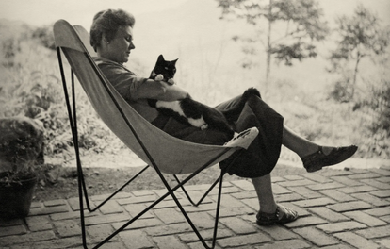
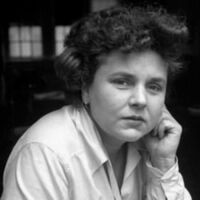
Elizabeth Bishop (February 8, 1911 – October 6, 1979) was an American poet, short-story writer, and recipient of the 1976 Neustadt International Prize for Literature. She was the Poet Laureate of the United States from 1949 to 1950, the Pulitzer Prize winner for Poetry in 1956 and the National Book Award winner in 1970.
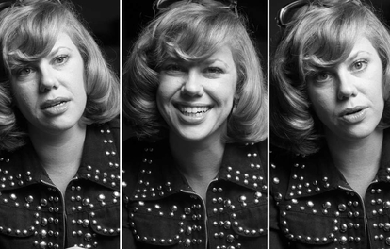
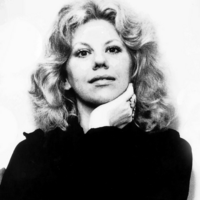
Erica Jong (née Mann; born March 26, 1942) is an American novelist and poet, known particularly for her 1973 novel Fear of Flying. The book became famously controversial for its attitudes towards female sexuality and figured prominently in the development of second-wave feminism. According to Washington Post, it has sold more than 20 million copies worldwide. Born in New York, she was the second of three daughters of Seymore Mann and Eda Mirsky. Attended New York’s Public High School of Music and Art in the 1950’s where she developed her passion for art and writing. As a student at Barnard College, she edited the Barnard Literary Magazine and created poetry programs for the Columbia University campus radio station.
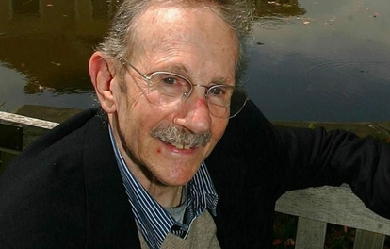
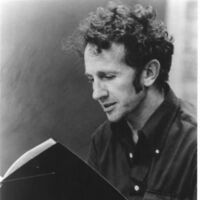
Philip Levine (January 10, 1928– February 14, 2015) was a Pulitzer Prize-winning American poet best known for his poems about working-class Detroit. He taught for more than thirty years in the English department of California State University, Fresno and held teaching positions at other universities as well. He served on the Board of Chancellors of the Academy of American Poets from 2000 to 2006, and was appointed Poet Laureate of the United States for 2011–2012. Biography Philip Levine grew up in industrial Detroit, the second of three sons and the first of identical twins of Jewish immigrant parents. His father, Harry Levine, owned a used auto parts business, his mother, Esther Priscol (Prisckulnick) Levine, was a bookseller. When Levine was five years old, his father died. While growing up, he faced the anti-Semitism embodied by Father Coughlin, the pro-Nazi radio priest. Levine started to work in car manufacturing plants at the age of 14. Detroit Central High School graduated him in 1946 and he went to college at Wayne University (now Wayne State University) in Detroit, where he began to write poetry, encouraged by his mother, to whom he dedicated the book of poems, The Mercy. Levine earned his A.B. in 1950 and went to work for Chevrolet and Cadillac in what he called “stupid jobs.” He married his first wife, Patty Kanterman, in 1951. The marriage lasted until 1953. In 1953, he attended the University of Iowa without registering, studying with, among others, poets Robert Lowell and John Berryman, the latter of whom Levine called his “one great mentor.” In 1954, he earned a mail-order masters degree with a thesis on John Keats’ “Ode to Indolence,” and married actress Frances J. Artley. He returned to the University of Iowa teaching technical writing, completing his Master of Fine Arts degree in 1957. The same year, he was awarded the Jones Fellowship in Poetry at Stanford University. In 1958, he joined the English department at California State University in Fresno, where he taught until his retirement in 1992. He also taught at many other universities, among them New York University as Distinguished Writer-in-Residence, Columbia, Princeton, Brown, Tufts, and the University of California at Berkeley. Levine and his wife had made their homes in Fresno and Brooklyn. He died of pancreatic cancer on February 14, 2015, age 87. Work The familial, social, and economic world of twentieth-century Detroit is one of the major subjects of Levine’s life work. His portraits of working class Americans and his continuous examination of his Jewish immigrant inheritance (both based on real life and described through fictional characters) has left a testimony of mid-twentieth century American life. Levine’s working experience lent his poetry a profound skepticism with regard to conventional American ideals. In his first two books, On the Edge (1963) and Not This Pig (1968), the poetry dwells on those who suddenly become aware that they are trapped in some murderous processes not of their own making. In 1968, Levine signed the “Writers and Editors War Tax Protest” pledge, vowing to refuse to make tax payments in protest against the Vietnam War. In his first two books, Levine was somewhat traditional in form and relatively constrained in expression. Beginning with They Feed They Lion, typically Levine’s poems are free-verse monologues tending toward trimeter or tetrameter. The music of Levine’s poetry depends on tension between his line-breaks and his syntax. The title poem of Levine’s book 1933 (1974) is an example of the cascade of clauses and phrases one finds in his poetry. Other collections include The Names of the Lost, A Walk with Tom Jefferson, New Selected Poems, and the National Book Award-winning What Work Is. On November 29, 2007 a tribute was held in New York City in anticipation of Levine’s eightieth birthday. Among those celebrating Levine’s career by reading Levine’s work were Yusef Komunyakaa, Galway Kinnell, E. L. Doctorow, Charles Wright, Jean Valentine and Sharon Olds. Levine read several new poems as well. Awards * 2013 Academy of American Poets Wallace Stevens Award * 2011 Appointed Poet Laureate Consultant in Poetry to the Library of Congress (United States Poet Laureate) * 1995 Pulitzer Prize for Poetry– The Simple Truth (1994) * 1991 National Book Award for Poetry and Los Angeles Times Book Prize– What Work Is * 1987 Ruth Lilly Poetry Prize from the Modern Poetry Association and the American Council for the Arts * 1981 Levinson Prize from Poetry magazine * 1980 Guggenheim Foundation fellowship * 1980 National Book Award for Poetry– Ashes: Poems New and Old * 1979 National Book Critics Circle Award– Ashes: Poems New and Old– 7 Years from Somewhere * 1978 Harriet Monroe Memorial Prize from Poetry * 1977 Lenore Marshall Poetry Prize from the Academy of American Poets– The Names of the Lost (1975) * 1973 American Academy of Arts and Letters Award, Frank O’Hara Prize, Guggenheim Foundation fellowship Published works Poetry collections * News of the World, Random House, Inc., 2009, ISBN 978-0-307-27223-2 * Stranger to Nothing: Selected Poems, Bloodaxe Books, UK, 2006, ISBN 978-1-85224-737-9 * Breath Knopf, 2004, ISBN 978-1-4000-4291-3; reprint, Random House, Inc., 2006, ISBN 978-0-375-71078-0 * The Mercy, Random House, Inc., 1999, ISBN 978-0-375-70135-1 * Unselected Poems, Greenhouse Review Press, 1997, ISBN 978-0-9655239-0-5 * The Simple Truth, Alfred A. Knopf, 1994, ISBN 978-0-679-43580-8; Alfred A. Knopf, 1996, ISBN 978-0-679-76584-4 * What Work Is, Knopf, 1992, ISBN 978-0-679-74058-2 * New Selected Poems, Knopf, 1991, ISBN 978-0-679-40165-0 * A Walk With Tom Jefferson, A.A. Knopf, 1988, ISBN 978-0-394-57038-9 * Sweet Will, Atheneum, 1985, ISBN 978-0-689-11585-1 * Selected Poems, Atheneum, 1984, ISBN 978-0-689-11456-4 * One for the Rose, Atheneum, 1981, ISBN 978-0-689-11223-2 * 7 Years From Somewhere, Atheneum, 1979, ISBN 978-0-689-10974-4 * Ashes: Poems New and Old, Atheneum, 1979, ISBN 978-0-689-10975-1 * The Names of the Lost, Atheneum, 1976 * 1933, Atheneum, 1974, ISBN 978-0-689-10586-9 * They Feed They Lion, Atheneum, 1972 * Red Dust (1971) * Pili’s Wall, Unicorn Press, 1971; Unicorn Press, 1980 * Not This Pig, Wesleyan University Press, 1968, ISBN 978-0-8195-2038-8; Wesleyan University Press, 1982, ISBN 978-0-8195-1038-9 * On the Edge (1963) Essays * The Bread of Time (1994) Translations * Off the Map: Selected Poems of Gloria Fuertes, edited and translated with Ada Long (1984) * Tarumba: The Selected Poems of Jaime Sabines, edited and translated with Ernesto Trejo (1979) Interviews * Don’t Ask, University of Michigan Press, 1981, ISBN 978-0-472-06327-7 * Moyers & Company, on December 29, 2013, Philip Levine reads some of his poetry and explores how his years working on Detroit’s assembly lines inspired his poetry. * “Interlochen Center for the Arts”, Interview with Interlochen Arts Academy students on March 17, 1977. References Wikipedia—https://en.wikipedia.org/wiki/Philip_Levine_(poet)
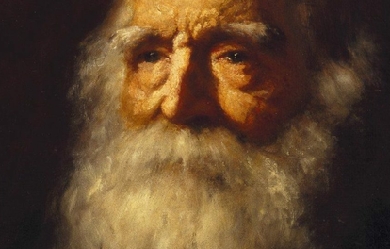
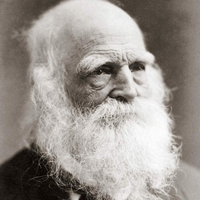
William Cullen Bryant (November 3, 1794– June 12, 1878) was an American romantic poet, journalist, and long-time editor of the New York Evening Post. Youth and education Bryant was born on November 3, 1794, in a log cabin near Cummington, Massachusetts; the home of his birth is today marked with a plaque. He was the second son of Peter Bryant (b. Aug. 12, 1767, d. Mar. 20, 1820), a doctor and later a state legislator, and Sarah Snell (b. Dec. 4, 1768, d. May 6, 1847). The genealogies of both of his parents trace back to passengers on the Mayflower; his mother’s to John Alden (b. 1599, d. 1687); his father’s to Francis Cooke (b. 1577, d. 1663). He was also a nephew of Charity Bryant, a Vermont seamstress who is the subject of Rachel Hope Cleves’ 2014 book Charity and Sylvia: A Same-Sex Marriage in Early America. Bryant and his family moved to a new home when he was two years old. The William Cullen Bryant Homestead, his boyhood home, is now a museum. After just one year at Williams College (he entered with sophomore standing), he hoped to transfer to Yale, but a talk with his father led to the realization that family finances would not support it. His father counseled a legal career as his best available choice, and the disappointed poet began to study law in Worthington and Bridgewater in Massachusetts. He was admitted to the bar in 1815 and began practicing law in nearby Plainfield, walking the seven miles from Cummington every day. On one of these walks, in December 1815, he noticed a single bird flying on the horizon; the sight moved him enough to write “To a Waterfowl”. Bryant developed an interest in poetry early in life. Under his father’s tutelage, he emulated Alexander Pope and other Neo-Classic British poets. “The Embargo”, a savage attack on President Thomas Jefferson published in 1808, reflected Dr. Bryant’s Federalist political views. The first edition quickly sold out—partly because of publicity attached to the poet’s young age. A second, expanded edition included Bryant’s translation of classical verse. During his collegiate studies and his reading for the law, he wrote little poetry, but encounters with the Graveyard Poets and then Wordsworth regenerated his passion for “the witchery of song.” Poetry “Thanatopsis” is Bryant’s most famous poem, which Bryant may have been working on as early as 1811. In 1817 his father took some pages of verse from his son’s desk, and at the invitation of Willard Phillips, an editor of the North American Review who had previously been tutored in the classics by Dr. Bryant, he submitted them along with his own work. The editor of the Review, Edward Tyrrel Channing, read the poem to his assistant, Richard Henry Dana, who immediately exclaimed, “That was never written on this side of the water!” Someone at the North American joined two of the son’s discrete fragments, gave the result the Greek-derived title Thanatopsis ("meditation on death"), mistakenly attributed it to the father, and published it. After clarification of the authorship, the son’s poems began appearing with some regularity in the "[Review]". “To a Waterfowl”, published in 1821 was the most popular. On January 11, 1821, Bryant, still striving to build a legal career, married Frances Fairchild. Soon after, having received an invitation to address the Harvard University Phi Beta Kappa Society at the school’s August commencement, Bryant spent months working on “The Ages”, a panorama in verse of the history of civilization, culminating in the establishment of the United States. As it would in all collections he subsequently issued, “The Ages” led the volume, also entitled Poems, which he arranged to publish on the same trip to Cambridge. For that book, he added sets of lines at the beginning and end of “Thanatopsis” that changed the poem. His career as a poet was now established, though recognition as America’s leading poet waited until 1832, when an expanded Poems was published in the U.S. and, with the assistance of Washington Irving, in Britain. His poetry has been described as being “of a thoughtful, meditative character, and makes but slight appeal to the mass of readers.” Editorial career From 1816 to 1825, Bryant depended on his law practice in Great Barrington, Massachusetts to sustain his family financially, but the strain of dealing with unsophisticated neighbors and juridical pettifoggery pushed him to trade his unrewarding profession for New York City and the promise of a literary career. With the encouragement of a distinguished and well-connected literary family, the Sedgwicks, he quickly gained a foothold in New York City’s vibrant cultural life. His first employment, in 1825, was as editor of the New-York Review, which within the next year merged with the United States Review and Literary Gazette. But in the throes of the failing struggle to raise subscriptions, he accepted part-time duties with the New-York Evening Post under William Coleman; then, partly because of Coleman’s ill health, traceable to the consequences of a duel and then a stroke, Bryant’s responsibilities expanded rapidly. From Assistant Editor he rose to Editor-in-Chief and co-owner of the newspaper that had been founded by Alexander Hamilton. Over the next half century, the “Post” would become the most respected paper in the city and, from the election of Andrew Jackson, the major platform in the Northeast for the Democratic Party and subsequently of the Free Soil and Republican Parties. In the process, the Evening-Post also became the pillar of a substantial fortune. From his Federalist beginnings, Bryant had shifted to being one of the most liberal voices of the century. An early supporter of organized labor, with his 1836 editorials the right of workmen to strike, Bryant also defended of religious minorities and immigrants, and promoted the abolition of slavery. He “threw himself into the foreground of the battle for human rights” and did not cease speaking out against the corrupting influence of certain bankers in spite of their efforts to break down the paper. According to newspaper historian Frank Luther Mott, Bryant was “a great liberal seldom done justice by modern writers”. Ironically, the boy who first tasted fame for his diatribe against Thomas Jefferson and his party became one of the key supporters in the Northeast of that same party under Jackson. Bryant’s views, always progressive though not quite populist, in course led him to join the Free Soilers, and when the Free Soil Party became a core of the new Republican Party in 1856, Bryant vigorously campaigned for John Frémont. That exertion enhanced his standing in party councils, and in 1860, he was one of the prime Eastern exponents of Abraham Lincoln, whom he introduced at Cooper Union. (That “Cooper Union speech” lifted Lincoln to the nomination, and then the presidency.) Although literary historians have neglected his fiction, Bryant’s stories over the seven-year period from his time with the Review to the publication of Tales of Glauber Spa in 1832 show a variety of strategies, making him the most inventive of practitioners of the genre during this early stage of its evolution. Bryant edited the very successful Picturesque America which was published between 1872 and 1874. This two-volume set was lavishly illustrated and described scenic places in the United States and Canada. Later years In his last decade, Bryant shifted from writing his own poetry to a blank verse translation of Homer’s works. He assiduously worked on the Iliad and The Odyssey from 1871 to 1874. He is also remembered as one of the principal authorities on homeopathy and as a hymnist for the Unitarian Church—both legacies of his father’s enormous influence on him. Bryant died in 1878 of complications from an accidental fall suffered after participating in a Central Park ceremony honoring Italian patriot Giuseppe Mazzini. He is buried at Roslyn Cemetery in Roslyn, Long Island, New York. Critical response Poet and literary critic Thomas Holley Chivers said that the "only thing [Bryant] ever wrote that may be called Poetry is 'Thanatopsis’, which he stole line for line from the Spanish. The fact is, that he never did anything but steal—as nothing he ever wrote is original." Contemporary critic Edgar Allan Poe, on the other hand, praised Bryant and specifically the poem “June” in his essay “The Poetic Principle”: The rhythmical flow, here, is even voluptuous—nothing could be more melodious. The poem has always affected me in a remarkable manner. The intense melancholy which seems to well up, perforce, to the surface of all the poet’s cheerful sayings about his grave, we find thrilling us to the soul—while there is the truest poetic elevation in the thrill. The impression left is one of a pleasurable sadness. Editor and children’s writer Mary Mapes Dodge wrote that Bryant’s poems “have wrought vast and far-reaching good in the world.” She predicted, “You will admire more and more, as you grow older, the noble poems of this great and good man.” Bryant’s poetry is tender and graceful, pervaded by a contemplative melancholy, and a love of solitude and the silence of the woods. Though he was brought up to admire Pope, and in his early youth imitated him, he was one of the first American poets to throw off his influence. He had a high sense of duty, was a prominent and patriotic citizen, and enjoyed the esteem and even the reverence of his fellow-countrymen. Legacy In 1884, New York City’s Reservoir Square, at the intersection of 42nd Street and Sixth Avenue, was renamed Bryant Park in his honor. The city later named a public high school in Long Island City, Queens in his honor. A park in East York, a suburb of Toronto, Canada, bears the name of Cullen Bryant Park as well. Although he is now thought of as a New Englander, Bryant, for most of his lifetime, was thoroughly a New Yorker—and a very dedicated one at that. He was a major force behind the idea that became Central Park, as well as a leading proponent of creating the Metropolitan Museum of Art. He was one of a group of founders of New York Medical College. He had close affinities with the Hudson River School of art and was an intimate friend of Thomas Cole. He defended immigrants and, at some financial risk to himself, championed the rights of workers to form labor unions. As a writer, Bryant was an early advocate of American literary nationalism, and his own poetry focusing on nature as a metaphor for truth established a central pattern in the American literary tradition. Some however, argue that a reassessment is long overdue. It finds great merit in a couple of short stories Bryant wrote while trying to build interest in periodicals he edited. More importantly, it perceives a poet of great technical sophistication who was a progenitor of Walt Whitman, to whom he was a mentor. Martin Luther King, Jr quoted Bryant in his speech “Give Us the Ballot”, when he said, “there is something in this universe which justifies William Cullen Bryant in saying: ‘Truth crushed to earth will rise again.’” The Seattle neighborhood Bryant is named after him. Bryant House at Williams College is named for him. References Wikipedia—https://en.wikipedia.org/wiki/William_Cullen_Bryant
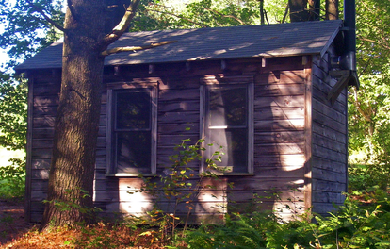
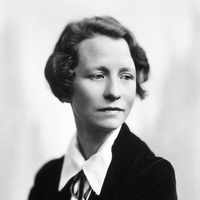
Edna St. Vincent Millay (February 22, 1892 – October 19, 1950) was an American poet and playwright. She received the Pulitzer Prize for Poetry in 1923, the third woman to win the award for poetry, and was also known for her feminist activism. She used the pseudonym Nancy Boyd for her prose work. The poet Richard Wilbur asserted, "She wrote some of the best sonnets of the century."
Donald Hall (September 20, 1928 – June 23, 2018) was an American poet born in New Haven, Connecticut, in 1928. He began writing as an adolescent and attended the Bread Loaf Writers' Conference at the age of sixteen—the same year he had his first work published. He earned a B.A. from Harvard in 1951 and a B. Litt. from Oxford in 1953.
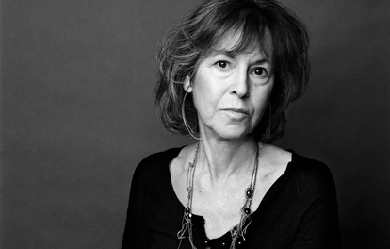
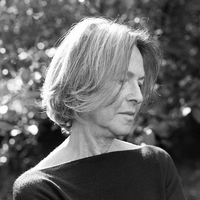
Louise Elisabeth Glück (born April 22, 1943) is an American poet. She was appointed Poet Laureate Consultant in Poetry to the Library of Congress in 2003. Louise was born in New York City of Hungarian Jewish heritage and grew up on Long Island. Her father, Daniel, an immigrant from Hungary, helped invent and market the X-Acto Knife. She graduated in 1961 from George W. Hewlett High School and went on to attend Sarah Lawrence College and later Columbia University; however, she did not graduate from either of them. Glück won the Pulitzer Prize for Poetry in 1993 for her collection The Wild Iris.

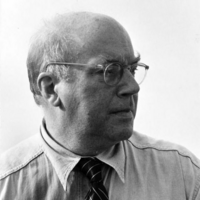
Conrad Potter Aiken (August 5, 1889– August 17, 1973) was an American writer, whose work includes poetry, short stories, novels, a play, and an autobiography. Aiken was the son of wealthy, socially prominent New Englanders, William Ford and Anna (Potter) Aiken, who had moved to Savannah, Georgia, where his father became a respected physician and brain surgeon. Then something happened for which, as Aiken later said, no one could ever find a reason. Without warning or apparent cause, his father became increasingly irascible, unpredictable, and violent. Finally, early in the morning of February 27, 1901, he murdered his wife and shot himself. According to his own writings, Aiken (who was eleven years old) heard the gunshots and discovered the bodies. He was then raised by his great aunt in Massachusetts and was educated at private schools and at Middlesex School in Concord, Massachusetts, then at Harvard University where he edited the Advocate with T. S. Eliot, who became a lifelong friend and associate.


Francis Brett Hart, known as Bret Harte (August 25, 1836 – May 5, 1902), was an American short story writer and poet, best remembered for his short fiction featuring miners, gamblers, and other romantic figures of the California Gold Rush. In a career spanning more than four decades, he wrote poetry, plays, lectures, book reviews, editorials, and magazine sketches in addition to fiction. As he moved from California to the eastern U.S. to Europe, he incorporated new subjects and characters into his stories, but his Gold Rush tales have been most often reprinted, adapted, and admired. Biography Early life Harte was born in the capital city of Albany, New York. He was named Francis Brett Hart after his great-grandfather, Francis Brett. When he was young, his father, Henry, changed the spelling of the family name from Hart to Harte. Henry’s father was Bernard Hart, an Orthodox Jewish immigrant who flourished as a merchant, becoming one of the founders of the New York Stock Exchange. Later, Francis preferred to be known by his middle name, but he spelled it with only one “t”, becoming Bret Harte.An avid reader as a boy, Harte published his first work at age 11, a satirical poem titled “Autumn Musings”, now lost. Rather than attracting praise, the poem garnered ridicule from his family. As an adult, he recalled to a friend, “Such a shock was their ridicule to me that I wonder that I ever wrote another line of verse”. His formal schooling ended when he was 13, in 1849. Career in California Harte moved to California in 1853, later working there in a number of capacities, including miner, teacher, messenger, and journalist. He spent part of his life in the northern California coastal town of Union (now Arcata), a settlement on Humboldt Bay that was established as a provisioning center for mining camps in the interior.The Wells Fargo Messenger of July 1916, relates that, after an unsuccessful attempt to make a living in the gold camps, Harte signed on as a messenger with Wells Fargo & Co. Express. He guarded treasure boxes on stagecoaches for a few months, then gave it up to become the schoolmaster at a school near the town of Sonora, in the Sierra foothills. He created his character Yuba Bill from his memory of an old stagecoach driver. Among Harte’s first literary efforts, a poem was published in The Golden Era in 1857, and, in October of that same year, his first prose piece on “A Trip Up the Coast”. He was hired as editor of The Golden Era in the spring of 1860, which he attempted to make into a more literary publication. Mark Twain later recalled that, as an editor, Harte struck “a new and fresh and spirited note” which “rose above that orchestra’s mumbling confusion and was recognizable as music”. Among his writings were parodies and satires of other writers, including The Stolen Cigar-Case featuring ace detective “Hemlock Jones”, which Ellery Queen praised as “probably the best parody of Sherlock Holmes ever written”.The 1860 massacre of between 80 and 200 Wiyot Indians at the village of Tuluwat (near Eureka in Humboldt County, California) was reported by Harte in San Francisco and New York. While serving as assistant editor of the Northern Californian, Harte was left in charge of the paper during the temporary absence of his boss, Stephen G. Whipple. Harte published a detailed account condemning the slayings, writing: “a more shocking and revolting spectacle never was exhibited to the eyes of a Christian and civilized people. Old women wrinkled and decrepit lay weltering in blood, their brains dashed out and dabbled with their long grey hair. Infants scarcely a span long, with their faces cloven with hatchets and their bodies ghastly with wounds.”After he published the editorial, Harte’s life was threatened, and he was forced to flee one month later. Harte quit his job and moved to San Francisco, where an anonymous letter published in a city paper is attributed to him, describing widespread community approval of the massacre. In addition, no one was ever brought to trial, despite the evidence of a planned attack and references to specific individuals, including a rancher named Larabee and other members of the unofficial militia called the Humboldt Volunteers. Harte married Anna Griswold on August 11, 1862 in San Rafael, California. From the start, the marriage was rocky. Some suggested that she was handicapped by extreme jealousy, while early Harte biographer Henry C. Merwin privately concluded that she was “almost impossible to live with”.The well-known minister Thomas Starr King recommended Harte to James Thomas Fields, editor of the prestigious magazine, The Atlantic Monthly, which published Harte’s first short story in October 1863. In 1864, Harte joined with Charles Henry Webb in starting a new literary journal called The Californian. He became friends with and mentored poet Ina Coolbrith.In 1865 Harte was asked by bookseller Anton Roman to edit a book of California poetry; it was to be a showcase of the finest California writers. When the book, called Outcroppings, was published, it contained only nineteen poets, many of them Harte’s friends (including Ina Coolbrith and Charles Warren Stoddard). The book caused some controversy, as Harte used the preface as a vehicle to attack California’s literature, blaming the state’s “monotonous climate” for its bad poetry. While the book was widely praised in the East, many newspapers and poets in the West took umbrage at his remarks.In 1868, Harte became editor of The Overland Monthly, another new literary magazine, published by Roman Anton with the intention of highlighting local writings. The Overland Monthly was more in tune with the pioneering spirit of excitement in California. Harte’s short story “The Luck of Roaring Camp” appeared in the magazine’s second issue, propelling him to nationwide fame.When word of Charles Dickens’s death reached Harte in July 1870, he immediately sent a dispatch across the bay to San Francisco to hold back the forthcoming issue of the Overland Monthly for 24 hours so that he could compose the poetic tribute, “Dickens in Camp”. Harte’s fame increased with the publication of his satirical poem “Plain Language from Truthful James” in the September 1870 issue of the Overland Monthly. The poem became better known by its alternate title, “The Heathen Chinee”, after being republished in a Boston newspaper in 1871. It was also quickly republished in a number of other newspapers and journals, including the New York Evening Post, the New York Tribune, the Boston Evening Transcript, the Providence Journal, the Hartford Courant, Prairie Farmer, and the Saturday Evening Post. Harte was chagrined, however, to find that the popularity of the poem, which he had written to criticize the prevalence of anti-Chinese sentiment among the white population of California, was largely the result of its being taken literally by the very people he had lampooned, who completely misconstrued the ironic intent of Harte’s words. Leaving the West He was determined to pursue his literary career and traveled back East with his family in 1871 to New York and eventually to Boston where he contracted with the publisher of The Atlantic Monthly for an annual salary of $10,000, “an unprecedented sum at the time”. His popularity waned, however, and by the end of 1872 he was without a publishing contract and increasingly desperate. He spent the next few years struggling to publish new work or republish old, and delivering lectures about the gold rush. The winter of 1877–1878 was particularly hard for Harte and his family. He later recalled it as a “hand-to-mouth life” and wrote to his wife Anna, “I don’t know—looking back—what ever kept me from going down, in every way, during that awful December and January”.After months of soliciting for such a role, Harte accepted the position of United States Consul in the town of Krefeld, Germany in May 1878. Mark Twain had been a friend and supporter of Harte’s until a substantial falling out, and he had previously tried to block any appointment for Harte. In a letter to William Dean Howells, he complained that Harte would be an embarrassment to the United States because, as he wrote, “Harte is a liar, a thief, a swindler, a snob, a sot, a sponge, a coward, a Jeremy Diddler, he is brim full of treachery... To send this nasty creature to puke upon the American name in a foreign land is too much”. Eventually, Harte was given a similar role in Glasgow in 1880. In 1885, he settled in London. Throughout his time in Europe, he regularly wrote to his wife and children and sent monthly financial contributions. He declined, however, to invite them to join him, nor did he return to the United States to visit them. His excuses were usually related to money. During the 24 years that he spent in Europe, he never abandoned writing and maintained a prodigious output of stories that retained the freshness of his earlier work. He died in Camberley, England in 1902 of throat cancer, and is buried at Frimley. His wife Anna (née Griswold) Harte died on August 2, 1920. The couple lived together only 16 of the 40 years that they were married. Reception In Round the World, Andrew Carnegie praised Harte as uniquely American:"A whispering pine of the Sierras transplanted to Fifth Avenue! How could it grow? Although it shows some faint signs of life, how sickly are the leaves! As for fruit, there is none. America had in Bret Harte its most distinctively national poet.” Mark Twain, however, characterized him and his writing as insincere. Writing in his autobiography four years after Harte’s death, Twain criticized the miners’ dialect used by Harte, claiming that it never existed outside of his imagination. Additionally, Twain accused Harte of “borrowing” money from his friends with no intention of repaying it and of financially abandoning his wife and children. He referred repeatedly to Harte as “The Immortal Bilk”. Works * Condensed Novels and Other Papers (1867) * Outcroppings (1865), editor * The Luck of Roaring Camp, and Other Sketches (1870) * Poems (1871) * The Tales of the Argonauts (1875) * Flip and Found at Blazing Star (1882) * Gabriel Conroy (1876) * Two Men of Sandy Bar (1876) * Drift from Two Shores (1878) * An Heiress of Red Dog, and Other Tales (1879) * A Millionaire of Rough-And-Ready and Devil’s Ford (1887) * The Crusade of the Excelsior (1887) * The Argonauts of North Liberty (1888) * A First Family of Tasajara (1892) * Colonel Starbottle’s Client, and some other people (1892) * A Protégée of Jack Hamlin’s; and Other Stories (1894) * Barker’s Luck etc. (1896) * Under the Red-Woods (1901) * Her Letter, His Answer, and Her Last Letter (1905) Dramatic and musical adaptations * Several film versions of “The Outcasts of Poker Flat” have been made, including one in 1937 with Preston Foster and another in 1952 with Dale Robertson. * Tennessee’s Partner (1955) with John Payne and Ronald Reagan was based on the story of the same name. * Paddy Chayefsky’s treatment of the film version of Paint Your Wagon seems to borrow from “Tennessee’s Partner”: two close friends – one named “Pardner” – share the same woman. The spaghetti western Four of the Apocalypse is based on “The Outcasts of Poker Flat” and “The Luck of Roaring Camp”. * The Soviet movie Armed and Dangerous (Russian: Вооружён и очень опасен, 1977) is based on Gabriel Conroy and another of Harte’s stories. * Operas based on “The Outcasts of Poker Flat” include those by Samuel Adler and by Stanford Beckler. * The actor Craig Hill was cast as Harte in the 1956 episode, “Year of Destiny”, on the syndicated anthology series Death Valley Days, hosted by Stanley Andrews. The “year of destiny” is 1857, when Harte arrived in California. First a stagecoach guard, then a newspaper editor and schoolteacher, he slowly finds fame as a western writer. Legacy * Bret Harte Memorial in San Francisco * Bret Harte, California, a census-designated place (CDP) in Stanislaus County * Twain Harte, a CDP in Tuolumne County, California, named after both Mark Twain and Bret Harte. * The Mark Twain Bret Harte Historic Trail (Marker Number 431 erected in 1948 by the California Centennial Commission), also named after both writers. * Bret Harte Village in the Gold River community of Sacramento County. Sacramento, California * Bret Harte Court, a street in Sacramento, California * Bret Harte Library, a public library in Long Beach, California * Bret Harte Hall, Roaring Camp Railroads Felton, California * Bret Harte High School in Angels Camp, California is named after him. * Bret Harte Lane in Humboldt Hill, California. * Bret Harte Elementary School in Chicago, Illinois * Bret Harte Preparatory Middle School (Vermont Vista) South Los Angeles, California * Bret Harte Middle School in San Jose, California * Bret Harte Middle School in Oakland, California * Bret Harte Middle School in Hayward, California * Bret Harte High School in Altaville, California is named after him and celebrated its 100th anniversary in 2005 * Bret Harte Elementary in Corcoran, California * Bret Harte Elementary in San Francisco, California * Bret Harte Elementary in Burbank, California * Bret Harte Elementary in Cherry Hill, New Jersey * Bret Harte Elementary in Sacramento, California * Bret Harte Elementary School in Modesto, California * A community called The Shores of Poker Flat, California claims to have been the location of Poker Flat, although it is usually accepted that the story takes place further north. * Bret Harte Road in Frimley (the town in which Harte was buried) is named after him. * Bret Harte Place in San Francisco, California is named after him. * Bret Harte Lane, Bret Harte Road, and Harte Ave in San Rafael, California. * Bret Harte Road in Berkeley, California. * Bret Harte Road in Redwood City, California. * Bret Harte Road in Angels Camp, California. * Bret Harte Road and Bret Harte Drive in Murphys, California. * Bret Harte Avenue in Reno, Nevada. * Bret Harte House, at Humboldt State University in Arcata, California. * Bret Harte Alley in Arcata, California. * Bret Harte Park in Danville, California. * In 1987 Harte appeared on a $5 U.S. Postage stamp, as part of the “Great Americans series” of issues. References Wikipedia—https://en.wikipedia.org/wiki/Bret_Harte
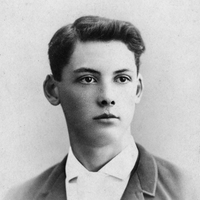
Edwin Arlington Robinson (December 22, 1869—April 6, 1935) was an American poet who won three Pulitzer Prizes for his work. He was born in Head Tide, Lincoln County, Maine but his family moved to Gardiner, Maine in 1871. He described his childhood in Maine as “stark and unhappy”: His parents (who had wanted a girl) did not name him until he was six months old, when they visited a holiday resort—whereupon, other vacationers decided that he should have a name and selected a man from Arlington, Massachusetts to draw a name out of a hat. Throughout his life, he not only hated his given name, but also his family’s habit of calling him “Win.” As an adult, he always used the signature “E. A.”
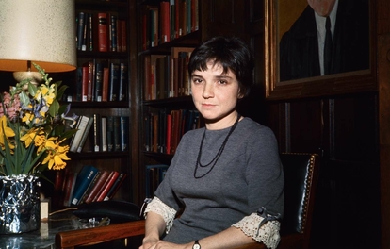
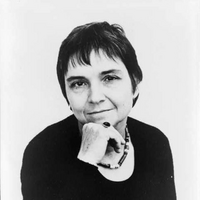
Adrienne Cecile Rich (May 16, 1929– March 27, 2012) was an American poet, essayist and radical feminist. She was called “one of the most widely read and influential poets of the second half of the 20th century”, and was credited with bringing “the oppression of women and lesbians to the forefront of poetic discourse.” Her first collection of poetry, A Change of World, was selected by renowned poet W. H. Auden for the Yale Series of Younger Poets Award. Auden went on to write the introduction to the published volume. She famously declined the National Medal of Arts, protesting the vote by House Speaker Newt Gingrich to end funding for the National Endowment for the Arts. Adrienne Rich was born in Baltimore, Maryland, the elder of two sisters. Her father, renowned pathologist Arnold Rice Rich, was the Chairman of Pathology at The Johns Hopkins Medical School. Her mother, Helen Elizabeth (Jones) Rich, was a concert pianist and a composer. Her father was from a Jewish family, and her mother was Southern Protestant; the girls were raised as Christians. Adrienne Rich’s early poetic influence stemmed from her father who encouraged her to read but also to write her own poetry. Her interest in literature was sparked within her father’s library where she read the work of writers such as Ibsen, Arnold, Blake, Keats, Rossetti, and Tennyson. Her father was ambitious for Adrienne and “planned to create a prodigy.” Adrienne Rich and her younger sister were home schooled by their mother until Adrienne began public education in the fourth grade. The poems Sources and After Dark document her relationship with her father, describing how she worked hard to fulfill her parents’ ambitions for her—moving into a world in which she was expected to excel.
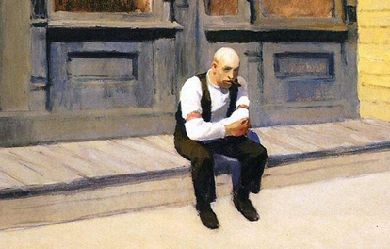
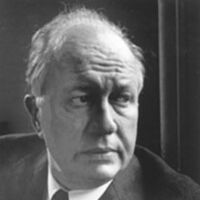
Theodore Roethke (ret-kee; May 25, 1908 – August 1, 1963) was an American poet, who published several volumes of poetry characterized by its rhythm, rhyming, and natural imagery. He was awarded the Pulitzer Prize for poetry in 1954 for his book, The Waking, and he won the annual National Book Award for Poetry twice, in 1959 for Words for the Wind and posthumously in 1965 for The Far Field. Roethke was born in Saginaw, Michigan and grew up on the west side of the Saginaw River. His father, Otto, was a German immigrant, a market-gardener who owned a large local 25 acre greenhouse, along with his brother (Theodore's uncle). Much of Theodore's childhood was spent in this greenhouse, as reflected by the use of natural images in his poetry. The poet's adolescent years were jarred, however, by his uncle's suicide and by the death of his father from cancer, both in early 1923, when Theodore (Ted) was only 15. These deaths shaped Roethke's psyche and creative life. He attended the University of Michigan, earning A.B. and M.A. degrees. He briefly attended law school before entering Harvard University, where he studied under the poet Robert Hillyer. Abandoning graduate study because of the Great Depression, he taught English at several universities, including Lafayette College, Pennsylvania State University, and Bennington College. In 1940, he was expelled from his position at Lafayette and he returned to Michigan. Just prior to his return, he had an affair with established poet and critic Louise Bogan, who later became one of his strongest early supporters. While teaching at Michigan State University in East Lansing, he began to suffer from manic depression, which fueled his poetic impetus. His last teaching position was at the University of Washington, leading to an association with the poets of the American Northwest. Some of his best known students included James Wright, Carolyn Kizer, Jack Gilbert, Richard Hugo, and David Wagoner. In 1953, Roethke married Beatrice O'Connell, a former student. Like many other American poets of his generation, Roethke was a heavy drinker and susceptible, as mentioned, to bouts of mental illness. He did not inform O'Connell of his repeated episodes of depression, yet she remained dedicated to him and his work. She ensured the posthumous publication of his final volume of poetry, The Far Field, which includes the poem "Meditation at Oyster River." In 1961, "The Return" was featured on George Abbe's album Anthology of Contemporary American Poetry on Folkways Records. The following year, Roethke released his own album on the label entitled, Words for the Wind: Poems of Theodore Roethke. He suffered a heart attack in his friend S. Rasnics' swimming pool in 1963 and died on Bainbridge Island, Washington, aged 55. The pool was later filled in and is now a zen rock garden, which can be viewed by the public at the Bloedel Reserve, a 150-acre (60 hectare) former private estate. There is no sign to indicate that the rock garden was the site of Roethke's death. There is a sign that commemorates his boyhood home and burial in Saginaw, Michigan. The historical marker notes in part: Theodore Roethke (1908–1963) wrote of his poetry: The greenhouse "is my symbol for the whole of life, a womb, a heaven-on-earth." Roethke drew inspiration from his childhood experiences of working in his family's Saginaw floral company. Beginning is 1941 with Open House, the distinguished poet and teacher published extensively, receiving a Pulitzer Prize for poetry and two National Book Awards among an array of honors. In 1959 Pennsylvania University awarded him the Bollingen Prize. Roethke taught at Michigan State College, (present-day Michigan State University) and at colleges in Pennsylvania and Vermont, before joining the faculty of the University of Washington at Seattle in 1947. Roethke died in Washington in 1963. His remains are interred in Saginaw's Oakwood Cemetery. The Friends of Theodore Roethke Foundation maintains his birthplace at 1805 Gratiot in Saginaw as a museum. In 1995, the Seattle alley between Seventh and Eighth Avenues N.E. running from N.E. 45th Street to N.E. 47th Street was named Roethke Mews in his honor. It adjoins the Blue Moon Tavern, one of Roethke's haunts. Critical responses The poet Stanley Kunitz said of Roethke, "The poet of my generation who meant most to me, in his person and in his art, was Theodore Roethke." The Poetry Foundation entry on Roethke notes early reviews of his work and Roethke's response to that early criticism: W. H. Auden called [Roethke's first book] Open House "completely successful." In another review of the book, Elizabeth Drew felt "his poems have a controlled grace of movement and his images the utmost precision; while in the expression of a kind of gnomic wisdom which is peculiar to him as he attains an austerity of contemplation and a pared, spare strictness of language very unusual in poets of today." Roethke kept both Auden's and Drew's reviews, along with other favorable reactions to his work. As he remained sensitive to how peers and others he respected should view his poetry, so too did he remain sensitive to his introspective drives as the source of his creativity. Understandably, critics picked up on the self as the predominant preoccupation in Roethke's poems. Roethke's breakthrough book, The Lost Son, also won him considerable praise. For instance, Michael Harrington felt "Roethke found his own voice and central themes in The Lost Son and Stanley Kunitz saw a "confirmation that he was in full possession of his art and of his vision." In Against Oblivion, an examination of forty-five twentieth century poets, the critic Ian Hamilton also praised this book, writing, "In Roethke's second book, The Lost Son, there are several of these greenhouse poems and they are among the best things he wrote; convincing and exact, and rich in loamy detail." In addition to the well-known greenhouse poems, the Poetry Foundation notes that Roethke also won praise "for his love poems which first appeared in The Waking and earned their own section in the new book [and] 'were a distinct departure from the painful excavations of the monologues and in some respects a return to the strict stanzaic forms of the earliest work,' [according to the poet] Stanley Kunitz. [The critic] Ralph Mills described 'the amatory verse' as a blend of 'consideration of self with qualities of eroticism and sensuality; but more important, the poems introduce and maintain a fascination with something beyond the self, that is, with the figure of the other, or the beloved woman.'" In reviewing his posthumously published Collected Poems in 1966, Karl Malkoff of The Sewanee Review wrote: Bibliography * Open House (1941) * The Lost Son and Other Poems (1948) * Praise to the End! (1951) * The Waking (1953) * Words For The Wind (1958) * I Am! Says The Lamb (1961) * Party at the Zoo" (1963) (A Modern Masters Book for Children, illustrated by Al Swiller) * The Far Field (1964) * Dirty Dinky and Other Creatures: Poems for Children (1973) * On Poetry and Craft: Selected Prose and Craft of Theodore Roethke (Copper Canyon Press, 2001) * Straw for the Fire: From the Notebooks of Theodore Roethke, 1943-63 (1972; Copper Canyon * Press, 2006) (selected and arranged by David Wagoner) References Wikipedia - http://en.wikipedia.org/wiki/Theodore_Roethke
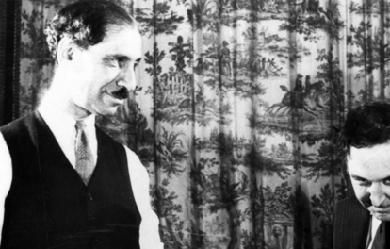
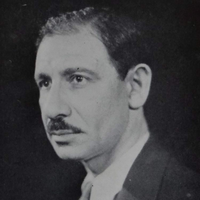
Franklin Pierce Adams (November 15, 1881– March 23, 1960) was an American columnist, well known by his initials F.P.A., and wit, best known for his newspaper column, “The Conning Tower”, and his appearances as a regular panelist on radio’s Information Please. A prolific writer of light verse, he was a member of the Algonquin Round Table of the 1920s and 1930s. New York newspaper columnist Adams was born Franklin Leopold Adams to Moses and Clara Schlossberg Adams in Chicago on November 15, 1881. He changed his middle name to “Pierce” when he had a Jewish confirmation ceremony at age 13. Adams graduated from the Armour Scientific Academy (now Illinois Institute of Technology) in 1899, attended the University of Michigan for one year and worked in insurance for three years. Signing on with the Chicago Journal in 1903, he wrote a sports column and then a humor column, “A Little about Everything”. The following year he moved to the New York Evening Mail, where he worked from 1904 to 1913 and began his column, then called “Always in Good Humor”, which used reader contributions. During his time on the Evening Mail, Adams wrote what remains his best known work, the poem Baseball’s Sad Lexicon, a tribute to the Chicago Cubs double play combination of “Tinker to Evers to Chance”. In 1911, he added a second column, a parody of Samuel Pepys’s Diary, with notes drawn from F.P.A.'s personal experiences. In 1914, he moved his column to the New-York Tribune, where it was famously retitled The Conning Tower and was considered to be “the pinnacle of verbal wit”. During World War I, Adams was in the U.S. Army, serving in military intelligence and also writing a column, “The Listening Post”, for Stars and Stripes editor Harold Ross. After the war, the so-called “comma-hunter of Park Row” (for his knowledge of the language) returned to New York and the Tribune. He moved to the New York World in 1922, and his column appeared there until the paper merged with the inferior New York Telegram in 1931. He returned to his old paper, by then called the New York Herald Tribune, until 1937, and finally moved to the New York Post, where he ended his column in September 1941. During its long run, “The Conning Tower” featured contributions from such writers as Robert Benchley, Edna Ferber, Moss Hart, George S. Kaufman, Edna St. Vincent Millay, John O’Hara, Dorothy Parker and Deems Taylor. Having one’s work published in “The Conning Tower” was enough to launch a career, as in the case of Dorothy Parker and James Thurber. Parker quipped, “He raised me from a couplet.” Parker dedicated her 1936 publication of collected poems, Not So Deep as a Well, to F.P.A. Many of the poems in that collection were originally published in “The Conning Tower”. Much later, the writer E. B. White freely admitted his sense of awe: "I used to walk quickly past the house in West 13th Street between Sixth and Seventh where F.P.A. lived, and the block seemed to tremble under my feet—the way Park Avenue trembles when a train leaves Grand Central.” Adams is credited with coining the term “aptronym” for last names that fit a person’s career or job title, although it was later refined to “aptonym” by Frank Nuessel in 1992. Satires No Sirree!, staged for one night only in April 1922, was a take-off of a then-popular European touring revue called La Chauve-Souris directed by Nikita Balieff. Robert Benchley is often credited as the first person to suggest the parody of Balieff’s group. No Sirree! had its genesis at the studio of Neysa McMein, which served as something of a salon for Round Tablers away from the Algonquin. Acts included: “Opening Chorus” featuring Woollcott, Toohey, Kaufman, Connelly, Adams, and Benchley with violinist Jascha Heifetz providing offstage, off-key accompaniment; “He Who Gets Flapped,” a musical number featuring the song “The Everlastin’ Ingenue Blues” written by Dorothy Parker and performed by Robert Sherwood accompanied by “chorus girls” including Tallulah Bankhead, Helen Hayes, Ruth Gillmore, Lenore Ulric, and Mary Brandon; “Zowie, or the Curse of an Akins Heart”; “The Greasy Hag, an O’Neill Play in One Act” with Kaufman, Connelly and Woollcott; and “Mr. Whim Passes By - An A. A. Milne Play.” F.P.A. often included parodies in his column. His satire of Edgar Allan Poe’s poem “Annabel Lee” was later collected in his book Something Else Again (1910): Soul Bride Oddly Dead in Queer Death Pact High-Born Kinsman Abducts Girl from Poet-Lover—Flu Said to Be Cause of Death—Grand Jury to Probe Annabel L. Poe of 1834½ 3rd Ave., the beautiful young fiancee of Edmund Allyn Poe, a magazine writer from the South, was found dead early this morning on the beach off E. 8th Street. Poe seemed prostrated and, questioned by the police, said that one of her aristocratic relatives had taken her to the “seashore,” but that the cold winds had given her “flu,” from which she never “rallied.” Detectives at work on the case believe, they say, that there was a suicide compact between the Poes and that Poe also intended to do away with himself. He refused to leave the spot where the woman’s body had been found. Radio As a panelist on radio’s Information Please (1938–48), he was the designated expert on poetry, old barroom songs and Gilbert and Sullivan, which he always referred to as Sullivan and Gilbert. A running joke on the show was that his stock answer for quotes that he didn’t know was that Shakespeare was the author. (Perhaps that was a running gag: Information Please’s creator/producer Dan Golenpaul auditioned Adams for the job with a series of sample questions, starting with: “Who was the Merchant of Venice?” Adams: “Antonio.” Golenpaul: “Most people would say ‘Shylock.’” Adams: “Not in my circle.”) John Kieran was the real Shakespearean expert and could quote from his works at length. A translator of Horace and other classical authors, F.P.A. also collaborated with O. Henry on Lo, a musical comedy. Film portrayal Adams was portrayed by the actor Chip Zien in the film Mrs. Parker and the Vicious Circle (1994). Bibliography Books * His books include In Cupid’s Court (1902), Tobogganning on Parnassus (1911), In Other Words (1912) and Answer This One (a 1927 trivia book with Harry Hansen). The two-volume The Diary of Our Own Samuel Pepys, collected from his newspaper columns, was published in 1935 by Simon and Schuster. The Melancholy Lute (1936) featured Adams’ selections from three decades of his work. Articles * F. P. A. (February 21, 1925). “Short-story scenarios”. The New Yorker. 1 (1): 19. * (October 9, 1926). “A day in the courts”. The New Yorker. 2 (41): 29. * (March 5, 1927). “Grant”. The Talk of the Town. The New Yorker. 3 (10): 20. * F. P. A.; Harold Ross; James Thurber (April 30, 1927). “Mot”. The Talk of the Town. The New Yorker. 3 (18): 19. * F. P. A.; E. B. White (April 7, 1927). “Another”. The Talk of the Town. The New Yorker. 3 (19): 19. Quotes * “I find that a great part of the information I have was acquired by looking up something and finding something else on the way.” * “To err is human; to forgive, infrequent.” * “Elections are won by men and women chiefly because most people vote against somebody rather than for somebody.” References Wikipedia—https://en.wikipedia.org/wiki/Franklin_Pierce_Adams


Christopher Pearse Cranch (March 8, 1813– January 20, 1892) was an American writer and artist, born in the District of Columbia. His conservative father, William Cranch, was Chief Judge of the United States Circuit Court of the District of Columbia, while his brother John was a painter. He graduated from Columbian College (now George Washington University) in 1835 before attending Harvard Divinity School and becoming a licensed preacher.
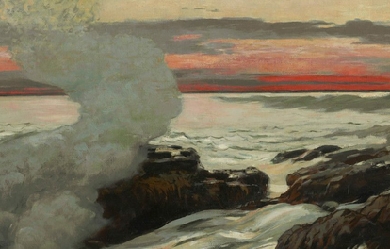
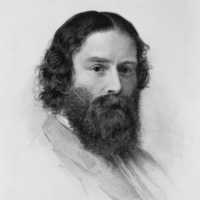
James Russell Lowell (/ˈloʊəl/; February 22, 1819– August 12, 1891) was an American Romantic poet, critic, editor, and diplomat. He is associated with the Fireside Poets, a group of New England writers who were among the first American poets who rivaled the popularity of British poets. These poets usually used conventional forms and meters in their poetry, making them suitable for families entertaining at their fireside. Lowell graduated from Harvard College in 1838, despite his reputation as a troublemaker, and went on to earn a law degree from Harvard Law School. He published his first collection of poetry in 1841 and married Maria White in 1844. He and his wife had several children, though only one survived past childhood. The couple soon became involved in the movement to abolish slavery, with Lowell using poetry to express his anti-slavery views and taking a job in Philadelphia, Pennsylvania, as the editor of an abolitionist newspaper. After moving back to Cambridge, Lowell was one of the founders of a journal called The Pioneer, which lasted only three issues. He gained notoriety in 1848 with the publication of A Fable for Critics, a book-length poem satirizing contemporary critics and poets. The same year, he published The Biglow Papers, which increased his fame. He went on to publish several other poetry collections and essay collections throughout his literary career. Maria White died in 1853, and Lowell accepted a professorship of languages at Harvard in 1854; he continued to teach there for twenty years. He traveled to Europe before officially assuming his role in 1856. He married his second wife, Frances Dunlap, shortly thereafter in 1857. That year Lowell also became editor of The Atlantic Monthly. It was not until 20 years later that Lowell received his first political appointment, the ambassadorship to the Kingdom of Spain. He was later appointed ambassador to the Court of St. James’s. He spent his last years in Cambridge, in the same estate where he was born, and died there in 1891. Lowell believed that the poet played an important role as a prophet and critic of society. He used poetry for reform, particularly in abolitionism. However, Lowell’s commitment to the anti-slavery cause wavered over the years, as did his opinion on African-Americans. Lowell attempted to emulate the true Yankee accent in the dialogue of his characters, particularly in The Biglow Papers. This depiction of the dialect, as well as Lowell’s many satires, was an inspiration to writers like Mark Twain and H.L. Mencken. Biography Early life The first of the Lowell family ancestors to come to the United States from Britain was Percival Lowle, who settled in Newbury, Massachusetts, in 1639. James Russell Lowell was born February 22, 1819, the son of the Reverend Charles Russell Lowell, Sr. (1782–1861), a minister at a Unitarian church in Boston, who had previously studied theology at Edinburgh, and Harriett Brackett Spence Lowell. By the time James Russell Lowell was born, the family owned a large estate in Cambridge called Elmwood. He was the youngest of six children; his siblings were Charles, Rebecca, Mary, William, and Robert. Lowell’s mother built in him an appreciation for literature at an early age, especially in poetry, ballads, and tales from her native Orkney. He attended school under Sophia Dana, who would later marry George Ripley, and later studied at a school run by a particularly harsh disciplinarian, where one of his classmates was Richard Henry Dana, Jr. Beginning in 1834, at the age of 15, Lowell attended Harvard College, though he was not a good student and often got into trouble. In his sophomore year alone, he was absent from required chapel attendance 14 times and from classes 56 times. In his last year there, he wrote, “During Freshman year, I did nothing, during Sophomore year I did nothing, during Junior year I did nothing, and during Senior year I have thus far done nothing in the way of college studies.” In his senior year, he became one of the editors of Harvardiana literary magazine, to which he contributed prose and poetry that he admitted was of low quality. As he said later, "I was as great an ass as ever brayed & thought it singing." During his undergraduate years, Lowell was a member of Hasty Pudding and served both as Secretary and Poet. Lowell was elected the poet of the class of 1838 and, as was tradition, was asked to recite an original poem on Class Day, the day before Commencement, on July 17, 1838. Lowell, however, was suspended and not allowed to participate. Instead, his poem was printed and made available thanks to subscriptions paid by his classmates. Lowell had composed the poem in Concord, Massachusetts, where, because of his neglect of his studies, he had been exiled by the Harvard faculty to the care of the Rev. Barzallai Frost. During his stay in Concord, he became friends with Ralph Waldo Emerson, and got to know the other Transcendentalists. The poem satirized the social movements of the day; abolitionists, Thomas Carlyle, Emerson, and the Transcendentalists were treated. Not knowing what vocation to choose after graduating, he vacillated among business, the ministry, medicine, and law. Having decided to practice law, he enrolled at Harvard Law School in 1840 and was admitted to the bar two years later. While studying law, however, he contributed poems and prose articles to various magazines. During this time, Lowell was admittedly depressed and often had suicidal thoughts. He once confided to a friend that he held a cocked pistol to his forehead and considered killing himself at the age of 20. Marriage and family In late 1839, Lowell met Maria White through her brother William, a classmate of his at Harvard, and the two became engaged in the autumn of 1840. Maria’s father Abijah White, a wealthy merchant from Watertown, insisted that their wedding be postponed until Lowell had gainful employment. They were finally married on December 26, 1844, shortly after the groom published Conversations on the Old Poets, a collection of his previously published essays. A friend described their relationship as “the very picture of a True Marriage.” Lowell himself believed she was made up “half of earth and more than half of Heaven.” Like Lowell, she wrote poetry, and the next twelve years of Lowell’s life were deeply affected by her influence. He said his first book of poetry, A Year’s Life (1841), “owes all its beauty to her,” though it only sold 300 copies. Her character and beliefs led her to become involved in the movements directed against intemperance and slavery. Maria was a member of the Boston Female Anti-Slavery Society and persuaded her husband to become an abolitionist. James had previously expressed antislavery sentiments, but Maria urged him towards more active expression and involvement. His second volume of poems, Miscellaneous Poems, expressed these antislavery thoughts and its 1,500 copies sold well. Maria was in poor health, and thinking her lungs could heal there, the couple moved to Philadelphia shortly after their marriage. In Philadelphia, he became a contributing editor for the Pennsylvania Freeman, an abolitionist newspaper. In the spring of 1845, the Lowells returned to Cambridge, Massachusetts, to make their home at Elmwood. They had four children, though only one (Mabel, born 1847) survived past infancy. Their first, Blanche, was born December 31, 1845, but lived only fifteen months; Rose, born in 1849, survived only a few months as well; their only son, Walter, was born in 1850 but died in 1852. Lowell was very affected by the loss of almost all of his children. His grief over the death of his first daughter in particular was expressed in his poem “The First Snowfall” (1847). Again, Lowell considered suicide, writing to a friend that he thought “of my razors and my throat and that I am a fool and a coward not to end it all at once.” Literary career Lowell’s earliest poems were published without remuneration in the Southern Literary Messenger in 1840. Lowell, inspired to new efforts towards self-support, joined with his friend Robert Carter in founding a literary journal, The Pioneer. The periodical was distinguished by the fact that most of its content was new rather than material that had been previously published elsewhere, and by the inclusion of very serious criticism, which covered not only literature but also art and music. Lowell wrote that it would “furnish the intelligent and reflecting portion of the Reading Public with a rational substitute for the enormous quantity of thrice-diluted trash, in the shape of namby-pamby love tales and sketches, which is monthly poured out to them by many of our popular Magazines.” William Wetmore Story noted the journal’s higher taste, writing that "it took some stand & appealled to a higher intellectual Standard than our puerile milk or watery namby-pamby Mags with which we are overrun." The first issue of the journal included the first appearance of “The Tell-Tale Heart” by Edgar Allan Poe. Lowell, shortly after the first issue, was treated for an eye disease in New York, and in his absence Carter did a poor job of managing the journal. After three monthly numbers, beginning in January 1843, the magazine ceased publication, leaving Lowell $1,800 in debt. Poe mourned the journal’s demise, calling it “a most severe blow to the cause—the cause of a Pure Taste.” Despite the failure of The Pioneer, Lowell continued his interest in the literary world. He wrote a series on “Anti-Slavery in the United States” for the London Daily News, though his series was discontinued by the editors after four articles in May 1846. Lowell had published these articles anonymously, believing they would have more impact if they were not known to be the work of a committed abolitionist. In the spring of 1848 he formed a connection with the National Anti-Slavery Standard of New York, agreeing to contribute weekly either a poem or a prose article. After only one year, he was asked to contribute half as often to the Standard to make room for contributions from Edmund Quincy, another writer and reformer. A Fable for Critics, one of Lowell’s most popular works, was published in 1848. A satire, it was published anonymously. It proved popular, and the first three thousand copies sold out quickly. In it, Lowell took good-natured jabs at his contemporary poets and critics. Not all the subjects included were pleased, however. Edgar Allan Poe, who had been referred to as part genius and “two-fifths sheer fudge,” reviewed the work in the Southern Literary Messenger and called it “'loose’—ill-conceived and feebly executed, as well in detail as in general.... we confess some surprise at his putting forth so unpolished a performance.” Lowell offered the profits from the book’s success, which proved relatively small, to his New York friend Charles Frederick Briggs, despite his own financial needs. In 1848, Lowell also published The Biglow Papers, later named by the Grolier Club as the most influential book of 1848. The first 1,500 copies sold out within a week and a second edition was soon issued, though Lowell made no profit, having had to absorb the cost of stereotyping the book himself. The book presented three main characters, each representing different aspects of American life and using authentic American dialects in their dialogue. Under the surface, The Biglow Papers was also a denunciation of the Mexican–American War and war in general. First trip to Europe In 1850, Lowell’s mother died unexpectedly, as did his third daughter, Rose. Her death left Lowell depressed and reclusive for six months, despite the birth of his son Walter by the end of the year. He wrote to a friend that death “is a private tutor. We have no fellow-scholars, and must lay our lessons to heart alone.” These personal troubles as well as the Compromise of 1850 inspired Lowell to accept an offer from William Wetmore Story to spend a winter in Italy. To pay for the trip, Lowell sold land around Elmwood, intending to sell off further acres of the estate over time to supplement his income, ultimately selling off 25 of the original 30 acres (120,000 m2). Walter died suddenly in Rome of cholera, and Lowell and his wife, with their daughter Mabel, returned to the United States in October 1852. Lowell published recollections of his journey in several magazines, many of which would be collected years later as Fireside Travels (1867). He also edited volumes with biographical sketches for a series on British Poets. His wife Maria, who had been suffering from poor health for many years, became very ill in the spring of 1853 and died on October 27 of tuberculosis. Just before her burial, her coffin was opened so that her daughter Mabel could see her face while Lowell “leaned for a long while against a tree weeping,” according to Henry Wadsworth Longfellow and his wife, who were in attendance. In 1855, Lowell oversaw the publication of a memorial volume of his wife’s poetry, with only fifty copies for private circulation. Despite his self-described “naturally joyous” nature, life for Lowell at Elmwood was further complicated by his father becoming deaf in his old age, and the deteriorating mental state of his sister Rebecca, who sometimes went a week without speaking. He again cut himself off from others, becoming reclusive at Elmwood, and his private diaries from this time period are riddled with the initials of his wife. On March 10, 1854, for example, he wrote: "Dark without & within. M.L. M.L. M.L." Longfellow, a friend and neighbor, referred to Lowell as “lonely and desolate.” Professorship and second marriage At the invitation of his cousin John Amory Lowell, James Russell Lowell was asked to deliver a lecture at the prestigious Lowell Institute. Some speculated the opportunity was because of the family connection, offered as an attempt to bring him out of his depression. Lowell chose to speak on “The English Poets,” telling his friend Briggs that he would take revenge on dead poets “for the injuries received by one whom the public won’t allow among the living.” The first of the twelve-part lecture series was to be on January 9, 1855, though by December, Lowell had only completed writing five of them, hoping for last-minute inspiration. His first lecture was on John Milton and the auditorium was oversold; Lowell had to give a repeat performance the next afternoon. Lowell, who had never spoken in public before, was praised for these lectures. Francis James Child said that Lowell, whom he deemed was typically “perverse,” was able to “persist in being serious contrary to his impulses and his talents.” While his series was still in progress, Lowell was offered the Smith Professorship of Modern Languages at Harvard, a post vacated by Longfellow, at an annual salary of $1,200, though he never applied for it. The job description was changing after Longfellow; instead of teaching languages directly, Lowell would supervise the department and deliver two lecture courses per year on topics of his own choosing. Lowell accepted the appointment, with the proviso that he should have a year of study abroad. He set sail on June 4 of that year, leaving his daughter Mabel in the care of a governess named Frances Dunlap. Abroad, he visited Le Havre, Paris, and London, spending time with friends including Story, Robert Browning and Elizabeth Barrett Browning, and Leigh Hunt. Primarily, however, Lowell spent his time abroad studying languages, particularly German, which he found difficult. He complained: “The confounding genders! If I die I shall have engraved on my tombstone that I died of der, die, das, not because I caught them but because I couldn’t.” He returned to the United States in the summer of 1856 and began his college duties. Towards the end of his professorship, then-president of Harvard Charles William Eliot noted that Lowell seemed to have “no natural inclination” to teach; Lowell agreed, but retained his position for twenty years. He focused on teaching literature, rather than etymology, hoping that his students would learn to enjoy the sound, rhythm, and flow of poetry rather than the technique of words. He summed up his method: “True scholarship consists in knowing not what things exists, but what they mean; it is not memory but judgment.” Still grieving the loss of his wife, during this time Lowell avoided Elmwood and instead lived on Kirkland Street in Cambridge, an area known as Professors’ Row. He stayed there, along with his daughter Mabel and her governess Frances Dunlap, until January 1861. Lowell had intended never to remarry after the death of his wife Maria White. However, in 1857, surprising his friends, he became engaged to Frances Dunlap, who many described as simple and unattractive. Dunlap, niece of the former governor of Maine Robert P. Dunlap, was a friend of Lowell’s first wife and formerly wealthy, though she and her family had fallen into reduced circumstances. Lowell and Dunlap married on September 16, 1857, in a ceremony performed by his brother. Lowell wrote, "My second marriage was the wisest act of my life, & as long as I am sure of it, I can afford to wait till my friends agree with me.” The war years and beyond In the autumn of 1857, The Atlantic Monthly was established, and Lowell was its first editor. With its first issue in November of that year, he at once gave the magazine the stamp of high literature and of bold speech on public affairs. In January 1861, Lowell’s father died of a heart attack, inspiring Lowell to move his family back to Elmwood. As he wrote to his friend Briggs, “I am back again to the place I love best. I am sitting in my old garret, at my old desk, smoking my old pipe... I begin to feel more like my old self than I have these ten years.” Shortly thereafter, in May, he left The Atlantic Monthly when James Thomas Fields took over as editor; the magazine had been purchased by Ticknor and Fields for $10,000 two years before. Lowell returned to Elmwood by January 1861 but maintained an amicable relationship with the new owners of the journal, continuing to submit his poetry and prose for the rest of his life. His prose, however, was more abundantly presented in the pages of the North American Review during the years 1862–1872. For the Review, he served as a coeditor along with Charles Eliot Norton. Lowell’s reviews for the journal covered a wide variety of literary releases of the day, though he was writing fewer poems. As early as 1845, Lowell had predicted the debate over slavery would lead to war and, as the American Civil War broke out in the 1860s, Lowell used his role at the Review to praise Abraham Lincoln and his attempts to maintain the Union. Lowell lost three nephews during the war, including Charles Russell Lowell, Jr, who became a Brigadier General and fell at the battle of Cedar Creek. Lowell himself was generally a pacifist. Even so, he wrote, “If the destruction of slavery is to be a consequence of the war, shall we regret it? If it be needful to the successful prosecution of the war, shall anyone oppose it?” His interest in the Civil War inspired him to write a second series of The Biglow Papers, including one specifically dedicated to the preliminary Emancipation Proclamation called “Sunthin’ in the Pastoral Line” in 1862. Shortly after Lincoln’s assassination, Lowell was asked to present a poem at Harvard in memory of graduates killed in the war. His poem, “Commemoration Ode,” cost him sleep and his appetite, but was delivered on July 21, 1865, after a 48-hour writing binge. Lowell had high hopes for his performance but was overshadowed by the other notables presenting works that day, including Ralph Waldo Emerson and Oliver Wendell Holmes, Sr. “I did not make the hit I expected,” he wrote, “and am ashamed at having been tempted again to think I could write poetry, a delusion from which I have been tolerably free these dozen years.” Despite his personal assessment, friends and other poets sent many letters to Lowell congratulating him. Emerson referred to his poem’s "high thought & sentiment" and James Freeman Clarke noted its “grandeur of tone.” Lowell later expanded it with a strophe to Lincoln. In the 1860s, Lowell’s friend Longfellow spent several years translating Dante Alighieri’s Divine Comedy and regularly invited others to help him on Wednesday evenings. Lowell was one of the main members of the so-called “Dante Club,” along with William Dean Howells, Charles Eliot Norton and other occasional guests. Shortly after serving as a pallbearer at the funeral of friend and publisher Nathaniel Parker Willis, on January 24, 1867, Lowell decided to produce another collection of his poetry. Under the Willows and Other Poems was released in 1869, though Lowell originally wanted to title it The Voyage to the Vinland and Other Poems. The book, dedicated to Norton, collected poems Lowell had written within the previous twenty years and was his first poetry collection since 1848. Lowell intended to take another trip to Europe. To finance it, he sold off more of Elmwood’s acres and rented the house to Thomas Bailey Aldrich; Lowell’s daughter Mabel, by this time, had moved into a new home with her husband Edward Burnett, the son of a successful businessman-farmer from Southboro, Massachusetts. Lowell and his wife set sail on July 8, 1872, after he took a leave of absence from Harvard. They visited England, Paris, Switzerland, and Italy. While overseas, he received an honorary Doctorate of Law from the University of Oxford and another from Cambridge University. They returned to the United States in the summer of 1874. Political appointments Lowell resigned from his Harvard professorship in 1874, though he was persuaded to continue teaching through 1877. It was in 1876 that Lowell first stepped into the field of politics. That year, he served as a delegate to the Republican National Convention in Cincinnati, Ohio, speaking on behalf of presidential candidate Rutherford B. Hayes. Hayes won the nomination and, eventually, the presidency. In May 1877, President Hayes, an admirer of The Biglow Papers, sent William Dean Howells to Lowell with a handwritten note proffering an ambassadorship to either Austria or Russia; Lowell declined, but noted his interest in Spanish literature. Lowell was then offered and accepted the role of Minister to the court of Spain at an annual salary of $12,000. Lowell sailed from Boston on July 14, 1877, and, though he expected he would be away for a year or two, he would not return to the United States until 1885, with the violinist Ole Bull renting Elmwood for a portion of that time. The Spanish media referred to him as “José Bighlow.” Lowell was well-prepared for his political role, having been trained in law, as well as being able to read in multiple languages. He had trouble socializing while in Spain, however, and amused himself by sending humorous dispatches to his political bosses in the United States, many of which were later collected and published posthumously in 1899 as Impressions of Spain. Lowell’s social life improved when the Spanish Academy elected him a corresponding member in late 1878, allowing him contribute to the preparation of a new dictionary. In January 1880, Lowell was informed he was appointed Minister to England, his nomination made without his knowledge as far back as June 1879. He was granted a salary of $17,500 with about $3,500 for expenses. While serving in this capacity, he addressed an importation of allegedly diseased cattle and made recommendations that predated the Pure Food and Drug Act. Queen Victoria commented that she had never seen an ambassador who “created so much interest and won so much regard as Mr. Lowell.” Lowell held this role until the close of Chester A. Arthur’s presidency in the spring of 1885, despite his wife’s failing health. Lowell was already well known in England for his writing and, during his time there, he befriended fellow author Henry James, who referred to him as “conspicuously American.” Lowell also befriended Leslie Stephen many years earlier and became the godfather to his daughter, future writer Virginia Woolf. Lowell was popular enough that he was offered a professorship at Oxford after his recall by president Grover Cleveland, though the offer was declined. His second wife, Frances, died on February 19, 1885, while still in England. Later years and death He returned to the United States by June 1885, living with his daughter and her husband in Southboro, Massachusetts. He then spent time in Boston with his sister before returning to Elmwood in November 1889. By this time, most of his friends were dead, including Quincy, Longfellow, Dana, and Emerson, leaving him depressed and contemplating suicide again. Lowell spent part of the 1880s delivering various speeches, and his last published works were mostly collections of essays, including Political Essays, and a collection of his poems Heartsease and Rue in 1888. His last few years he traveled back to England periodically and when he returned to the United States in the fall of 1889, he moved back to Elmwood with Mabel, while her husband worked for clients in New York and New Jersey. That year, Lowell gave an address at the centenary of George Washington’s inauguration. Also that year, the Boston Critic dedicated a special issue to Lowell on his seventieth birthday to recollections and reminiscences by his friends, including former presidents Hayes and Benjamin Harrison and British Prime Minister William Ewart Gladstone as well as Alfred Tennyson and Francis Parkman. In the last few months of his life, Lowell struggled with gout, sciatica in his left leg, and chronic nausea; by the summer of 1891, doctors believed that Lowell had cancer in his kidneys, liver, and lungs. His last few months, he was administered opium for the pain and was rarely fully conscious. He died on August 12, 1891, at Elmwood. After services in the Appleton Chapel, he was buried in Mount Auburn Cemetery. After his death, Norton served as his literary executor and published several collections of Lowell’s works and his letters. Writing style and literary theory Early in his career, James Russell Lowell’s writing was influenced by Swedenborgianism, a Spiritualism-infused form of Christianity founded by Emanuel Swedenborg, causing Frances Longfellow (wife of the poet Henry Wadsworth Longfellow) to mention that “he has been long in the habit of seeing spirits.” He composed his poetry rapidly when inspired by an “inner light” but could not write to order. He subscribed to the common nineteenth-century belief that the poet was a prophet but went further, linking religion, nature, and poetry, as well as social reform. Evert Augustus Duyckinck and others welcomed Lowell as part of Young America, a New York-based movement. Though not officially affiliated with them, he shared some of their ideals, including the belief that writers have an inherent insight into the moral nature of humanity and have an obligation for literary action along with their aesthetic function. Unlike many of his contemporaries, including members of Young America, Lowell did not advocate for the creation of a new national literature. Instead, he called for a natural literature, regardless of country, caste, or race, and warned against provincialism which might “put farther off the hope of one great brotherhood.” He agreed with his neighbor Longfellow that “whoever is most universal, is also most national.” As Lowell said: I believe that no poet in this age can write much that is good unless he gives himself up to [the radical] tendency... The proof of poetry is, in my mind, that it reduces to the essence of a single line the vague philosophy which is floating in all men’s minds, and so render it portable and useful, and ready to the hand... At least, no poem ever makes me respect its author which does not in some way convey a truth of philosophy. A scholar of linguistics, Lowell was one of the founders of the American Dialect Society. He used this interest in his writing, particularly in The Biglow Papers, presenting a heavily ungrammatical phonetic spelling of the Yankee dialect. In using this vernacular, Lowell intended to get closer to the common man’s experience and was rebelling against more formal and, as he thought, unnatural representations of Americans in literature. As he wrote in his introduction to The Biglow Papers, “few American writers or speakers wield their native language with the directness, precision, and force that are common as the day in the mother country.” Though intentionally humorous, this accurate presentation of the dialect was pioneering work in American literature. For example, Lowell’s character Hosea Biglow says in verse: Lowell is considered one of the Fireside Poets, a group of writers from New England in the 1840s who all had a substantial national following and whose work was often read aloud by the family fireplace. Besides Lowell, the main figures from this group were Longfellow, Holmes, John Greenleaf Whittier, and William Cullen Bryant. Beliefs Although he was an abolitionist, Lowell’s opinions on African-Americans wavered. Though Lowell advocated suffrage for blacks, he noted that their ability to vote could be troublesome. Even so, he wrote, “We believe the white race, by their intellectual and traditional superiority, will retain sufficient ascendancy to prevent any serious mischief from the new order of things.” Freed slaves, he wrote, were "dirty, lazy & lying." Even before his marriage to the abolitionist Maria White, Lowell wrote: “The abolitionists are the only ones with whom I sympathize of the present extant parties.” After his marriage, Lowell at first did not share White’s enthusiasm for the cause but was eventually pulled in. The couple often gave money to fugitive slaves, even when their own financial situation was not strong, especially if they were asked to free a spouse or child. Even so, he did not always fully agree with the followers of the movement. The majority of these people, he said, “treat ideas as ignorant persons do cherries. They think them unwholesome unless they are swallowed, stones and all.” Lowell depicted Southerners very unfavorably in his second collection of The Biglow Papers but, by 1865, admitted that Southerners were “guilty only of weakness” and, by 1868, said that he sympathized with Southerners and their viewpoint on slavery. Enemies and friends of Lowell alike questioned his vacillating interest in the question of slavery. Abolitionist Samuel Joseph May accused Lowell of trying to quit the movement because of his association with Harvard and the Boston Brahmin culture: “Having got into the smooth, dignified, self-complacent, and change-hating society of the college and its Boston circles, Lowell has gone over to the world, and to 'respectability’.” Lowell was also involved in other reform movements. He urged for better conditions for factory workings, opposed capital punishment, and supported the temperance movement. His friend Longfellow was especially concerned about his fanaticism for temperance, worrying that Lowell would ask him to destroy his wine cellar. There are many references to Lowell’s drinking during his college years and part of his reputation in school was based on it. His friend Edward Everett Hale denied these allegations and, even then, Lowell considered joining the “Anti-Wine” club and later, during the early years of his first marriage, became a teetotaler. However, as Lowell gained notoriety, he became popular in social circles and clubs and, away from his wife, he drank rather heavily. When he drank, he had wild mood swings, ranging from euphoria to frenzy. Criticism and legacy In 1849, Lowell said of himself, “I am the first poet who has endeavored to express the American Idea, and I shall be popular by and by.” Poet Walt Whitman said: “Lowell was not a grower—he was a builder. He built poems: he didn’t put in the seed, and water the seed, and send down his sun—letting the rest take care of itself: he measured his poems—kept them within formula.” Fellow Fireside Poet John Greenleaf Whittier praised Lowell by writing two poems in his honor and calling him “our new Theocritus” and “one of the strongest and manliest of our writers–a republican poet who dares to speak brave words of unpopular truth.” British author Thomas Hughes referred to Lowell as one of the most important writers in the United States: "Greece had her Aristophanes; Rome her Juvenal; Spain has had her Cervantes; France her Rabelais, her Molière, her Voltaire; Germany her Jean Paul, her Heine; England her Swift, her Thackeray; and America has her Lowell." Lowell’s satires and use of dialect were an inspiration for writers like Mark Twain, William Dean Howells, H. L. Mencken, and Ring Lardner. Contemporary critic and editor Margaret Fuller wrote, “his verse is stereotyped; his thought sounds no depth, and posterity will not remember him.” Duyckinck thought Lowell was too similar to other poets like William Shakespeare and John Milton. Ralph Waldo Emerson noted that, though Lowell had significant technical skill, his poetry “rather expresses his wish, his ambition, than the uncontrollable interior impulse which is the authentic mark of a new poem... and which is felt in the pervading tone, rather than in brilliant parts or lines.” Even his friend Richard Henry Dana Jr., questioned Lowell’s abilities, calling him "very clever, entertaining & good humored... but he is rather a trifler, after all." In the twentieth century, poet Richard Armour dismissed Lowell, writing: “As a Harvard graduate and an editor for the Atlantic Monthly, it must have been difficult for Lowell to write like an illiterate oaf, but he succeeded.” The poet Amy Lowell featured her relative James Russell Lowell in her poem A Critical Fable (1922), the title mocking A Fable for Critics. Here, a fictional version of Lowell says he does not believe that women will ever be equal to men in the arts and “the two sexes cannot be ranked counterparts.” Modern literary critic Van Wyck Brooks wrote that Lowell’s poetry was forgettable: “one read them five times over and still forgot them, as if this excellent verse had been written in water.” Nonetheless, in 1969 the Modern Language Association established a prize named after Lowell, awarded annually for “an outstanding literary or linguistic study, a critical edition of an important work, or a critical biography.” Lowell’s poem “The Present Crisis,” an early work that addressed the national crisis over slavery leading up to the Civil War, has had an impact in the modern civil rights movement. The National Association for the Advancement of Colored People named its newsletter The Crisis after the poem, and Martin Luther King, Jr. frequently quoted the poem in his speeches and sermons. The poem was also the source of the hymn Once to Every Man and Nation. List of selected works Poetry collections * A Year’s Life (1841) * Miscellaneous Poems (1843) * The Biglow Papers (1848) * A Fable for Critics (1848) * Poems (1848) * The Vision of Sir Launfal (1848) * Under the Willows (1869) * The Cathedral (1870) * Heartsease and Rue (1888) Essay collections * Conversations on the Old Poets (1844) * Fireside Travels (1864) * Among My Books (1870) * My Study Windows (1871) * Among My Books (second collection, 1876) * Democracy and Other Addresses (1886) * Political Essays (1888) References Wikipedia—https://en.wikipedia.org/wiki/James_Russell_Lowell
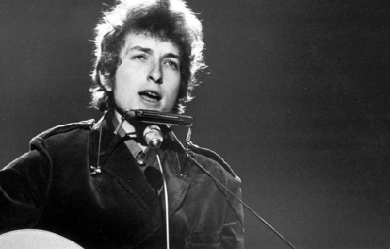
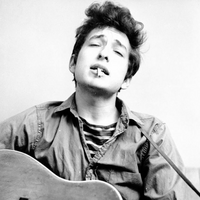
Bob Dylan (born Robert Allen Zimmerman; May 24, 1941) is an American musician, singer-songwriter, artist, and writer. He has been an influential figure in popular music and culture for more than five decades. Much of his most celebrated work dates from the 1960s when he was an informal chronicler and a seemingly reluctant figurehead of social unrest. A number of Dylan's early songs, such as “Blowin’ in the Wind” and “The Times They Are a-Changin”, became anthems for the US civil rights and anti-war movements. Leaving behind his initial base in the culture of the folk music revival, Dylan’s six-minute single “Like a Rolling Stone” radically altered the parameters of popular music in 1965. His recordings employing electric instruments attracted denunciation and criticism from others in the folk movement.


Sidney Clopton Lanier (February 3, 1842– September 7, 1881) was an American musician, poet and author. He served in the Confederate army, worked on a blockade running ship for which he was imprisoned (resulting in his catching tuberculosis), taught, worked at a hotel where he gave musical performances, was a church organist, and worked as a lawyer. As a poet he used dialects. He became a flautist and sold poems to publications. He eventually became a university professor and is known for his adaptation of musical meter to poetry. Many schools, other structures and two lakes are named for him. Biography Sidney Clopton Lanier was born February 3, 1842, in Macon, Georgia, to parents Robert Sampson Lanier and Mary Jane Anderson; he was mostly of English ancestry. His distant French Huguenot ancestors immigrated to England in the 16th century, fleeing religious persecution. He began playing the flute at an early age, and his love of that musical instrument continued throughout his life. He attended Oglethorpe University, which at the time was near Milledgeville, Georgia, and he was a member of the Sigma Alpha Epsilon fraternity. He graduated first in his class shortly before the outbreak of the American Civil War. He fought in the American Civil War (1861–65), primarily in the tidewater region of Virginia, where he served in the Confederate signal corps. Later, he and his brother Clifford served as pilots aboard English blockade runners. On one of these voyages, his ship was boarded. Refusing to take the advice of the British officers on board to don one of their uniforms and pretend to be one of them, he was captured. He was incarcerated in a military prison at Point Lookout in Maryland, where he contracted tuberculosis (generally known as “consumption” at the time). He suffered greatly from this disease, then incurable and usually fatal, for the rest of his life. Shortly after the war, he taught school briefly, then moved to Montgomery, Alabama, where he worked as a desk clerk at The Exchange Hotel and also performed as a musician. He was the regular organist at The First Presbyterian Church in nearby Prattville. He wrote his only novel, Tiger Lilies (1867) while in Alabama. This novel was partly autobiographical, describing a stay in 1860 at his grandfather’s Montvale Springs resort hotel near Knoxville, Tennessee. In 1867, he moved to Prattville, at that time a small town just north of Montgomery, where he taught and served as principal of a school. He married Mary Day of Macon in 1867 and moved back to his hometown, where he began working in his father’s law office. After taking and passing the Georgia bar, Lanier practiced as a lawyer for several years. During this period he wrote a number of poems, using the “cracker” and “negro” dialects of his day, about poor white and black farmers in the Reconstruction South. He traveled extensively through southern and eastern portions of the United States in search of a cure for his tuberculosis. While on one such journey in Texas, he rediscovered his native and untutored talent for the flute and decided to travel to the northeast in hopes of finding employment as a musician in an orchestra. Unable to find work in New York City, Philadelphia, or Boston, he signed on to play flute for the Peabody Orchestra in Baltimore, Maryland, shortly after its organization. He taught himself musical notation and quickly rose to the position of first flautist. He was famous in his day for his performances of a personal composition for the flute called “Black Birds”, which mimics the song of that species. In an effort to support Mary and their three sons, he also wrote poetry for magazines. His most famous poems were “Corn” (1875), “The Symphony” (1875), “Centennial Meditation” (1876), “The Song of the Chattahoochee” (1877), “The Marshes of Glynn”, (1878) and “Sunrise” (1881). The latter two poems are generally considered his greatest works. They are part of an unfinished set of lyrical nature poems known as the “Hymns of the Marshes”, which describe the vast, open salt marshes of Glynn County on the coast of Georgia. (The longest bridge in Georgia is in Glynn County and is named for Lanier.) Later life Late in his life, he became a student, lecturer, and, finally, a faculty member at the Johns Hopkins University in Baltimore, specializing in the works of the English novelists, Shakespeare, the Elizabethan sonneteers, Chaucer, and the Old English poets. He published a series of lectures entitled The English Novel (published posthumously in 1883) and a book entitled The Science of English Verse (1880), in which he developed a novel theory exploring the connections between musical notation and meter in poetry. Lanier finally succumbed to complications caused by his tuberculosis on September 7, 1881, while convalescing with his family near Lynn, North Carolina. He was 39. Lanier is buried in Green Mount Cemetery in Baltimore. Writing style and literary theory With his theory connecting musical notation with poetic meter, and also being described as a deft metrical technical, in his own words ‘daring with his poem ’Special Pleading’ to give myself such freedom as I desired, in my own style’ and also by developing a unique style of poetry written in logaoedic dactyls, which was strongly influenced by the works of his beloved Anglo-Saxon poets. He wrote several of his greatest poems in this meter, including “Revenge of Hamish” (1878), “The Marshes of Glynn” and “Sunrise”. In Lanier’s hands, the logaoedic dactylic meter led to a free-form, almost prose-like style of poetry that was greatly admired by Henry Wadsworth Longfellow, Bayard Taylor, Charlotte Cushman, and other leading poets and critics of the day. A similar poetical meter was independently developed by Gerard Manley Hopkins at about the same time (there is no evidence that they knew each other or that either of them had read any of the other’s works). Lanier also published essays on other literary and musical topics and a notable series of four redactions of literary works about knightly combat and chivalry in modernized language more appealing to the boys of his day: The Boy’s Froissart (1878), a retelling of Jean Froissart’s Froissart’s Chronicles, which tell of adventure, battle and custom in medieval England, France and Spain The Boy’s King Arthur (1880), based on Sir Thomas Malory’s compilation of the legends of King Arthur and the Knights of the Round Table The Boy’s Mabinogion (1881), based on the early Welsh legends of King Arthur, as retold in the Red Book of Hergest. The Boy’s Percy (published posthumously in 1882), consisting of old ballads of war, adventure and love based on Bishop Thomas Percy’s Reliques of Ancient English Poetry. He also wrote two travelogues that were widely read at the time, entitled Florida: Its Scenery, Climate and History (1875) and Sketches of India (1876) (although he never visited India). Legacy and honors The Sidney Lanier Cottage in Macon, Georgia is listed on the National Register of Historic Places. The square, stone Monument to Poets of Georgia, located between 7th & 8th St. in Augusta, lists Lanier as one of Georgia’s four great poets, all of whom saw Confederate service. The southeastern side bears this inscription: "To Sidney Lanier 1842–1880. The catholic man who hath nightly won God out of knowledge and good out of infinite pain and sight out of Blindness and Purity out of stain." The other poets on the monument are James Ryder Randall, Fr. Abram Ryan, and Paul Hayne. Baltimore honored Lanier with a large and elaborate bronze and granite sculptural monument, created by Hans K. Schuler and located on the campus of the Johns Hopkins University. In addition to the monument at Johns Hopkins, Lanier was also later memorialized on the campus of Duke University in Durham, North Carolina. Upon the construction of the iconic Duke Chapel between 1930 and 1935 on the university’s West Campus, a statue of Lanier was included alongside two fellow prominent Southerners, Thomas Jefferson and Robert E. Lee. This statue, which appears to show a Lanier older than the 39 years he actually lived, is situated on the right side of the portico leading into the Chapel narthex. It is prominently featured on the cover of the 2010 autobiographical memoir Hannah’s Child, by Stanley Hauerwas, a Methodist theologian teaching at Duke Divinity School. Lanier’s poem “The Marshes of Glynn” is the inspiration for a cantata by the same name that was created by the modern English composer Andrew Downes to celebrate the Royal Opening of the Adrian Boult Hall in Birmingham, England, in 1986. Piers Anthony used Lanier, his life, and his poetry in his science-fiction novel Macroscope (1969). He quotes from “The Marshes of Glynn” and other references appear throughout the novel. Several entities have been named for Sidney Lanier: Inhabited places Lanier Heights Neighborhood, Washington, D.C. Lanier County, Georgia Indirectly, USS Lanier, which was named for the county. Bodies of water Lake Lanier, operated by the U.S. Army Corps of Engineers northeast of Atlanta, Georgia (The lake was created by the damming of the Chattahoochee River, a river that was the subject of one of Lanier’s poems.) Lake Lanier in Tryon, North Carolina Schools Sidney Lanier High School in Montgomery, Alabama Sidney Lanier School in Gainesville, Florida Lanier University short-lived university, first Baptist, then owned by the Ku Klux Klan, in Atlanta, Georgia The Sidney Lanier Building (previously Sidney Lanier Elementary School) on the campus of Glynn Academy, in Brunswick, Georgia Lanier Middle School in Buford, Georgia Lanier Elementary School in Gainesville, Georgia Sidney Lanier Elementary School in Tulsa, Oklahoma Sidney Lanier High School in Austin, Texas Sidney Lanier Expressive Arts Vanguard Elementary School in Dallas, Texas Lanier Middle School in Houston, Texas Lanier High School in San Antonio, Texas Lanier Middle School in Fairfax, Virginia Sidney Lanier Elementary School in Tampa, Florida Lanier Technical College in Oakwood, Georgia Other Sidney Lanier Cottage, the birthplace of Lanier, in Macon, Georgia Sidney Lanier Bridge over the South Brunswick River in Brunswick, Georgia Lanier’s Oak in Brunswick, Georgia The Lanier Library, Tryon, North Carolina. Lanier’s widow, Mary, donated two of his volumes of poetry to begin the collection when the library was established in 1890. Sidney Lanier Camp, Eliot, Maine. Sidney Lanier Boulevard in Duluth, GA References Wikipedia—https://en.wikipedia.org/wiki/Sidney_Lanier
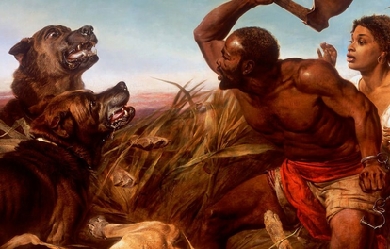
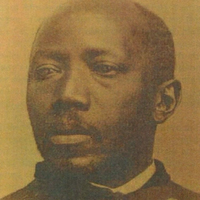
George Moses Horton (1798–1884) was an African-American poet and the first African American poet to be published in the Southern United States. His book was published in 1828 while he was still enslaved; he remained enslaved until he was emancipated late in the Civil War. Biography Horton was born into slavery on William Horton’s plantation in Northampton County, North Carolina. He was the sixth of ten children, though the names of his parents are lost to history. As a very young child in 1800, he and several family members were moved to a tobacco farm in rural Chatham County, when his owner relocated. He was given as property to William’s relative James Horton in 1814. In 1819, the estate was broken up, and George Moses Horton’s family was separated (the poem “Division of an Estate” reflected on the experience years later). Horton disliked farm work and in his free time he taught himself to read using spelling books, the Bible, and hymnals. Learning poetry and snippets of literature, Horton composed poems in his mind. As a young adult, Horton delivered produce to the University of North Carolina at Chapel Hill, where he composed and recited poems for students, some of whom transcribed his compositions. Horton also composed poems, usually love poems, by commission for the students at 25 or 50 cents each. Considering the difficulty of earning income from poetry, Horton was likely one of the few professional poets in the South at the time. In 1829, his poems were published in a collection titled The Hope of Liberty, which was intended to raise funds for his release from slavery. The book, funded by the politically-liberal journalist Joseph Gales, appeared the same year as David Walker’s An Appeal to the Coloured Citizens of the World. Horton is believed to be the first Southern black to publish poetry. Though he knew how to read, he published the book before he learned how to write. As he recalled, “I fell to work in my head, and composed several undigested pieces.” By 1832, he had learned to write for himself, having learned with the aid of Caroline Lee Hentz, who was the wife of a professor and a writer herself. She also assisted in publishing at least two of his poems in a newspaper. Horton had composed a poem on the death of Hentz’s child. As he recalled: “She was extremely pleased with the dirge which I wrote on the death of her much lamented primogenial infant, and for which she gave me much credit and a handsome reward. Not being able to write myself, I dictated while she wrote.” She sent one of Horton’s poems to her hometown newspaper in Lancaster, Massachusetts, where it was published on April 8, 1828, as “Liberty and Slavery”. Horton’s first book was republished under the title Poems by a Slave in 1837 and compiled with a biography and poetry by Phillis Wheatley a year later in a book called Memoir and Poems of Phillis Wheatley, a Native African and Slave: Also Poems by a Slave. The book was published by Boston-based publisher and abolitionist Isaac Knapp, and it is believed to be the first complete collection of Wheatley’s poems in book form. In 1845, Horton released another book of poetry, The Poetical Works of George M. Horton, The Colored Bard of North-Carolina, To Which Is Prefixed The Life of the Author, Written by Himself. The moniker, “Colored Bard of North-Carolina”, was coined by his new publisher. Horton gained the admiration of North Carolina Governor John Owen, influential newspapermen Horace Greeley and William Lloyd Garrison, along with numerous Northern abolitionists. Sometime in the 1830s, Horton married an enslaved woman owned by Franklin Snipes in Chatham County. The couple had two children, Free and Rhody, though little else is known about the family. Horton had written about his interest in the new nation of Liberia, and a few of the abolitionist papers made calls to raise enough money so that Horton could see his dream of life in Liberia come true. He was not emancipated until 1865, however, when he met the Ninth Cavalry from Michigan. A young officer with that group, William H. S. Banks, collaborated with Horton on the collection Naked Genius the same year. At the age of 68, Horton moved to Pennsylvania as a freeman where he continued to write poetry for local newspapers. One such publication, “Forbidden to Ride on the Street Cars”, shows his disappointment in the unjust treatment of blacks even after emancipation. In Philadelphia, he wrote Sunday school stories on behalf of friends who lived in the city. His exact death location and date are unknown. At least one researcher suggests Horton moved to Liberia at some point. Poetry After Horton’s first poem was published in the Lancaster, Massachusetts Gazette, his works appeared in other newspapers like the Register in Raleigh, North Carolina, and the Freedom’s Journal in New York City. Horton’s poetic style was typical of contemporary European poetry and was similar to poems written by free white contemporaries, likely a reflection of his reading and his work for commission. He wrote both sonnets and ballads, and his earlier works focused on his life in servitude. Such topics, however, were more generalized and not necessarily based on his personal experience. Nevertheless, he referred to his life on “vile accursed earth” and the “drudg’ry, pain, and toil” of life, as well as his oppression “because my skin is black”. His first collection was focused heavily on the issue of slavery and bondage. Likely because sales from that book were not enough for him to purchase his freedom, his second book mentions slavery only twice. The change in theme is also likely due to the more restrictive climate in the South in the years leading up to the Civil War. His later works, especially those made after his emancipation, were more rural and pastoral. Like other early black American writers like Jupiter Hammon and Phillis Wheatley, Horton was also heavily influenced by the Bible. The earliest known critical commentary on Horton’s writing is from 1909 by UNC professor Collier Cobb, who dismissed Horton’s antislavery themes: “George never really cared for more liberty than he had, but was fond of playing to the grandstand.”. Legacy Winston-Salem, North Carolina opened the George Moses Horton Branch Library in 1927 in a YWCA building. The George Moses Horton Society for the Study of African American Poetry was founded in 1996, the same year he was inducted into the North Carolina Literary Hall of Fame. The next year, 1997, he was named Historic Poet Laureate of Chatham County, North Carolina. In 2006, UNC Chapel Hill named a dormitory for George Moses Horton; it was formerly called Hinton James North and is believed to be the first university dormitory in the country to be named for a slave. In 2015 author/illustrator Don Tate published Poet: The Remarkable Story of George Moses Horton, an illustrated biography of Horton for children. The Wilson Library at UNC hosted the national launch of the book on September 3, 2015. Published works The Hope of Liberty (1829) Poems by a Slave (1837) The Poetical Works of George M. Horton (1845) Naked Genius (1865, with William H. S. Banks) References Wikipedia—https://en.wikipedia.org/wiki/George_Moses_Horton
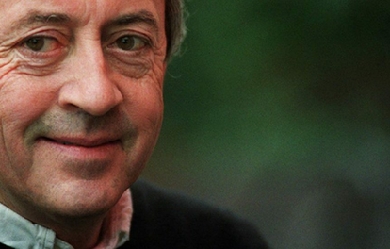
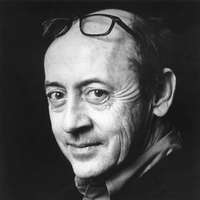
William James “Billy” Collins (born March 22, 1941) is an American poet, appointed as Poet Laureate of the United States from 2001 to 2003. He is a Distinguished Professor at Lehman College of the City University of New York and is the Senior Distinguished Fellow of the Winter Park Institute, Florida. Collins was recognized as a Literary Lion of the New York Public Library (1992) and selected as the New York State Poet for 2004 through 2006. He is (in 2015) a teacher in the MFA program at Stony Brook Southampton. Early years Collins was born in Manhattan to William and Katherine Collins and grew up in Queens and White Plains. Collins was a very late child who parents were both 39 at the time, which was very late back then. William, his dad was from a big family from Ireland and Katherine his mom was from Canada. Katherine Collins was a nurse who stopped working to raise the couple’s only child. Mrs. Collins had the ability to recite verses on almost any subject, which she often did, and cultivated in her young son the love of words, both written and spoken. Billy Collins attended Archbishop Stepinac High School in White Plains and received a B.A. in English from the College of the Holy Cross in 1963; he received his M.A. and Ph.D in Romantic Poetry from the University of California, Riverside. His professors at Riverside included Victorian scholar and poet Robert Peters. In 1975 Collins founded The Mid-Atlantic Review with his friend Walter Blanco and Steve Bailey. As a kid in middle school Collins was writing dark, Gothic-poetry. Collins started to get more into poetry because his dad would bring Poetry magazine home from his work. There he came under the influence of contemporary poets like Karl Shapiro, Howard Nemerov and Reed Whittemore.During his adolescence he was influence by Beat Generation with poems like “Howl”; who were a group of authors around the 50’s after WWII who would write about materialism, human condition and religion. Career Collins is a Distinguished Professor of English at Lehman College in the Bronx, where he joined the faculty in 1968. Additionally, he is a founding Advisory Board member of the CUNY Institute for Irish-American Studies at Lehman College. He also has taught and served as a visiting writer at Sarah Lawrence College in Bronxville, New York as well as teaching workshops across the U.S. and in Ireland. Collins is a member of the faculty of SUNY Stony Brook Southampton, where (2015) he teaches poetry workshops. Collins was named U.S. Poet Laureate in 2001 and held the title until 2003. Collins served as Poet Laureate for the State of New York from 2004 until 2006. Collins enjoyed a stint with the Winter Park Institute in Winter Park, Florida, an affiliate of Rollins College. Named the Senior Distinguished Fellow at the Winter Park Institute, his affiliation that began in 2008 ended in 2015 when the college’s interim president, Craig MacAllaster, emailed Collins saying his contract would not be renewed because of budget issues. Collins invited friends of his to be guests at the Institute, including such luminaries as Pulitzer Prize winners Jules Feiffer and Marsha Norman, Paul Simon, Sir Paul McCartney, and Jane Pauley. In 2012, Collins became Poetry Consultant for Smithsonian Magazine. During the summer of 2013, Collins guest hosted Garrison Keillor’s popular daily radio broadcast, The Writer’s Alamanac, on NPR. Collins has been invited to read at The White House three times—in 2001, 2011, and 2014. In 2014 he traveled to Russia as a cultural emissary of the U.S. State Department. In 2013 and 2015, Collins toured with the singer-songwriter Aimee Mann, performing on stage with her in a music-poetry-conversation format. Collins and Paul Simon have engaged in four onstage conversations about poetry, music, and lyrics, starting in 2008. The conversations were held in 2008 at New York’s 92nd Street Y and The Winter Park Institute, in 2013 at the Chautauqua Institution, and in 2013 at Emory University as part of the Richard Ellman Lectures in Modern Literature, where Simon was the 2013 Richard Ellman Lecturer. Collins presented a TED talk, Everyday moments, caught in time at TED 2012. Collins, as one of the Favorite 100 TED speakers of all time, was invited to give another TED talk at TED 2014 in Vancouver, Canada. As U.S. Poet Laureate, Collins read his poem The Names at a special joint session of the United States Congress on September 6, 2002, held to remember the victims of the 9/11 attacks. Though, unlike their British counterparts, U.S. poets laureate are not asked or expected to write occasional poetry, Collins was asked by the Librarian of Congress to write a poem especially for that event. Collins initially refused to read “The Names” in public, though he has read it two times in public since 2002. He vowed not to include it in any of his books, refusing to capitalize on the 9/11 attacks. However, “The Names” was included in the The Poets Laureate Anthology put out by the Library of Congress, for which Collins wrote the foreword. The only book-published version of “The Names”, it contains a number of regrettable typographical errors. The poem also appeared in the New York Times, September 6, 2002. Collins finally agreed to include “The Names” in his new and selected volume Aimless Love in 2013. As Poet Laureate, Collins instituted the program Poetry 180 for high schools. Collins chose 180 poems for the program and the accompanying book, Poetry 180: A Turning Back to Poetry—one for each day of the school year. Collins edited a second anthology, 180 More Extraordinary Poems for Every Day to refresh the supply of available poems. The program is online, and poems are available there for no charge. In 1997, Collins recorded The Best Cigarette, a collection of 34 of his poems, that would become a bestseller. In 2005, the CD was re-released under a Creative Commons license, allowing free, non-commercial distribution of the recording. He also recorded two of his poems for the audio versions of Garrison Keillor’s collection Good Poems (2002). Collins has appeared on Keillor’s radio show, A Prairie Home Companion, numerous times, where he gained a portion of his large following. In 2005, Collins recorded Billy Collins Live: A Performance in New York City. Collins was introduced by his friend, actor Bill Murray. Billy Collins has been called “The most popular poet in America” by the New York Times. When he moved from the University of Pittsburgh Press to Random House, the advance he received shocked the poetry world—a six-figure sum for a three-book deal, virtually unheard of in poetry. The deal secured for Collins through his literary agent, Chris Calhoun, then of Sterling Lord Literistic, with the editor Daniel Menaker, remained the talk of the poetry world, and indeed the literary world, for quite some time. Over the years, the U.S. magazine Poetry has awarded Collins several prizes in recognition of poems they publish. During the 1990s, Collins won five such prizes. The magazine also selected him as “Poet of the Year” in 1994. In 2005 Collins was the first annual recipient of its Mark Twain Prize for Humor in Poetry. He has received fellowships from the National Endowment for the Arts, the New York Foundation for the Arts and in 1993, from the John Simon Guggenheim Foundation. A major accomplishment of his is in 2002, Collins was asked to write a poem commemorating the first anniversary of the fall of the Twin Towers on September 11. The reading was in front of a joint session of Congress held outside of Washington D.C. One of his most critically acclaimed works, “Fishing on the Susquehanna in July” has been added to the preserved works of the United States Native American literary registry as being deemed a culturally significant poem. The poem has been included on national Advance Placement exams for high school students. In 2012, Collins appeared as himself in an episode of the PBS animated series Martha Speaks. Collins is on the editorial board at The Alaska Quarterly Review. Most recently he contributed to the 30th anniversary edition. He is on the advisory board at the Southern Review, and is similarly named in other journals. Awards and honors 1983 Fellowship from the New York Foundation for the Arts 1986 Fellowship from the National Endowment for the Arts 1991 National Poetry Series publication prize. Winner for Questions About Angels 1992 New York Public Library “Literary Lion” 1993 Fellowship from the John Simon Guggenheim Foundation 1994 Poetry magazine’s “Poet of the Year” 1995 Lenore Marshall Poetry Prize, Academy of American Poets. Shortlist for The Art of Drowning 2001 American Irish Historical Society Cultural Award 2001–2003 United States Poet Laureate 2004–2006 New York State Poet Laureate 2005 Mark Twain Award for Humor in Poetry 2013 Donald Hall-Jane Kenyon Prize in American Poetry 2014 Norman Mailer Prize for Poetry Other Awards include these from Poetry magazine: The Oscar Blumenthal Prize The Bess Hokin Prize The Frederick Bock Prize The Levinson Prize Poetry collections * Pokerface (1977) * Video Poems (1980) * The Apple That Astonished Paris. University of Arkansas Press. 1988. ISBN 978-1-55728-024-4. See also version printed by University of Arkansas Press, 2006, ISBN 978-1-55728-823-3 * The Art of Drowning. University of Pittsburgh Press. 1995. ISBN 978-0-8229-5567-2. * Picnic, Lightning. University of Pittsburgh Press. 1998. ISBN 978-0822956709. * Questions About Angels. University of Pittsburgh Press. 1999. ISBN 978-0822956983. * Taking Off Emily Dickinson’s Clothes. Picador. 2000. ISBN 978-0330376501. * Sailing Alone Around the Room: New and Selected Poems. Random House. 2001–2002. ISBN 978-0-375-75519-4. * Nine Horses. Random House, Inc. 2002. ISBN 978-1-58836-278-0. * The Trouble with Poetry. 2005. ; Random House, Inc., 2007, ISBN 978-0-375-75521-7 * She Was Just Seventeen. Modern Haiku Press. 2006. ISBN 978-0974189420. * Ballistics. 2008. ISBN 978-1-4000-6491-5. * Horoscopes for the Dead. Random House. 2011. ISBN 978-1-4000-6492-2. * Aimless Love. Random House. 2013. ISBN 978-0-6796-4405-7. * Voyage. Bunker Hill Publishing. 2014. ISBN 978-1-59373-154-0. References Wikipedia—https://en.wikipedia.org/wiki/Billy_Collins
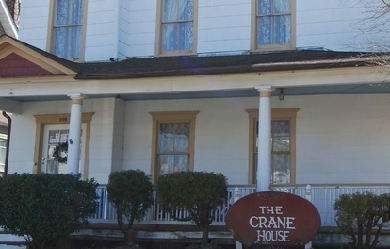
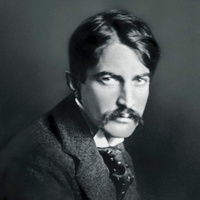
Stephen Crane (November 1, 1871– June 5, 1900) was an American poet, novelist, and short story writer. Prolific throughout his short life, he wrote notable works in the Realist tradition as well as early examples of American Naturalism and Impressionism. He is recognized by modern critics as one of the most innovative writers of his generation. The ninth surviving child of Protestant Methodist parents, Crane began writing at the age of four and had published several articles by the age of 16. Having little interest in university studies, he left college in 1891 to work as a reporter and writer. Crane’s first novel was the 1893 Bowery tale Maggie: A Girl of the Streets, generally considered by critics to be the first work of American literary Naturalism. He won international acclaim in 1895 for his Civil War novel The Red Badge of Courage, which he wrote without having any battle experience. In 1896, Crane endured a highly publicized scandal after appearing as a witness in the trial of a suspected prostitute, an acquaintance named Dora Clark. Late that year he accepted an offer to travel to Cuba as a war correspondent. As he waited in Jacksonville, Florida, for passage, he met Cora Taylor, with whom he began a lasting relationship. En route to Cuba, Crane’s vessel the SS Commodore, sank off the coast of Florida, leaving him and others adrift for 30 hours in a dinghy. Crane described the ordeal in “The Open Boat”. During the final years of his life, he covered conflicts in Greece (accompanied by Cora, recognized as the first woman war correspondent) and later lived in England with her. He was befriended by writers such as Joseph Conrad and H. G. Wells. Plagued by financial difficulties and ill health, Crane died of tuberculosis in a Black Forest sanatorium in Germany at the age of 28. At the time of his death, Crane was considered an important figure in American literature. After he was nearly forgotten for two decades, critics revived interest in his life and work. Crane’s writing is characterized by vivid intensity, distinctive dialects, and irony. Common themes involve fear, spiritual crises and social isolation. Although recognized primarily for The Red Badge of Courage, which has become an American classic, Crane is also known for his poetry, journalism, and short stories such as “The Open Boat”, “The Blue Hotel”, “The Bride Comes to Yellow Sky”, and The Monster. His writing made a deep impression on 20th-century writers, most prominent among them Ernest Hemingway, and is thought to have inspired the Modernists and the Imagists. Biography Early years Stephen Crane was born on November 1, 1871, in Newark, New Jersey, to Jonathan Townley Crane, a minister in the Methodist Episcopal church, and Mary Helen Peck Crane, daughter of a clergyman, George Peck. He was the fourteenth and last child born to the couple. At 45, Helen Crane had suffered the early deaths of her previous four children, each of whom died within one year of birth. Nicknamed “Stevie” by the family, he joined eight surviving brothers and sisters—Mary Helen, George Peck, Jonathan Townley, William Howe, Agnes Elizabeth, Edmund Byran, Wilbur Fiske, and Luther. The Cranes were descended from Jaspar Crane, a founder of New Haven Colony, who had migrated there from England in 1639. Stephen was named for a putative founder of Elizabethtown, New Jersey, who had, according to family tradition, come from England or Wales in 1665, as well as his great-great-grandfather Stephen Crane (1709–1780), a Revolutionary War patriot who served as New Jersey delegate to the First Continental Congress in Philadelphia. Crane later wrote that his father, Dr. Crane, “was a great, fine, simple mind,” who had written numerous tracts on theology. Although his mother was a popular spokeswoman for the Woman’s Christian Temperance Union and a highly religious woman, Crane wrote that he did not believe “she was as narrow as most of her friends or family.” The young Stephen was raised primarily by his sister Agnes, who was 15 years his senior. The family moved to Port Jervis, New York, in 1876, where Dr. Crane became the pastor of Drew Methodist Church, a position that he retained until his death. As a child, Stephen was often sickly and afflicted by constant colds. When the boy was almost two, his father wrote in his diary that his youngest son became “so sick that we are anxious about him.” Despite his fragile nature, Crane was an intelligent child who taught himself to read before the age of four. His first known inquiry, recorded by his father, dealt with writing; at the age of three, while imitating his brother Townley’s writing, he asked his mother, “how do you spell O?” In December 1879, Crane wrote a poem about wanting a dog for Christmas. Entitled “I’d Rather Have –”, it is his first surviving poem. Stephen was not regularly enrolled in school until January 1880, but he had no difficulty in completing two grades in six weeks. Recalling this feat, he wrote that it “sounds like the lie of a fond mother at a teaparty, but I do remember that I got ahead very fast and that father was very pleased with me.” Dr. Crane died on February 16, 1880, at the age of 60; Stephen was eight years old. Some 1,400 people mourned Dr. Crane at his funeral, more than double the size of his congregation. After her husband’s death, Mrs. Crane moved to Roseville, near Newark, leaving Stephen in the care of his older brother Edmund, with whom the young boy lived with cousins in Sussex County. He next lived with his brother William, a lawyer, in Port Jervis for several years. His older sister Helen took him to Asbury Park to be with their brother Townley and his wife, Fannie. Townley was a professional journalist; he headed the Long Branch department of both the New-York Tribune and the Associated Press, and also served as editor of the Asbury Park Shore Press. Agnes, another Crane sister, joined the siblings in New Jersey. She took a position at Asbury Park’s intermediate school and moved in with Helen to care for the young Stephen. Within a couple of years, the Crane family suffered more losses. First, Townley and his wife lost their two young children. His wife Fannie died of Bright’s disease in November 1883. Agnes Crane became ill and died on June 10, 1884, of meningitis at the age of 28. Schooling Crane wrote his first known story, “Uncle Jake and the Bell Handle”, when he was 14. In late 1885, he enrolled at Pennington Seminary, a ministry-focused coeducational boarding school 7 miles (11 km) north of Trenton. His father had been principal there from 1849 to 1858. Soon after her youngest son left for school, Mrs. Crane began suffering what the Asbury Park Shore Press reported as “a temporary aberration of the mind.” She had apparently recovered by early 1886, but later that year, her son, 23-year-old Luther Crane, died after falling in front of an oncoming train while working as a flagman for the Erie Railroad. It was the fourth death in six years among Stephen’s immediate family. After two years, Crane left Pennington for Claverack College, a quasi-military school. He later looked back on his time at Claverack as “the happiest period of my life although I was not aware of it.” A classmate remembered him as a highly literate but erratic student, lucky to pass examinations in math and science, and yet “far in advance of his fellow students in his knowledge of History and Literature”, his favorite subjects. While he held an impressive record on the drill field and baseball diamond, Crane generally did not excel in the classroom. Not having a middle name, as was customary among other students, he took to signing his name “Stephen T. Crane” in order “to win recognition as a regular fellow”. Crane was seen as friendly, but also moody and rebellious. He sometimes skipped class in order to play baseball, a game in which he starred as catcher. He was also greatly interested in the school’s military training program. He rose rapidly in the ranks of the student battalion. One classmate described him as “indeed physically attractive without being handsome”, but he was aloof, reserved and not generally popular at Claverack. Although academically weak, Crane gained experience at Claverack that provided background (and likely some anecdotes from the Civil War veterans on the staff) that proved useful when he came to write The Red Badge of Courage. In mid-1888, Crane became his brother Townley’s assistant at a New Jersey shore news bureau, working there every summer until 1892. Crane’s first publication under his byline was an article on the explorer Henry M. Stanley’s famous quest to find the Scottish missionary David Livingstone in Africa. It appeared in the February 1890 Claverack College Vidette. Within a few months, Crane was persuaded by his family to forgo a military career and transfer to Lafayette College in Easton, Pennsylvania, in order to pursue a mining engineering degree. He registered at Lafayette on September 12, and promptly became involved in extracurricular activities; he took up baseball again and joined the largest fraternity, Delta Upsilon. He also joined both rival literary societies, named for (George) Washington and (Benjamin) Franklin. Crane infrequently attended classes and ended the semester with grades for four of the seven courses he had taken. After one semester, Crane transferred to Syracuse University, where he enrolled as a non-degree candidate in the College of Liberal Arts. He roomed in the Delta Upsilon fraternity house and joined the baseball team. Attending just one class (English Literature) during the middle trimester, he remained in residence while taking no courses in the third trimester. Concentrating on his writing, Crane began to experiment with tone and style while trying out different subjects. He published his fictional story, “Great Bugs of Onondaga,” simultaneously in the Syracuse Daily Standard and the New York Tribune. Declaring college “a waste of time”, Crane decided to become a full-time writer and reporter. He attended a Delta Upsilon chapter meeting on June 12, 1891, but shortly afterward left college for good. Full-time writer In the summer of 1891, Crane often camped with friends in the nearby area of Sullivan County, New York, where his brother Edmund owned a house. He used this area as the geographic setting for several short stories, which were posthumously published in a collection under the title Stephen Crane: Sullivan County Tales and Sketches. Crane showed two of these works to Tribune editor Willis Fletcher Johnson, a friend of the family, who accepted them for the publication. “Hunting Wild Dogs” and “The Last of the Mohicans” were the first of fourteen unsigned Sullivan County sketches and tales that were published in the Tribune between February and July 1892. Crane also showed Johnson an early draft of his first novel, Maggie: A Girl of the Streets. Later that summer, Crane met and befriended author Hamlin Garland, who had been lecturing locally on American literature and the expressive arts; on August 17 he gave a talk on novelist William Dean Howells, which Crane wrote up for the Tribune. Garland became a mentor for and champion of the young writer, whose intellectual honesty impressed him. Their relationship suffered in later years, however, because Garland disapproved of Crane’s alleged immorality, related to his living with a woman married to another man. Stephen moved into his brother Edmund’s house in Lakeview, a suburb of Paterson, New Jersey, in the fall of 1891. From here he made frequent trips into New York City, writing and reporting particularly on its impoverished tenement districts. Crane focused particularly on The Bowery, a small and once prosperous neighborhood in the southern part of Manhattan. After the Civil War, Bowery shops and mansions had given way to saloons, dance halls, brothels and flophouses, all of which Crane frequented. He later said he did so for research. He was attracted to the human nature found in the slums, considering it “open and plain, with nothing hidden”. Believing nothing honest and unsentimental had been written about the Bowery, Crane became determined to do so himself; this was the setting of his first novel. On December 7, 1891, Crane’s mother died at the age of 64, and the 20-year-old appointed Edmund as his guardian. Despite being frail, undernourished and suffering from a hacking cough, which did not prevent him from smoking cigarettes, in the spring of 1892 Crane began a romance with Lily Brandon Munroe, a married woman who was estranged from her husband. Although Munroe later said Crane “was not a handsome man”, she admired his “remarkable almond-shaped gray eyes.” He begged her to elope with him, but her family opposed the match because Crane lacked money and prospects, and she declined. Their last meeting likely occurred in April 1898, when he again asked her to run away with him and she again refused. Between July 2 and September 11, 1892, Crane published at least ten news reports on Asbury Park affairs. Although a Tribune colleague stated that Crane “was not highly distinguished above any other boy of twenty who had gained a reputation for saying and writing bright things,” that summer his reporting took on a more skeptical, hypocrisy-deflating tone. A storm of controversy erupted over a report he wrote on the Junior Order of United American Mechanics’ American Day Parade, entitled “Parades and Entertainments”. Published on August 21, the report juxtaposes the “bronzed, slope-shouldered, uncouth” marching men “begrimed with dust” and the spectators dressed in “summer gowns, lace parasols, tennis trousers, straw hats and indifferent smiles”. Believing they were being ridiculed, some JOUAM marchers were outraged and wrote to the editor. The owner of the Tribune, Whitelaw Reid, was that year’s Republican vice-presidential candidate, and this likely increased the sensitivity of the paper’s management to the issue. Although Townley wrote a piece for the Asbury Park Daily Press in his brother’s defense, the Tribune quickly apologized to its readers, calling Stephen Crane’s piece “a bit of random correspondence, passed inadvertently by the copy editor”. Hamlin Garland and biographer John Barry attested that Crane told them he had been dismissed by the Tribune, although Willis Fletcher Johnson later denied this. The paper did not publish any of Crane’s work after 1892. Life in New York Crane struggled to make a living as a free-lance writer, contributing sketches and feature articles to various New York newspapers. In October 1892, he moved into a rooming house in Manhattan whose boarders were a group of medical students. During this time, he expanded or entirely reworked Maggie: A Girl of the Streets, which is about a girl who “blossoms in a mud-puddle” and becomes a pitiful victim of circumstance. In the winter of 1893, Crane took the manuscript of Maggie to Richard Watson Gilder, who rejected it for publication in The Century Magazine. Crane decided to publish it privately, with money he had inherited from his mother. The novel was published in late February or early March 1893 by a small printing shop that usually printed medical books and religious tracts. The typewritten title page for the Library of Congress copyright application read simply: "A Girl of the Streets, / A Story of New York. /—By—/Stephen Crane." The name “Maggie” was added to the title later. Crane used the pseudonym “Johnston Smith” for the novel’s initial publication, later telling friend and artist Corwin Knapp Linson that the nom de plume was the “commonest name I could think of. I had an editor friend named Johnson, and put in the ”t", and no one could find me in the mob of Smiths." Hamlin Garland reviewed the work in the June 1893 issue of The Arena, calling it “the most truthful and unhackneyed study of the slums I have yet read, fragment though it is.” Despite this early praise, Crane became depressed and destitute from having spent $869 for 1,100 copies of a novel that did not sell; he ended up giving a hundred copies away. He would later remember “how I looked forward to publication and pictured the sensation I thought it would make. It fell flat. Nobody seemed to notice it or care for it... Poor Maggie! She was one of my first loves.” In March 1893, Crane spent hours lounging in Linson’s studio while having his portrait painted. He became fascinated with issues of the Century that were largely devoted to famous battles and military leaders from the Civil War. Frustrated with the dryly written stories, Crane stated, “I wonder that some of those fellows don’t tell how they felt in those scraps. They spout enough of what they did, but they’re as emotionless as rocks.” Crane returned to these magazines during subsequent visits to Linson’s studio, and eventually the idea of writing a war novel overtook him. He would later state that he “had been unconsciously working the detail of the story out through most of his boyhood” and had imagined “war stories ever since he was out of knickerbockers.” This novel would ultimately become The Red Badge of Courage. From the beginning, Crane wished to show how it felt to be in a war by writing “a psychological portrayal of fear.” Conceiving his story from the point of view of a young private who is at first filled with boyish dreams of the glory of war and then quickly becomes disillusioned by war’s reality, Crane borrowed the private’s surname, “Fleming”, from his sister-in-law’s maiden name. He later said that the first paragraphs came to him with “every word in place, every comma, every period fixed.” Working mostly nights, he wrote from around midnight until four or five in the morning. Because he could not afford a typewriter, he wrote carefully in ink on legal-sized paper, seldom crossing through or interlining a word. If he did change something, he would rewrite the whole page. While working on his second novel, Crane remained prolific, concentrating on publishing stories to stave off poverty; “An Experiment in Misery”, based on Crane’s experiences in the Bowery, was printed by the New York Press. He also wrote five or six poems a day. In early 1894, he showed some of his poems, or “lines” as he called them, to Hamlin Garland, who said he read “some thirty in all” with “growing wonder.” Although Garland and William Dean Howells encouraged him to submit his poetry for publication, Crane’s free verse was too unconventional for most. After brief wrangling between poet and publisher, Copeland & Day accepted Crane’s first book of poems, The Black Riders and Other Lines, although it would not be published until after The Red Badge of Courage. He received a 10 percent royalty, and the publisher assured him that the book would be in a form “more severely classic than any book ever yet issued in America.” In the spring of 1894, Crane offered the finished manuscript of The Red Badge of Courage to McClure’s Magazine, which had become the foremost magazine for Civil War literature. While McClure’s delayed giving him an answer on his novel, they offered him an assignment writing about the Pennsylvania coal mines. “In the Depths of a Coal Mine”, a story with pictures by Linson, was syndicated by McClure’s in a number of newspapers, heavily edited. Crane was reportedly disgusted by the cuts, asking Linson: “Why the hell did they send me up there then? Do they want the public to think the coal mines gilded ball-rooms with the miners eating ice-cream in boiled shirt-fronts?” Sources report that following an encounter with a male prostitute that spring, Crane began a novel on the subject entitled Flowers of Asphalt, which he later abandoned. The manuscript has never been recovered. After discovering that McClure’s could not afford to pay him, Crane took his war novel to Irving Bacheller of the Bacheller-Johnson Newspaper Syndicate, which agreed to publish The Red Badge of Courage in serial form. Between the third and the ninth of December 1894, The Red Badge of Courage was published in some half-dozen newspapers in the United States. Although it was greatly cut for syndication, Bacheller attested to its causing a stir, saying "its quality [was] immediately felt and recognized." The lead editorial in the Philadelphia Press of December 7 said that Crane “is a new name now and unknown, but everybody will be talking about him if he goes on as he has begun”. Travels and fame At the end of January 1895, Crane left on what he called “a very long and circuitous newspaper trip” to the west. While writing feature articles for the Bacheller syndicate, he traveled to Saint Louis, Missouri, Nebraska, New Orleans, Galveston, Texas and then Mexico City. Irving Bacheller would later state that he “sent Crane to Mexico for new color”, which the author found in the form of Mexican slum life. Whereas he found the lower class in New York pitiful, he was impressed by the “superiority” of the Mexican peasants’ contentment and "even refuse[d] to pity them.” Returning to New York five months later, Crane joined the Lantern (alternately spelled “Lanthom” or “Lanthorne”) Club organized by a group of young writers and journalists. The Club, located on the roof of an old house on William Street near the Brooklyn Bridge, served as a drinking establishment of sorts and was decorated to look like a ship’s cabin. There Crane ate one good meal a day, although friends were troubled by his “constant smoking, too much coffee, lack of food and poor teeth”, as Nelson Greene put it. Living in near-poverty and greatly anticipating the publication of his books, Crane began work on two more novels: The Third Violet and George’s Mother. The Black Riders was published by Copeland & Day shortly before his return to New York in May, but it received mostly criticism, if not abuse, for the poems’ unconventional style and use of free verse. A piece in the Bookman called Crane “the Aubrey Beardsley of poetry,” and a commentator from the Chicago Daily Inter-Ocean stated that “there is not a line of poetry from the opening to the closing page. Whitman’s Leaves of Grass were luminous in comparison. Poetic lunacy would be a better name for the book.” In June, the New York Tribune dismissed the book as “so much trash.” Crane was pleased that the book was “making some stir”. In contrast to the reception for Crane’s poetry, The Red Badge of Courage was welcomed with acclaim after its publication by Appleton in September 1895. For the next four months the book was in the top six on various bestseller lists around the country. It arrived on the literary scene “like a flash of lightning out of a clear winter sky”, according to H. L. Mencken, who was about 15 at the time. The novel also became popular in Britain; Joseph Conrad, a future friend of Crane, wrote that the novel “detonated... with the impact and force of a twelve-inch shell charged with a very high explosive.” Appleton published two, possibly three, printings in 1895 and as many as eleven more in 1896. Although some critics considered the work overly graphic and profane, it was widely heralded for its realistic portrayal of war and unique writing style. The Detroit Free Press declared that The Red Badge would give readers “so vivid a picture of the emotions and the horrors of the battlefield that you will pray your eyes may never look upon the reality.” Wanting to capitalize on the success of The Red Badge, McClure Syndicate offered Crane a contract to write a series on Civil War battlefields. Because it was a wish of his to “visit the battlefield—which I was to describe—at the time of year when it was fought”, Crane agreed to take the assignment. Visiting battlefields in Northern Virginia, including Fredericksburg, he would later produce five more Civil War tales: “Three Miraculous Soldiers”, “The Veteran”, “An Indiana Campaign”, “An Episode of War” and The Little Regiment. Scandal At the age of 24, Crane, who was reveling in his success, became involved in a highly publicized case involving a suspected prostitute named Dora Clark. At 2 a.m. on September 16, 1896, he escorted two chorus girls and Clark from New York City’s Broadway Garden, a popular “resort” where he had interviewed the women for a series he was writing. As Crane saw one woman safely to a streetcar, a plainclothes policeman named Charles Becker arrested the other two for solicitation; Crane was threatened with arrest when he tried to interfere. One of the women was released after Crane confirmed her erroneous claim that she was his wife, but Clark was charged and taken to the precinct. Against the advice of the arresting sergeant, Crane made a statement confirming Dora Clark’s innocence, stating that “I only know that while with me she acted respectably, and that the policeman’s charge was false.” On the basis of Crane’s testimony, Clark was discharged. The media seized upon the story; news spread to Philadelphia, Boston and beyond, with papers focusing on Crane’s courage. The Stephen Crane story, as it became known, soon became a source for ridicule; the Chicago Dispatch in particular quipped that “Stephen Crane is respectfully informed that association with women in scarlet is not necessarily a 'Red Badge of Courage’ ”. A couple of weeks after her trial, Clark pressed charges of false arrest against the officer who had arrested her. The next day, the officer physically attacked Clark in the presence of witnesses for having brought charges against him. Crane, who initially went briefly to Philadelphia to escape the pressure of publicity, returned to New York to give testimony at Becker’s trial despite advice given to him from Theodore Roosevelt, who was Police Commissioner at the time and a new acquaintance of Crane. The defense targeted Crane: police raided his apartment and interviewed people who knew him, trying to find incriminating evidence in order to lessen the effect of his testimony. A vigorous cross-examination took place that sought to portray Crane as a man of dubious morals; while the prosecution proved that he frequented brothels, Crane claimed this was merely for research purposes. After the trial ended on October 16, the arresting officer was exonerated, but Crane’s reputation was ruined. Cora Taylor and the Commodore shipwreck Given $700 in Spanish gold by the Bacheller-Johnson syndicate to work as a war correspondent in Cuba as the Spanish–American War was pending, the 25-year-old Crane left New York on November 27, 1896, on a train bound for Jacksonville, Florida. Upon arrival in Jacksonville, he registered at the St. James Hotel under the alias of Samuel Carleton to maintain anonymity while seeking passage to Cuba. While waiting for a boat, he toured the city and visited the local brothels. Within days he met 31-year-old Cora Taylor, proprietor of the downtown bawdy house Hotel de Dream. Born into a respectable Boston family, Taylor (whose legal name was Cora Ethel Stewart) had already had two brief marriages; her first husband, Vinton Murphy, divorced her on grounds of adultery. In 1889, she had married British Captain Donald William Stewart. She left him in 1892 for another man, but was still legally married. By the time Crane arrived, Taylor had been in Jacksonville for two years. She lived a bohemian lifestyle, owned a hotel of assignation, and was a well-known and respected local figure. The two spent much time together while Crane awaited his departure. He was finally cleared to leave for the Cuban port of Cienfuegos on New Year’s Eve aboard the SS Commodore. The ship sailed from Jacksonville with 27 or 28 men and a cargo of supplies and ammunition for the Cuban rebels. On the St. Johns River and less than 2 miles (3.2 km) from Jacksonville, Commodore struck a sandbar in a dense fog and damaged its hull. Although towed off the sandbar the following day, it was beached again in Mayport and again damaged. A leak began in the boiler room that evening and, as a result of malfunctioning water pumps, the ship came to a standstill about 16 miles (26 km) from Mosquito Inlet. As the ship took on more water, Crane described the engine room as resembling “a scene at this time taken from the middle kitchen of hades.” Commodore’s lifeboats were lowered in the early hours of the morning on January 2, 1897 and the ship ultimately sank at 7 a.m. Crane was one of the last to leave the ship in a 10-foot (3.0 m) dinghy. In an ordeal that he recounted in the short story “The Open Boat”, Crane and three other men (including the ship’s Captain) floundered off the coast of Florida for a day and a half before trying to land the dinghy at Daytona Beach. The small boat overturned in the surf, forcing the exhausted men to swim to shore; one of them died. Having lost the gold given to him for his journey, Crane wired Cora Taylor for help. She traveled to Daytona and returned to Jacksonville with Crane the next day, only four days after he had left on the Commodore. The disaster was reported on the front pages of newspapers across the country. Rumors that the ship had been sabotaged were widely circulated but never substantiated. Portrayed favorably and heroically by the press, Crane emerged from the ordeal with his reputation enhanced, if not restored, after the battering he had received in the Dora Clark affair. Meanwhile, Crane’s affair with Taylor blossomed. Three seasons of archaeological investigation were conducted in 2002-04 to examine and document the exposed remains of a wreck near Ponce Inlet, FL conjectured to be that of the SS Commodore. The collected data, and other accumulated evidence, finally substantiated the identification of the Commodore beyond a reasonable doubt. Greco-Turkish War Despite contentment in Jacksonville and the need for rest after his ordeal, Crane became restless. He left Jacksonville on January 11 for New York City, where he applied for a passport to Cuba, Mexico and the West Indies. Spending three weeks in New York, he completed “The Open Boat” and periodically visited Port Jervis to see family. By this time, however, blockades had formed along the Florida coast as tensions rose with Spain, and Crane concluded that he would never be able to travel to Cuba. He sold “The Open Boat” to Scribner’s for $300 in early March. Determined to work as a war correspondent, Crane signed on with William Randolph Hearst’s New York Journal to cover the impending Greco-Turkish conflict. He brought along Taylor, who had sold the Hotel de Dream in order to follow him. On March 20, they sailed first to England, where Crane was warmly received. They arrived in Athens in early April; between April 17 (when Turkey declared war on Greece) and April 22, Crane wrote his first published report of the war, “An Impression of the 'Concert’ ”. When he left for Epirus in the northwest, Taylor remained in Athens, where she became the Greek war’s first woman war correspondent. She wrote under the pseudonym “Imogene Carter” for the New York Journal, a job that Crane had secured for her. They wrote frequently, traveling throughout the country separately and together. The first large battle that Crane witnessed was the Turks’ assault on General Constantine Smolenski’s Greek forces at Velestino. Crane wrote, “It is a great thing to survey the army of the enemy. Just where and how it takes hold upon the heart is difficult of description.” During this battle, Crane encountered “a fat waddling puppy” that he immediately claimed, dubbing it “Velestino, the Journal dog”. Greece and Turkey signed an armistice on May 20, ending the 30-day war; Crane and Taylor left Greece for England, taking two Greek brothers as servants and Velestino the dog with them. England and Spanish–American War After staying in Limpsfield, Surrey, for a few days, Crane and Taylor settled in Ravensbrook, a plain brick villa in Oxted. Referring to themselves as Mr. and Mrs. Crane, the couple lived openly in England, but Crane concealed the relationship from his friends and family in the United States. Admired in England, Crane thought himself attacked back home: “There seem so many of them in America who want to kill, bury and forget me purely out of unkindness and envy and—my unworthiness, if you choose”, he wrote. Velestino the dog sickened and died soon after their arrival in England, on August 1. Crane, who had a great love for dogs, wrote an emotional letter to a friend an hour after the dog’s death, stating that “for eleven days we fought death for him, thinking nothing of anything but his life.” The Limpsfield-Oxted area was home to members of the socialist Fabian Society and a magnet for writers such as Edmund Gosse, Ford Madox Ford and Edward Garnett. Crane also met the Polish-born novelist Joseph Conrad in October 1897, with whom he would have what Crane called a “warm and endless friendship”. Although Crane was confident among peers, strong negative reviews of the recently published The Third Violet were causing his literary reputation to dwindle. Reviewers were also highly critical of Crane’s war letters, deeming them self-centered. Although The Red Badge of Courage had by this time gone through fourteen printings in the United States and six in England, Crane was running out of money. To survive financially, he worked at a feverish pitch, writing prolifically for both the English and the American markets. He wrote in quick succession stories such as The Monster, “The Bride Comes to Yellow Sky”, “Death and the Child” and “The Blue Hotel”. Crane began to attach price tags to his new works of fiction, hoping that “The Bride”, for example, would fetch $175. As 1897 ended, Crane’s money crisis worsened. Amy Leslie, a reporter from Chicago and a former lover, sued him for $550. The New York Times reported that Leslie gave him $800 in November 1896 but that he’d repaid only a quarter of the sum. In February he was summoned to answer Leslie’s claim. The claim was apparently settled out of court, because no record of adjudication exists. Meanwhile, Crane felt “heavy with troubles” and “chased to the wall” by expenses. He confided to his agent that he was $2,000 in debt but that he would “beat it” with more literary output. Soon after the USS Maine exploded in Havana Harbor on February 15, 1898, under suspicious circumstances, Crane was offered a £60 advance by Blackwood’s Magazine for articles “from the seat of war in the event of a war breaking out” between the United States and Spain. His health was failing, and it is believed that signs of his pulmonary tuberculosis, which he may have contracted in childhood, became apparent. With almost no money coming in from his finished stories, Crane accepted the assignment and left Oxted for New York. Taylor and the rest of the household stayed behind to fend off local creditors. Crane applied for a passport and left New York for Key West two days before Congress declared war. While the war idled, he interviewed people and produced occasional copy. In early June, he observed the establishment of an American base in Cuba when Marines seized Guantánamo Bay. He went ashore with the Marines, planning “to gather impressions and write them as the spirit moved.” Although he wrote honestly about his fear in battle, others observed his calmness and composure. He would later recall “this prolonged tragedy of the night” in the war tale “Marines Signaling Under Fire at Guantanamo”. After showing a willingness to serve during fighting at Cuzco, Cuba, by carrying messages to company commanders, Crane was officially cited for his “material aid during the action”. He continued to report upon various battles and the worsening military conditions and praised Theodore Roosevelt’s Rough Riders, despite past tensions with the Commissioner. In early July, Crane was sent to the United States for medical treatment for a high fever. He was diagnosed with yellow fever, then malaria. Upon arrival in Old Point Comfort, Virginia, he spent a few weeks resting in a hotel. Although Crane had filed more than twenty dispatches in the three months he had covered the war, the World’s business manager believed that the paper had not received its money’s worth and fired him. In retaliation, Crane signed with Hearst’s New York Journal with the wish to return to Cuba. He traveled first to Puerto Rico and then to Havana. In September, rumors began to spread that Crane, who was working anonymously, had either been killed or disappeared. He sporadically sent out dispatches and stories; he wrote about the mood in Havana, the crowded city sidewalks, and other topics, but he was soon desperate for money again. Taylor, left alone in England, was also penniless. She became frantic with worry over her lover’s whereabouts; they were not in direct communication until the end of the year. Crane left Havana and arrived in England on January 11, 1899. Death Rent on Ravensbrook had not been paid for a year. Upon returning to England, Crane secured a solicitor to act as guarantor for their debts, after which Crane and Taylor relocated to Brede Place. This manor in Sussex, which dated to the 14th century and had neither electricity nor indoor plumbing, was offered to them by friends at a modest rent. The relocation appeared to give hope to Crane, but his money problems continued. Deciding that he could no longer afford to write for American publications, he concentrated on publishing in English magazines. Crane pushed himself to write feverishly during the first months at Brede; he told his publisher that he was “doing more work now than I have at any other period in my life”. His health worsened, and by late 1899 he was asking friends about health resorts. The Monster and Other Stories was in production and War Is Kind, his second collection of poems, was published in the United States in May. None of his books after The Red Badge of Courage had sold well, and he bought a typewriter to spur output. Active Service, a novella based on Crane’s correspondence experience, was published in October. The New York Times reviewer questioned “whether the author of 'Active Service’ himself really sees anything remarkable in his newspapery hero.” In December, the couple held an elaborate Christmas party at Brede, attended by Conrad, Henry James, H. G. Wells and other friends; it lasted several days. On December 29 Crane suffered a severe pulmonary hemorrhage. In January 1900 he’d recovered sufficiently to work on a new novel, The O’Ruddy, completing 25 of the 33 chapters. Plans were made for him to travel as a correspondent to Gibraltar to write sketches from Saint Helena, the site of a Boer prison, but at the end of March and in early April he suffered two more hemorrhages. Taylor took over most of Crane’s correspondence while he was ill, writing to friends for monetary aid. The couple planned to travel on the continent, but Conrad, upon visiting Crane for the last time, remarked that his friend’s “wasted face was enough to tell me that it was the most forlorn of all hopes.” On May 28, the couple arrived at Badenweiler, Germany, a health spa on the edge of the Black Forest. Despite his weakened condition, Crane continued to dictate fragmentary episodes for the completion of The O’Ruddy. He died on June 5, 1900, at the age of 28. In his will he left everything to Taylor, who took his body to New Jersey for burial. Crane was interred in Evergreen Cemetery in what is now Hillside, New Jersey. Fiction and poetry Style and technique Stephen Crane’s fiction is typically categorized as representative of Naturalism, American realism, Impressionism or a mixture of the three. Critic Sergio Perosa, for example, wrote in his essay, “Stephen Crane fra naturalismo e impressionismo,” that the work presents a “symbiosis” of Naturalistic ideals and Impressionistic methods. When asked whether or not he would write an autobiography in 1896, Crane responded that he “dare not say that I am honest. I merely say that I am as nearly honest as a weak mental machinery will allow.” Similarities between the stylistic techniques in Crane’s writing and Impressionist painting—including the use of color and chiaroscuro—are often cited to support the theory that Crane was not only an Impressionist but also influenced by the movement. H. G. Wells remarked upon “the great influence of the studio” on Crane’s work, quoting a passage from The Red Badge of Courage as an example: “At nightfall the column broke into regimental pieces, and the fragments went into the fields to camp. Tents sprang up like strange plants. Camp fires, like red, peculiar blossoms, dotted the night.... From this little distance the many fires, with the black forms of men passing to and fro before the crimson rays, made weird and satanic effects.” Although no direct evidence exists that Crane formulated a precise theory of his craft, he vehemently rejected sentimentality, asserting that “a story should be logical in its action and faithful to character. Truth to life itself was the only test, the greatest artists were the simplest, and simple because they were true.” Poet and biographer John Berryman suggested that there were three basic variations, or “norms”, of Crane’s narrative style. The first, being “flexible, swift, abrupt and nervous”, is best exemplified in The Red Badge of Courage, while the second ("supple majesty") is believed to relate to “The Open Boat”, and the third ("much more closed, circumstantial and 'normal’ in feeling and syntax") to later works such as The Monster. Crane’s work, however, cannot be determined by style solely on chronology. Not only does his fiction not take place in any particular region with similar characters, but it varies from serious in tone to reportorial writing and light fiction. Crane’s writing, both fiction and nonfiction, is consistently driven by immediacy and is at once concentrated, vivid and intense. The novels and short stories contain poetic characteristics such as shorthand prose, suggestibility, shifts in perspective and ellipses between and within sentences. Similarly, omission plays a large part in Crane’s work; the names of his protagonists are not commonly used and sometimes they are not named at all. Crane was often criticized by early reviewers for his frequent incorporation of everyday speech into dialogue, mimicking the regional accents of his characters with colloquial stylization. This is apparent in his first novel, in which Crane ignored the romantic, sentimental approach of slum fiction; he instead concentrated on the cruelty and sordid aspects of poverty, expressed by the brashness of the Bowery’s crude dialect and profanity, which he used lavishly. The distinct dialect of his Bowery characters is apparent at the beginning of the text; the title character admonishes her brother saying: “Yeh knows it puts mudder out when yes comes home half dead, an’ it’s like we’ll all get a poundin’.” Major themes Crane’s work is often thematically driven by Naturalistic and Realistic concerns, including ideals versus realities, spiritual crises and fear. These themes are particularly evident in Crane’s first three novels, Maggie: A Girl of the Streets, The Red Badge of Courage and George’s Mother. The three main characters search for a way to make their dreams come true, but ultimately suffer from crises of identity. Crane was fascinated by war and death, as well as fire, disfigurement, fear and courage, all of which inspired him to write many works based on these concepts. In The Red Badge of Courage, the main character both longs for the heroics of battle but ultimately fears it, demonstrating the dichotomy of courage and cowardice. He experiences the threat of death, misery and a loss of self. Extreme isolation from society and community is also apparent in Crane’s work. During the most intense battle scenes in The Red Badge of Courage, for example, the story’s focus is mainly “on the inner responses of a self unaware of others”. In “The Open Boat”, “An Experiment in Misery” and other stories, Crane uses light, motion and color to express degrees of epistemological uncertainty. Similar to other Naturalistic writers, Crane scrutinizes the position of man, who has been isolated not only from society, but also from God and nature. “The Open Boat”, for example, distances itself from Romantic optimism and affirmation of man’s place in the world by concentrating on the characters’ isolation. While he lived, Stephen Crane was denominated by critical readers a realist, a naturalist, an impressionist, symbolist, Symboliste, expressionist and ironist; his posthumous life was enriched by critics who read him as nihilistic, existentialist, a neo-Romantic, a sentimentalist, protomodernist, pointilliste, visionist, imagist and, by his most recent biographer, a “bleak naturalist.” At midcentury he was a “predisciple of the New Criticism”; by its end he was “a proto-deconstructionist anti-artist hero” who had “leapfrogged modernism, landing on postmodernist ground.” Or, as Sergio Perosa wrote in 1964, “The critic wanders in a labyrinth of possibilities, which every new turn taken by Crane’s fiction seems to explode or deny.” One undeniable fact about Crane’s work, as Anthony Splendora noted in 2015, is that Death haunts it; like a threatening eclipse it overshadows his best efforts, each of which features the signal demise of a main character. Allegorically, “The Blue Hotel,” at the pinnacle of the short story form, may even be an autothanatography, the author’s intentional exteriorization or objectification, in this case for the purpose of purgation, of his own impending death. Crane’s “Swede” in that story can be taken, following current psychoanalytical theory, as a surrogative, sacrificial victim, ritually to be purged. Transcending this “dark circumstance of composition,” Crane had a particular telos and impetus for his creation: beyond the tautologies that all art is alterity and to some formal extent mimesis, Crane sought and obviously found “a form of catharsis” in writing. This view accounts for his uniqueness, especially as operative through his notorious “disgust” with his family’s religion, their “vacuous, futile psalm-singing”. His favorite book, for example, was Mark Twain’s Life on the Mississippi, in which God is mentioned only twice—once as irony and once as “a swindle.” Not only did Crane call out God specifically with the lines "Well then I hate thee / righteous image" in “The Black Riders” (1895), but even his most hopeful tropes, such as the “comradeship” of his “Open Boat” survivors, make no mention of deity, specifying only “indifferent nature.” His antitheism is most evident in his characterization of the human race as “lice clinging to a space-lost bulb,” a climax-nearing speech in “The Blue Hotel,” Ch. VI. It is possible that Crane utilized religion’s formal psychic space, now suddenly available resulting from the recent “Death of God,” as a milieu for his compensative art. Novels Beginning with the publication of Maggie: A Girl of the Streets in 1893, Crane was recognized by critics mainly as a novelist. Maggie was initially rejected by numerous publishers because of its atypical and true-to-life depictions of class warfare, which clashed with the sentimental tales of that time. Rather than focusing on the very rich or middle class, the novel’s characters are lower-class denizens of New York’s Bowery. The main character, Maggie, descends into prostitution after being led astray by her lover. Although the novel’s plot is simple, its dramatic mood, quick pace and portrayal of Bowery life have made it memorable. Maggie is not merely an account of slum life, but also represents eternal symbols. In his first draft, Crane did not give his characters proper names. Instead, they were identified by epithets: Maggie, for example, was the girl who “blossomed in a mud-puddle” and Pete, her seducer, was a “knight”. The novel is dominated by bitter irony and anger, as well as destructive morality and treacherous sentiment. Critics would later call the novel “the first dark flower of American Naturalism” for its distinctive elements of naturalistic fiction. Written thirty years after the end of the Civil War and before Crane had any experience of battle, The Red Badge of Courage was innovative stylistically as well as psychologically. Often described as a war novel, it focuses less on battle and more on the main character’s psyche and his reactions and responses in war. It is believed that Crane based the fictional battle in the novel on that of Chancellorsville; he may also have interviewed veterans of the 124th New York Volunteer Infantry Regiment, commonly known as the Orange Blossoms, in Port Jervis, New York. Told in a third-person limited point of view, it reflects the private experience of Henry Fleming, a young soldier who flees from combat. The Red Badge of Courage is notable in its vivid descriptions and well-cadenced prose, both of which help create suspense within the story. Similarly, by substituting epithets for characters’ names ("the youth", “the tattered soldier”), Crane injects an allegorical quality into his work, making his characters point to a specific characteristic of man. Like Crane’s first novel, The Red Badge of Courage has a deeply ironic tone which increases in severity as the novel progresses. The title of the work is ironic; Henry wishes “that he, too, had a wound, a red badge of courage”, echoing a wish to have been wounded in battle. The wound he does receive (from the rifle butt of a fleeing Union soldier) is not a badge of courage but a badge of shame. The novel expresses a strong connection between humankind and nature, a frequent and prominent concern in Crane’s fiction and poetry throughout his career. Whereas contemporary writers (Ralph Waldo Emerson, Nathaniel Hawthorne, Henry David Thoreau) focused on a sympathetic bond on the two elements, Crane wrote from the perspective that human consciousness distanced humans from nature. In The Red Badge of Courage, this distance is paired with a great number of references to animals, and men with animalistic characteristics: people “howl”, “squawk”, “growl”, or “snarl”. Since the resurgence of Crane’s popularity in the 1920s, The Red Badge of Courage has been deemed a major American text. The novel has been anthologized numerous times, including in Ernest Hemingway’s 1942 collection Men at War: The Best War Stories of All Time. In the introduction, Hemingway wrote that the novel “is one of the finest books of our literature, and I include it entire because it is all as much of a piece as a great poem is.” Crane’s later novels have not received as much critical praise. After the success of The Red Badge of Courage, Crane wrote another tale set in the Bowery. George’s Mother is less allegorical and more personal than his two previous novels, and it focuses on the conflict between a church-going, temperance-adhering woman (thought to be based on Crane’s mother) and her single remaining offspring, who is a naive dreamer. Critical response to the novel was mixed. The Third Violet, a romance that he wrote quickly after publishing The Red Badge of Courage, is typically considered as Crane’s attempt to appeal to popular audiences. Crane considered it a “quiet little story.” Although it contained autobiographical details, the characters have been deemed inauthentic and stereotypical. Crane’s second to last novel, Active Service, revolves around the Greco-Turkish War of 1897, with which the author was familiar. Although noted for its satirical take on the melodramatic and highly passionate works that were popular of the nineteenth century, the novel was not successful. It is generally accepted by critics that Crane’s work suffered at this point due to the speed which he wrote in order to meet his high expenses. His last novel, a suspenseful and picaresque work entitled The O’Ruddy, was finished posthumously by Robert Barr and published in 1903. Short fiction Crane wrote many different types of fictional pieces while indiscriminately applying to them terms such as “story”, “tale” and “sketch”. For this reason, critics have found clear-cut classification of Crane’s work problematic. While “The Open Boat” and “The Bride Comes to Yellow Sky” are often considered short stories, others are variously identified. In an 1896 interview with Herbert P. Williams, a reporter for the Boston Herald, Crane said that he did “not find that short stories are utterly different in character from other fiction. It seems to me that short stories are the easiest things we write.” During his brief literary career, he wrote more than a hundred short stories and fictional sketches. Crane’s early fiction was based in camping expeditions in his teen years; these stories eventually became known as The Sullivan County Tales and Sketches. He considered these “sketches”, which are mostly humorous and not of the same caliber of work as his later fiction, to be “articles of many kinds,” in that they are part fiction and part journalism. The subject matter for his stories varied extensively. His early New York City sketches and Bowery tales accurately described the results of industrialization, immigration and the growth of cities and their slums. His collection of six short stories, The Little Regiment, covered familiar ground with the American Civil War, a subject for which he became famous with The Red Badge of Courage. Although similar to Crane’s noted novel, The Little Regiment was believed to lack vigor and originality. Realizing the limitations of these tales, Crane wrote: “I have invented the sum of my invention with regard to war and this story keeps me in internal despair.” The Open Boat and Other Tales of Adventure (1898) contains thirteen short stories that deal with three periods in Crane’s life: his Asbury Park boyhood, his trip to the West and Mexico in 1895, and his Cuban adventure in 1897. This collection was well received and included several of his most critically successful works. His 1899 collection, The Monster and Other Stories, was similarly well received. Two posthumously published collections were not as successful. In August 1900 The Whilomville Stories were published, a collection of thirteen stories that Crane wrote during the last year of his life. The work deals almost exclusively with boyhood, and the stories are drawn from events occurring in Port Jervis, where Crane lived from the age of six to eleven. Focusing on small-town America, the stories tend toward sentimentality, but remain perceptive of the lives of children. Wounds in the Rain, published in September 1900, contains fictional tales based on Crane’s reports for the World and the Journal during the Spanish–American War. These stories, which Crane wrote while desperately ill, include “The Price of the Harness” and “The Lone Charge of William B. Perkins” and are dramatic, ironic and sometimes humorous. Despite Crane’s prolific output, only four stories—"The Open Boat", “The Blue Hotel”, “The Bride Comes to Yellow Sky”, and The Monster—have received extensive attention from scholars. H. G. Wells considered “The Open Boat” to be “beyond all question, the crown of all his work”, and it is one of the most frequently discussed of Crane’s works. Poetry Crane’s poems, which he preferred to call “lines”, are typically not given as much scholarly attention as his fiction; no anthology contained Crane’s verse until 1926. Although it is not certain when Crane began to write poetry seriously, he once said that his overall poetic aim was “to give my ideas of life as a whole, so far as I know it”. The poetic style used in both of his books of poetry, The Black Riders and Other Lines and War is Kind, was unconventional for the time in that it was written in free verse without rhyme, meter, or even titles for individual works. They are typically short in length; although several poems, such as “Do not weep, maiden, for war is kind”, use stanzas and refrains, most do not. Crane also differed from his peers and poets of later generations in that his work contains allegory, dialectic and narrative situations. Critic Ruth Miller claimed that Crane wrote “an intellectual poetry rather than a poetry that evokes feeling, a poetry that stimulates the mind rather than arouses the heart”. In the most complexly organized poems, the significance of the states of mind or feelings is ambiguous, but Crane’s poems tend to affirm certain elemental attitudes, beliefs, opinions and stances toward God, man and the universe. The Black Riders in particular is essentially a dramatic concept and the poems provide continuity within the dramatic structure. There is also a dramatic interplay in which there is frequently a major voice reporting an incident seen ("In the desert / I saw a creature, naked, bestial") or experienced ("A learned man came to me once"). The second voice or additional voices represent a point of view which is revealed to be inferior; when these clash, a dominant attitude emerges. Legacy In four years, Crane published five novels, two volumes of poetry, three short story collections, two books of war stories, and numerous works of short fiction and reporting. Today he is mainly remembered for The Red Badge of Courage, which is regarded as an American classic. The novel has been adapted several times for the screen, including John Huston’s 1951 version. By the time of his death, Crane had become one of the best known writers of his generation. His eccentric lifestyle, frequent newspaper reporting, association with other famous authors, and expatriate status made him somewhat of an international celebrity. Although most stories about his life tended toward the romantic, rumors about his alleged drug use and alcoholism persisted long after his death. By the early 1920s, Crane and his work were nearly forgotten. It was not until Thomas Beer published his biography in 1923, which was followed by editor Wilson Follett’s The Work of Stephen Crane (1925–1927), that Crane’s writing came to the attention of a scholarly audience. Crane’s reputation was then enhanced by faithful support from writer friends such as Joseph Conrad, H. G. Wells and Ford Madox Ford, all of whom either published recollections or commented upon their time with Crane. John Berryman’s 1950 biography of Crane further established him as an important American author. Since 1951 there has been a steady outpouring of articles, monographs and reprints in Crane scholarship. Today, Crane is considered one of the most innovative writers of the 1890s. His peers, including Conrad and James, as well as later writers such as Robert Frost, Ezra Pound and Willa Cather, hailed Crane as one of the finest creative spirits of his time. His work was described by Wells as “the first expression of the opening mind of a new period, or, at least, the early emphatic phase of a new initiative.” Wells said that “beyond dispute”, Crane was “the best writer of our generation, and his untimely death was an irreparable loss to our literature.” Conrad wrote that Crane was an “artist” and “a seer with a gift for rendering the significant on the surface of things and with an incomparable insight into primitive emotions”. Crane’s work has proved inspirational for future writers; not only have scholars drawn similarities between Hemingway’s A Farewell to Arms and The Red Badge of Courage, but Crane’s fiction is thought to have been an important inspiration for Hemingway and his fellow Modernists. In 1936, Hemingway wrote in The Green Hills of Africa that “The good writers are Henry James, Stephen Crane, and Mark Twain. That’s not the order they’re good in. There is no order for good writers.” Crane’s poetry is thought to have been a precursor to the Imagist movement, and his short fiction has also influenced American literature. “The Open Boat”, “The Blue Hotel”, The Monster and “The Bride Comes to Yellow Sky” are generally considered by critics to be examples of Crane’s best work. Several institutions and places have endeavored to keep Crane’s legacy alive. Badenweiler and the house where he died became something of a tourist attraction for its fleeting association with the American author; Alexander Woollcott attested to the fact that, long after Crane’s death, tourists would be directed to the room where he died. Columbia University Rare Book and Manuscript Library has a collection of Crane and Taylor’s personal correspondence dating from 1895 to 1908. Near his brother Edmund’s Sullivan County home in New York, where Crane stayed for a short time, a pond is named after him. The Stephen Crane House in Asbury Park, New Jersey, where the author lived with his siblings for nine years, is operated as a museum dedicated to his life and work. Syracuse University has an annual Stephen Crane Lecture Series which is sponsored by the Dikaia Foundation. Columbia University purchased much of the Stephen Crane materials held by Cora Crane at her death. The Crane Collection is one of the largest in the nation of his materials. Columbia University had an exhibit: 'The Tall Swift Shadow of a Ship at Night’: Stephen and Cora Crane, November 2, 1995 through February 16, 1996, about the lives of the couple, featuring letters and other documents and memorabilia. Selected list of works Maggie: A Girl of the Streets (1893) The Red Badge of Courage (1895) The Black Riders and Other Lines (1895) George’s Mother (1896) The Open Boat and Other Tales of Adventure (1898) War is Kind (1899) Active Service (1899) The Monster and Other Stories (1899) Wounds in the Rain (1900) Great battles of the world (1901) The O’Ruddy (1903) References Wikipedia—https://en.wikipedia.org/wiki/Stephen_Crane


